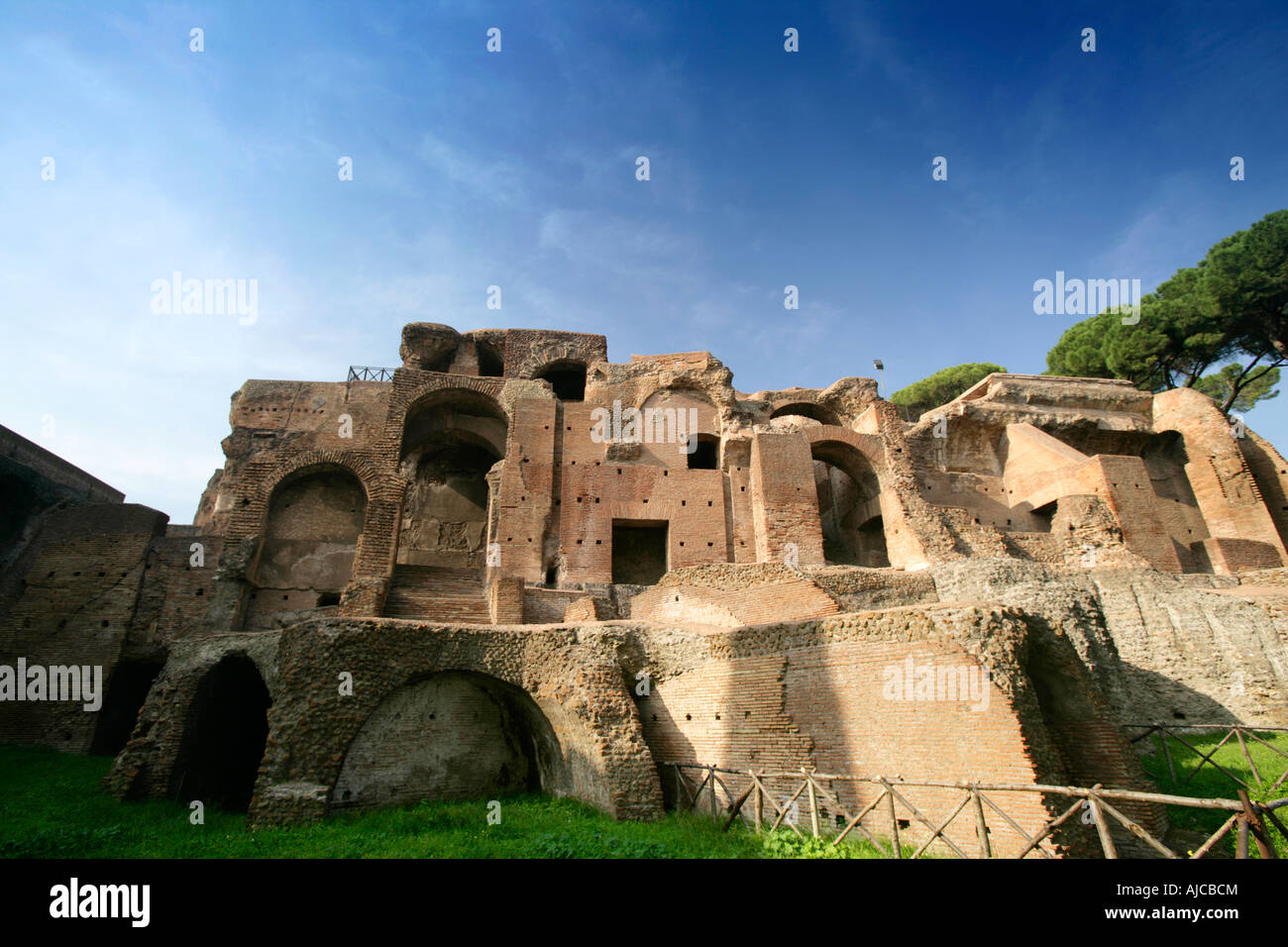Quick filters:
Patrician rome Stock Photos and Images
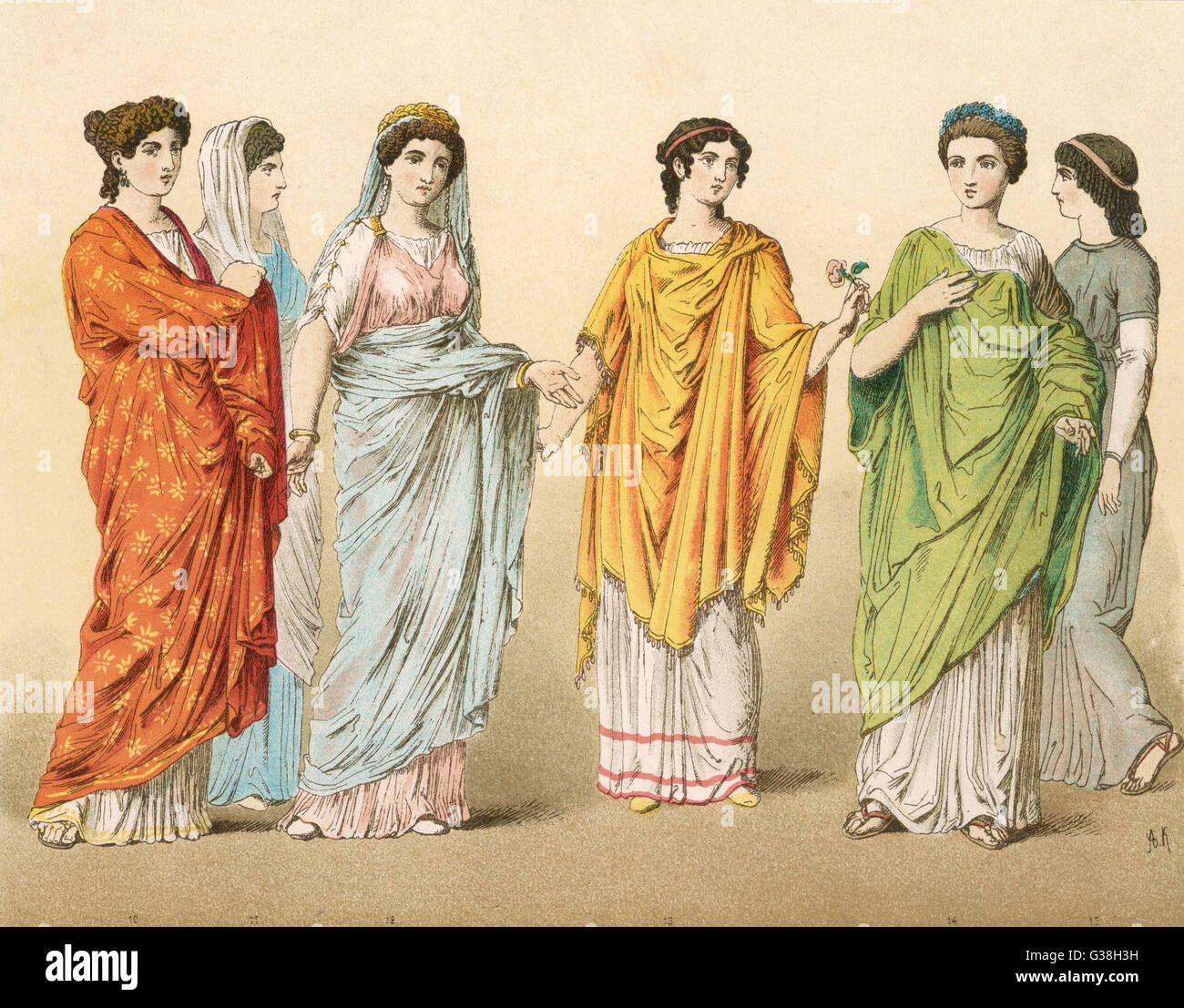 Patrician ladies and a servant Date: ANCIENT ROME Stock Photohttps://www.alamy.com/image-license-details/?v=1https://www.alamy.com/stock-photo-patrician-ladies-and-a-servant-date-ancient-rome-105295221.html
Patrician ladies and a servant Date: ANCIENT ROME Stock Photohttps://www.alamy.com/image-license-details/?v=1https://www.alamy.com/stock-photo-patrician-ladies-and-a-servant-date-ancient-rome-105295221.htmlRMG38H3H–Patrician ladies and a servant Date: ANCIENT ROME
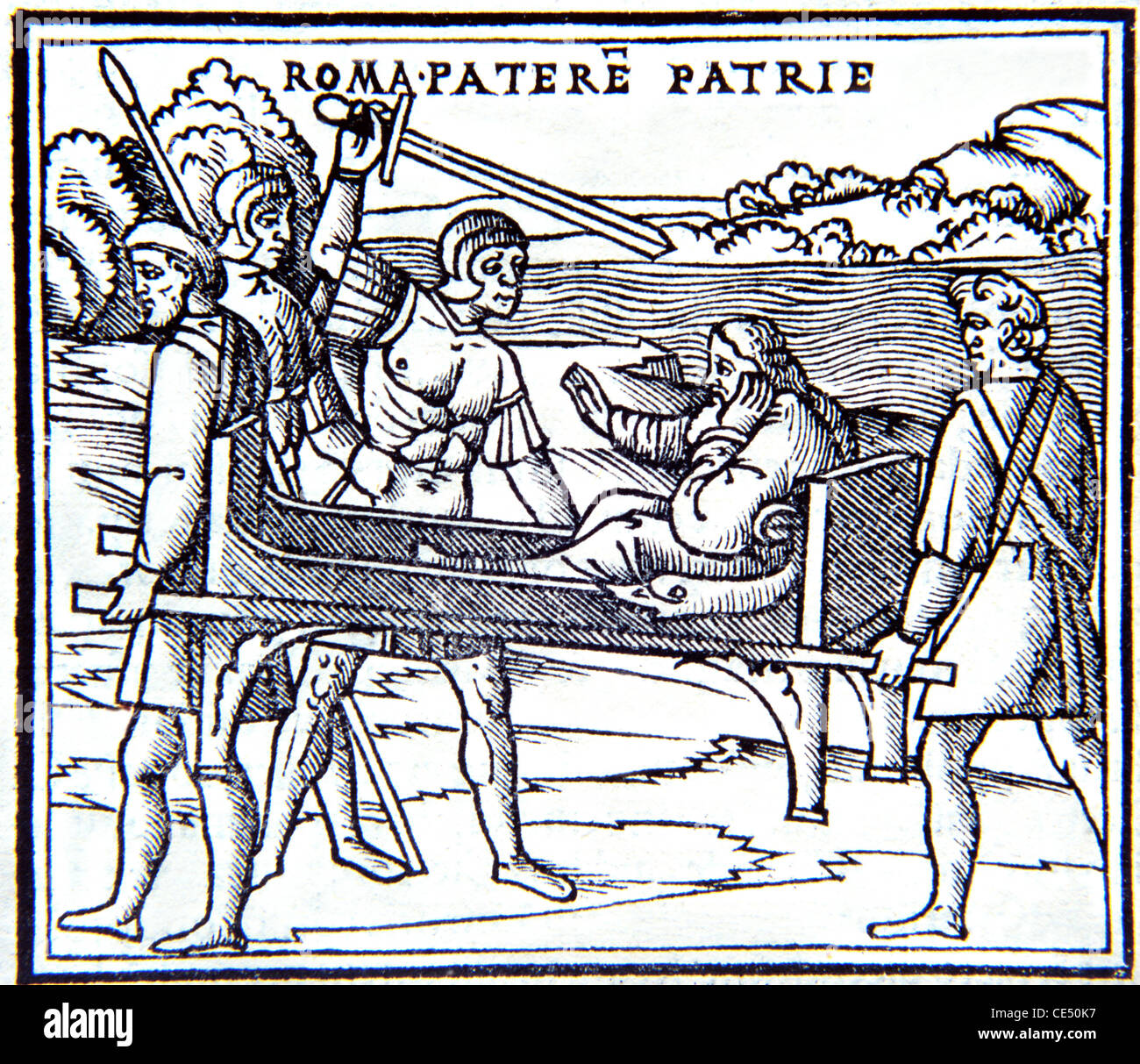 A Roman Patrician or Aristocrat Travels by Sedan Chair, called a Lectica or Sella, in Ancient Rome, c16th Wood Engraving Stock Photohttps://www.alamy.com/image-license-details/?v=1https://www.alamy.com/stock-photo-a-roman-patrician-or-aristocrat-travels-by-sedan-chair-called-a-lectica-43136219.html
A Roman Patrician or Aristocrat Travels by Sedan Chair, called a Lectica or Sella, in Ancient Rome, c16th Wood Engraving Stock Photohttps://www.alamy.com/image-license-details/?v=1https://www.alamy.com/stock-photo-a-roman-patrician-or-aristocrat-travels-by-sedan-chair-called-a-lectica-43136219.htmlRMCE50K7–A Roman Patrician or Aristocrat Travels by Sedan Chair, called a Lectica or Sella, in Ancient Rome, c16th Wood Engraving
 Roman patrician Coriolanus favored the patricians and was banished from Rome. His mother and wife later begged him to spare Rome Stock Photohttps://www.alamy.com/image-license-details/?v=1https://www.alamy.com/stock-photo-roman-patrician-coriolanus-favored-the-patricians-and-was-banished-52517899.html
Roman patrician Coriolanus favored the patricians and was banished from Rome. His mother and wife later begged him to spare Rome Stock Photohttps://www.alamy.com/image-license-details/?v=1https://www.alamy.com/stock-photo-roman-patrician-coriolanus-favored-the-patricians-and-was-banished-52517899.htmlRFD1CB37–Roman patrician Coriolanus favored the patricians and was banished from Rome. His mother and wife later begged him to spare Rome
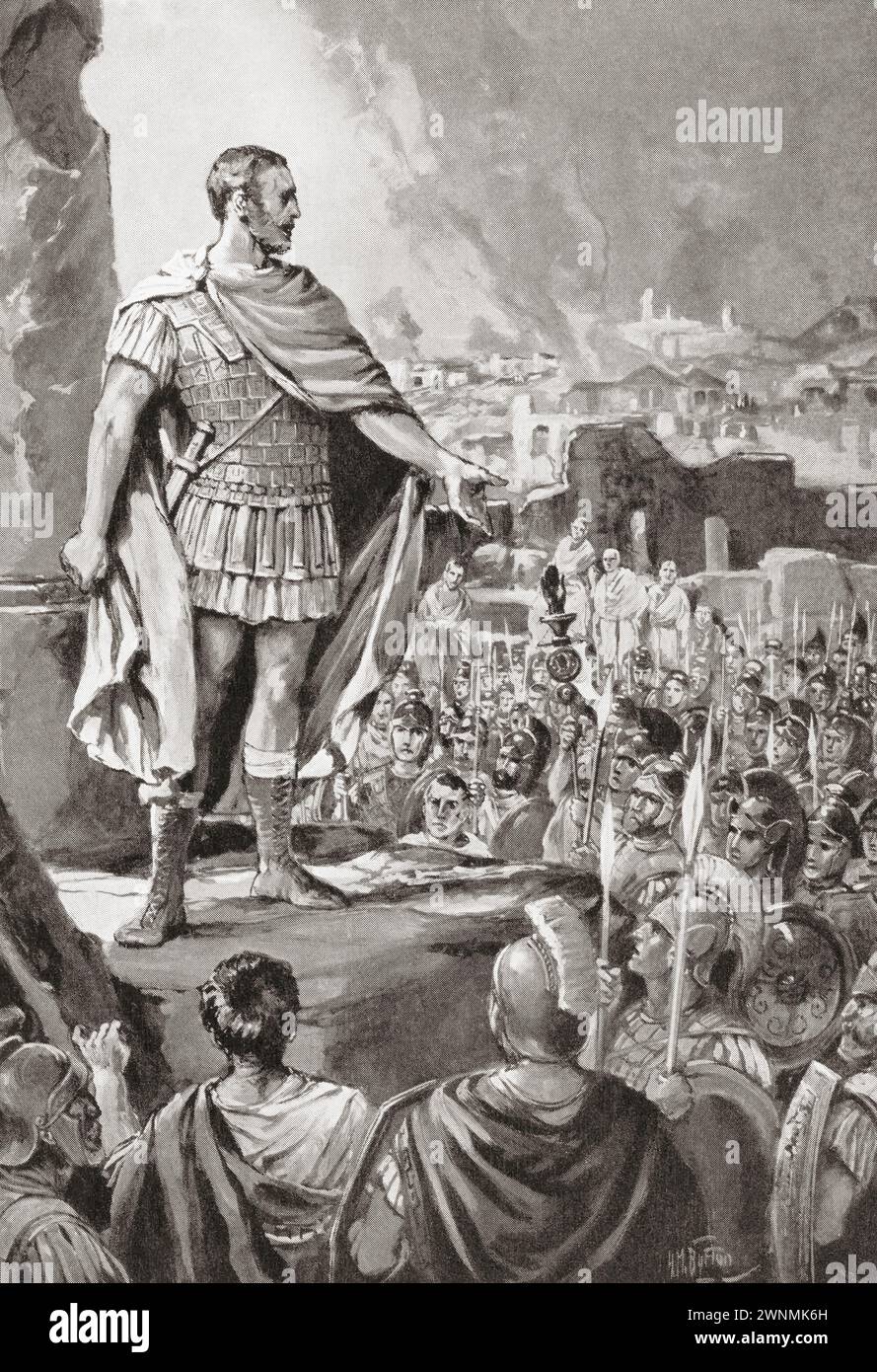 The first secessio plebis of 494 B.C. in ancient Rome. A dispute between the patrician ruling class and the plebeian underclass sparked by discontent about the burden of debt on the poorer plebeian class. Stock Photohttps://www.alamy.com/image-license-details/?v=1https://www.alamy.com/the-first-secessio-plebis-of-494-bc-in-ancient-rome-a-dispute-between-the-patrician-ruling-class-and-the-plebeian-underclass-sparked-by-discontent-about-the-burden-of-debt-on-the-poorer-plebeian-class-image598514409.html
The first secessio plebis of 494 B.C. in ancient Rome. A dispute between the patrician ruling class and the plebeian underclass sparked by discontent about the burden of debt on the poorer plebeian class. Stock Photohttps://www.alamy.com/image-license-details/?v=1https://www.alamy.com/the-first-secessio-plebis-of-494-bc-in-ancient-rome-a-dispute-between-the-patrician-ruling-class-and-the-plebeian-underclass-sparked-by-discontent-about-the-burden-of-debt-on-the-poorer-plebeian-class-image598514409.htmlRM2WNMK6H–The first secessio plebis of 494 B.C. in ancient Rome. A dispute between the patrician ruling class and the plebeian underclass sparked by discontent about the burden of debt on the poorer plebeian class.
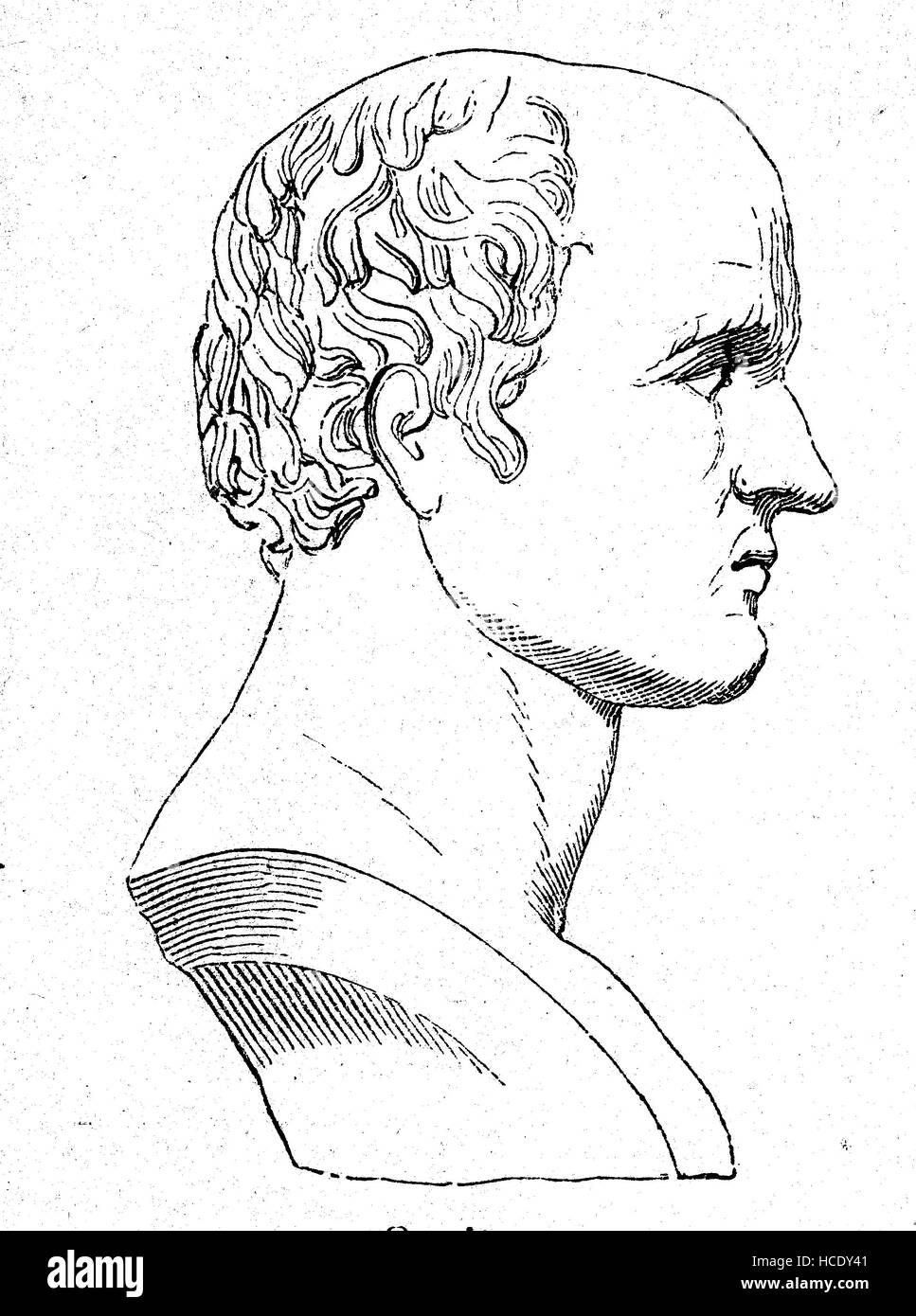 Marcus Aemilius Lepidus 88 BC - 12 BC, was a Roman patrician, the story of the ancient Rome, roman Empire, Italy Stock Photohttps://www.alamy.com/image-license-details/?v=1https://www.alamy.com/stock-photo-marcus-aemilius-lepidus-88-bc-12-bc-was-a-roman-patrician-the-story-128155105.html
Marcus Aemilius Lepidus 88 BC - 12 BC, was a Roman patrician, the story of the ancient Rome, roman Empire, Italy Stock Photohttps://www.alamy.com/image-license-details/?v=1https://www.alamy.com/stock-photo-marcus-aemilius-lepidus-88-bc-12-bc-was-a-roman-patrician-the-story-128155105.htmlRFHCDY41–Marcus Aemilius Lepidus 88 BC - 12 BC, was a Roman patrician, the story of the ancient Rome, roman Empire, Italy
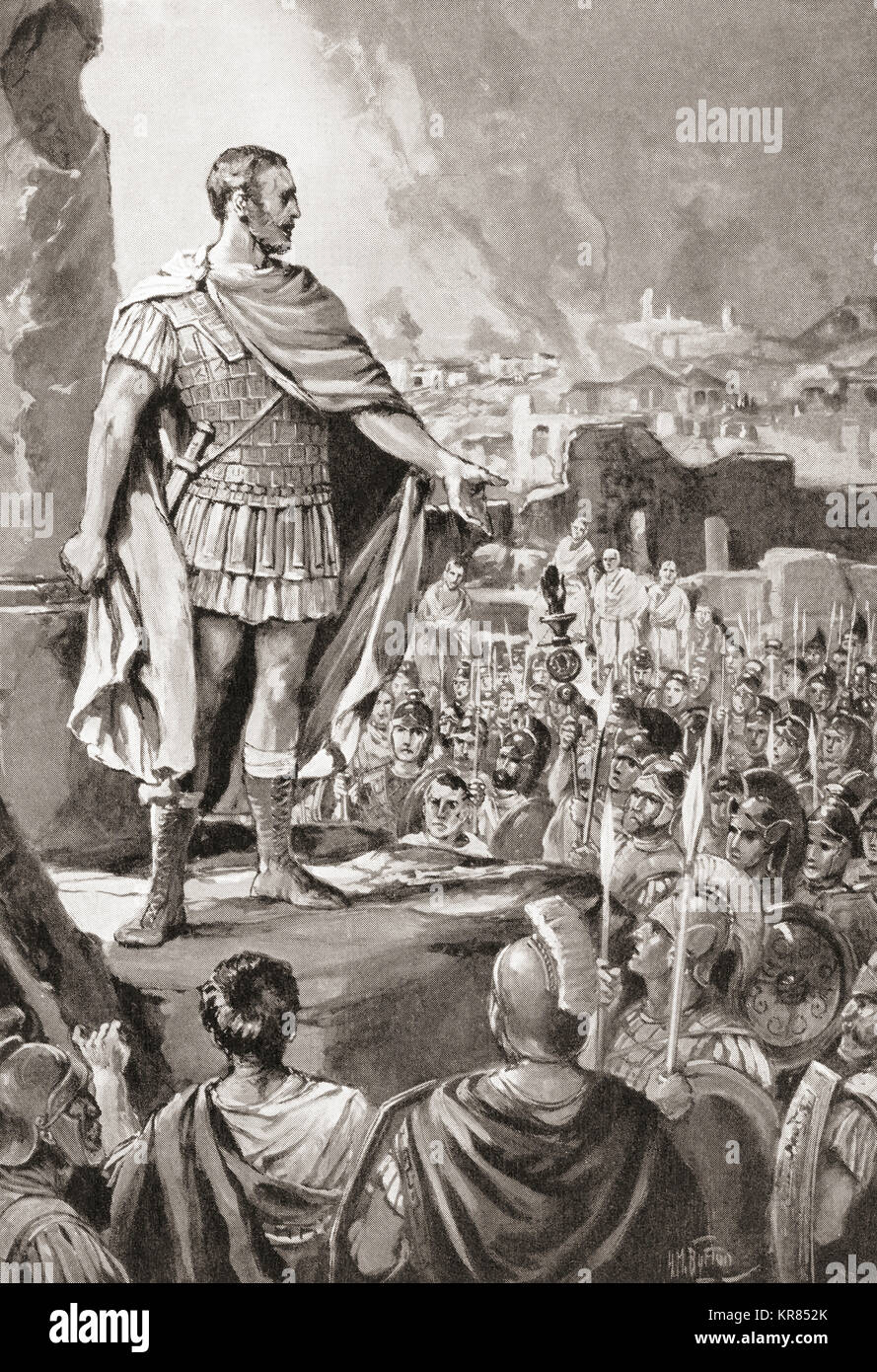 The first secessio plebis of 494 B.C. in ancient Rome. This was a dispute between the patrician ruling class and the plebeian underclass initially sparked by discontent about the burden of debt on the poorer plebeian class. From Hutchinson's History of the Nations, published 1915. Stock Photohttps://www.alamy.com/image-license-details/?v=1https://www.alamy.com/stock-image-the-first-secessio-plebis-of-494-bc-in-ancient-rome-this-was-a-dispute-169210011.html
The first secessio plebis of 494 B.C. in ancient Rome. This was a dispute between the patrician ruling class and the plebeian underclass initially sparked by discontent about the burden of debt on the poorer plebeian class. From Hutchinson's History of the Nations, published 1915. Stock Photohttps://www.alamy.com/image-license-details/?v=1https://www.alamy.com/stock-image-the-first-secessio-plebis-of-494-bc-in-ancient-rome-this-was-a-dispute-169210011.htmlRMKR852K–The first secessio plebis of 494 B.C. in ancient Rome. This was a dispute between the patrician ruling class and the plebeian underclass initially sparked by discontent about the burden of debt on the poorer plebeian class. From Hutchinson's History of the Nations, published 1915.
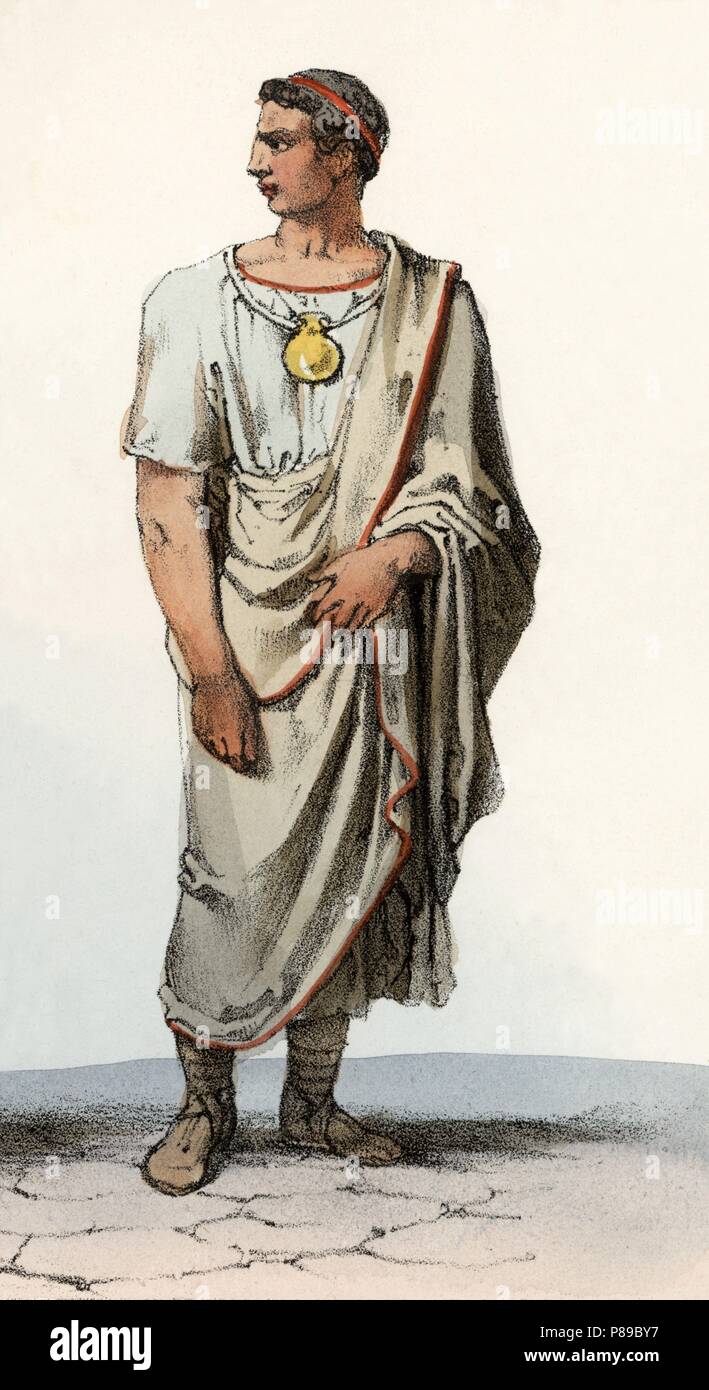 Roma. Edad antigua. Joven patricio romano vestido con la toga senatorial. Grabado de 1900. Stock Photohttps://www.alamy.com/image-license-details/?v=1https://www.alamy.com/roma-edad-antigua-joven-patricio-romano-vestido-con-la-toga-senatorial-grabado-de-1900-image211648619.html
Roma. Edad antigua. Joven patricio romano vestido con la toga senatorial. Grabado de 1900. Stock Photohttps://www.alamy.com/image-license-details/?v=1https://www.alamy.com/roma-edad-antigua-joven-patricio-romano-vestido-con-la-toga-senatorial-grabado-de-1900-image211648619.htmlRMP89BY7–Roma. Edad antigua. Joven patricio romano vestido con la toga senatorial. Grabado de 1900.
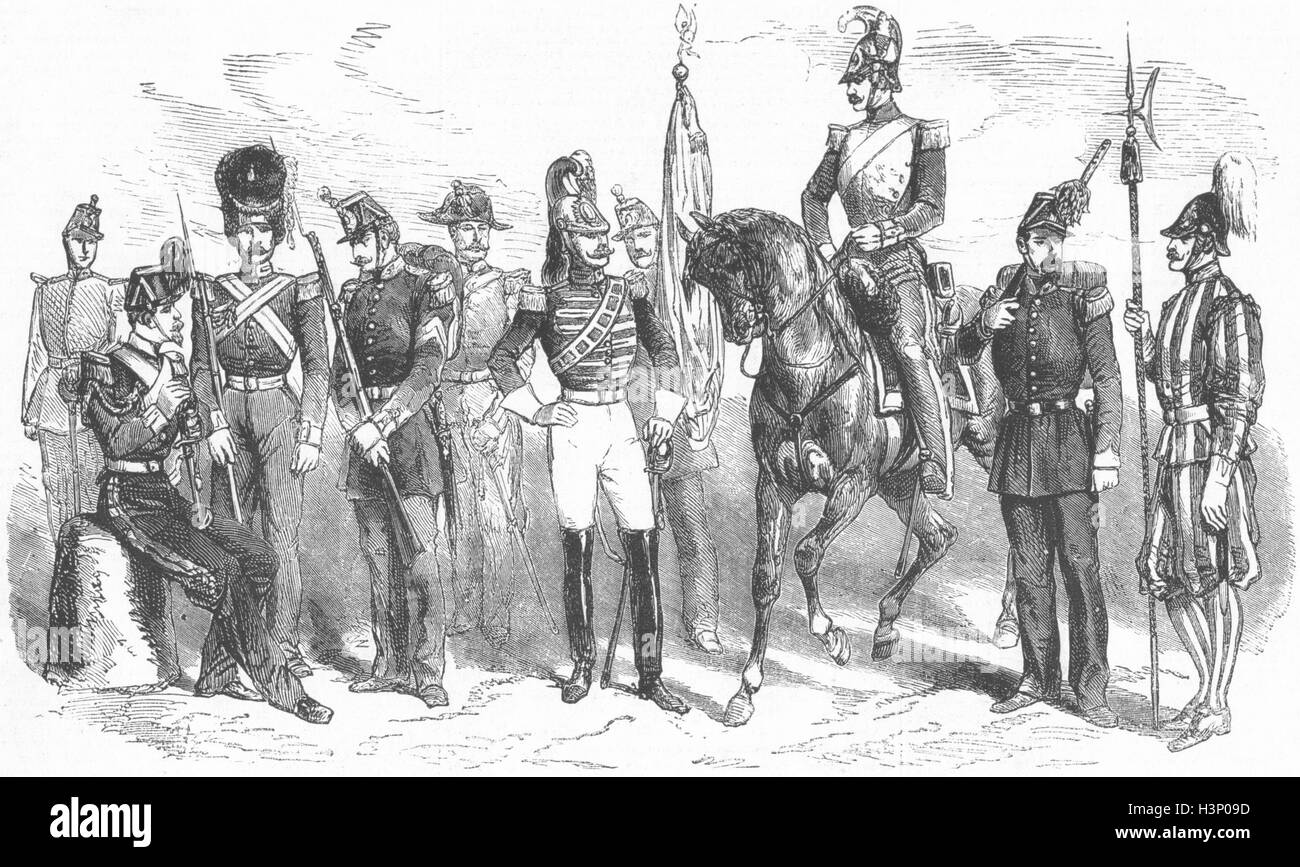 ROME Uniforms, troops, Pope army Palatine, Patrician 1860. Illustrated News of the World Stock Photohttps://www.alamy.com/image-license-details/?v=1https://www.alamy.com/stock-photo-rome-uniforms-troops-pope-army-palatine-patrician-1860-illustrated-122799753.html
ROME Uniforms, troops, Pope army Palatine, Patrician 1860. Illustrated News of the World Stock Photohttps://www.alamy.com/image-license-details/?v=1https://www.alamy.com/stock-photo-rome-uniforms-troops-pope-army-palatine-patrician-1860-illustrated-122799753.htmlRFH3P09D–ROME Uniforms, troops, Pope army Palatine, Patrician 1860. Illustrated News of the World
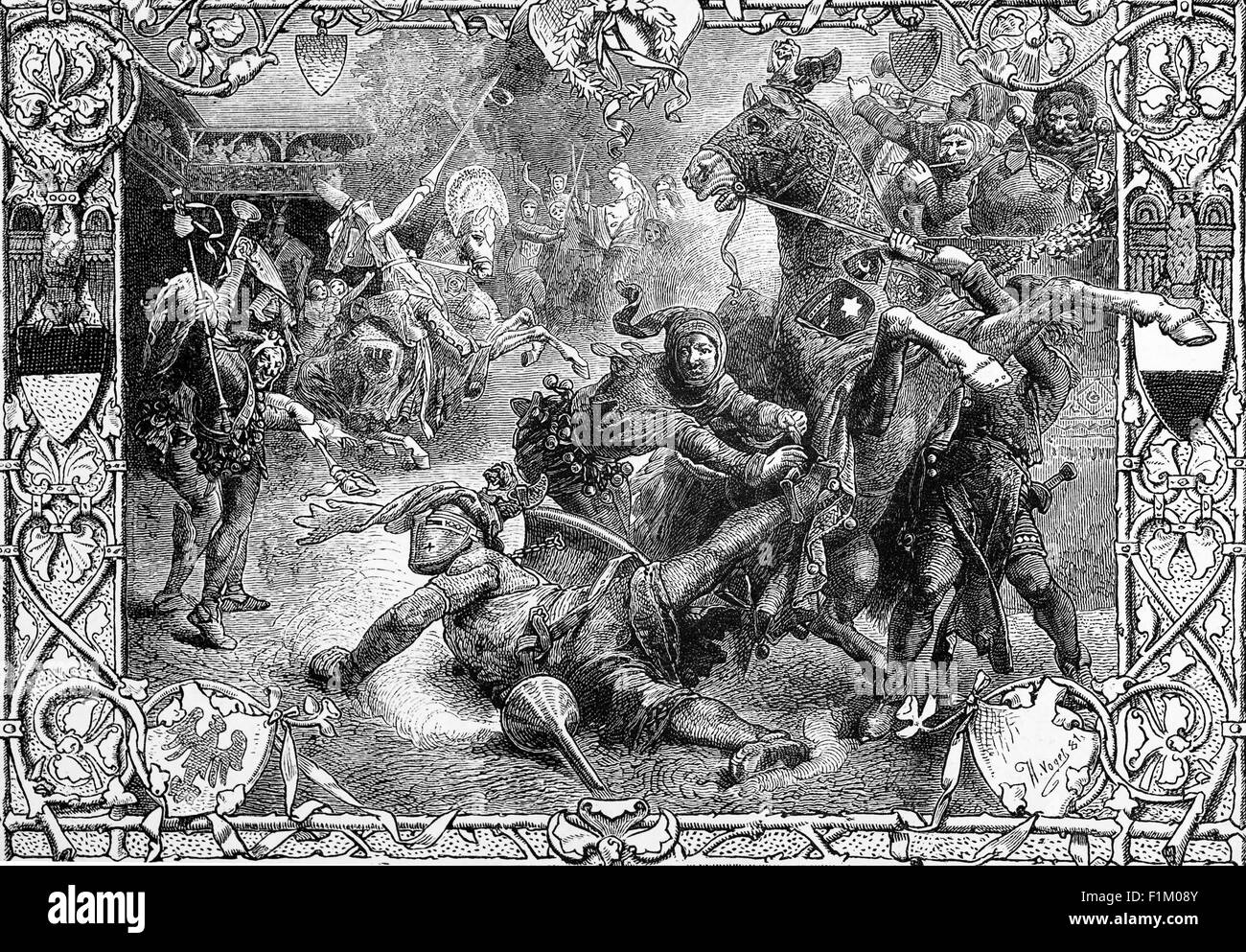 A Patrician Tournament in 16th Century Rome, Italy. They were originally a group of ruling class families in ancient Rome when the city's social structure gave the patricians more political power than the plebeians. After the Western Empire fell, the term 'patrician' continued as a high honorary title in the Byzantine Empire. In the Holy Roman Empire and many medieval Italian republics, patrician classes were formally defined groups of leading Grand Burgher families, especially in Venice and Genoa. Stock Photohttps://www.alamy.com/image-license-details/?v=1https://www.alamy.com/stock-photo-a-patrician-tournament-in-16th-century-rome-italy-they-were-originally-87105787.html
A Patrician Tournament in 16th Century Rome, Italy. They were originally a group of ruling class families in ancient Rome when the city's social structure gave the patricians more political power than the plebeians. After the Western Empire fell, the term 'patrician' continued as a high honorary title in the Byzantine Empire. In the Holy Roman Empire and many medieval Italian republics, patrician classes were formally defined groups of leading Grand Burgher families, especially in Venice and Genoa. Stock Photohttps://www.alamy.com/image-license-details/?v=1https://www.alamy.com/stock-photo-a-patrician-tournament-in-16th-century-rome-italy-they-were-originally-87105787.htmlRMF1M08Y–A Patrician Tournament in 16th Century Rome, Italy. They were originally a group of ruling class families in ancient Rome when the city's social structure gave the patricians more political power than the plebeians. After the Western Empire fell, the term 'patrician' continued as a high honorary title in the Byzantine Empire. In the Holy Roman Empire and many medieval Italian republics, patrician classes were formally defined groups of leading Grand Burgher families, especially in Venice and Genoa.
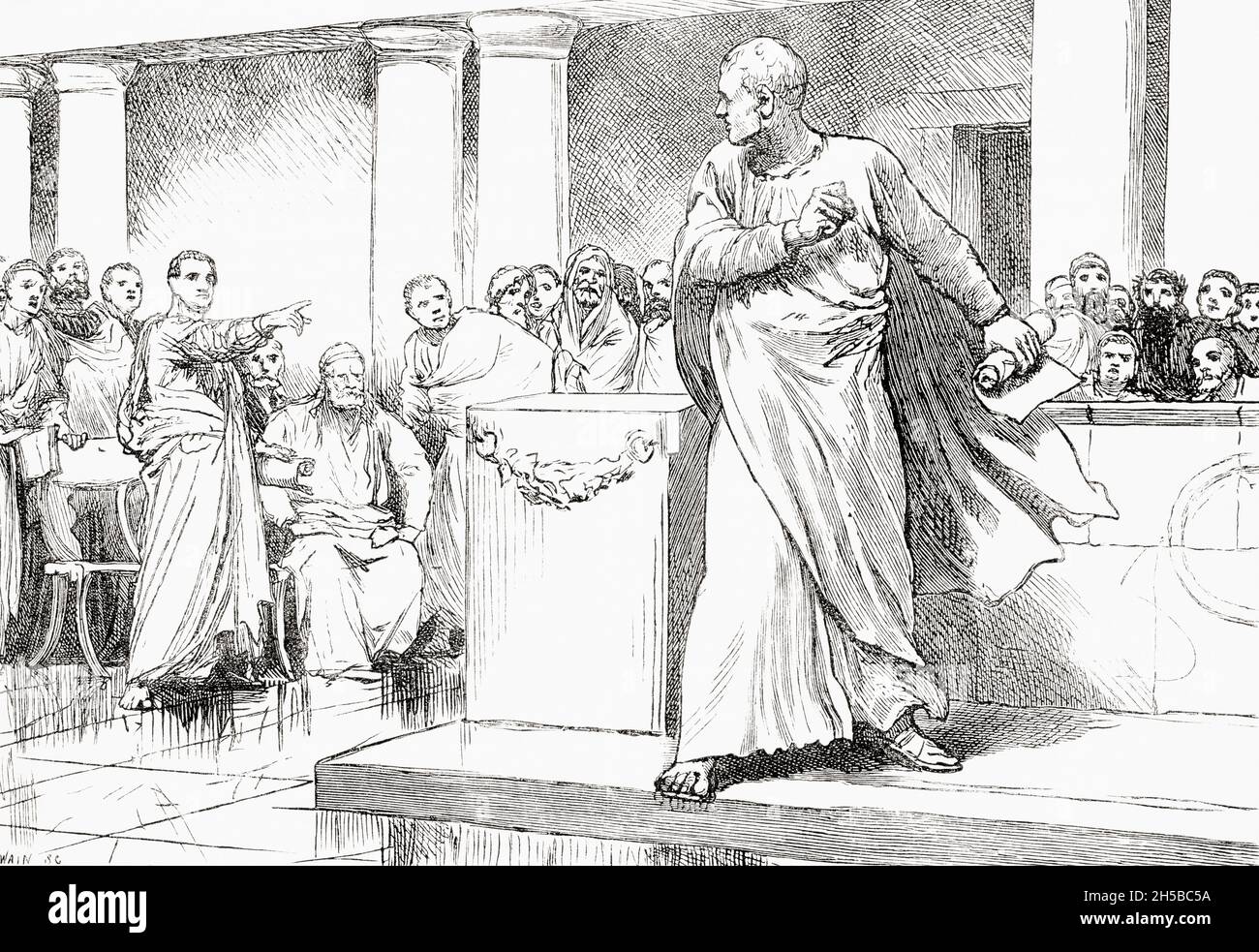 The Catilinarian conspirators before the Senate. Roman patrician Lucius Sergius Catilina, 108–62 BC, also known as Catiline, remembered for his failed attempt to overthrow the Republic. From Cassell's Illustrated Universal History, published 1883. Stock Photohttps://www.alamy.com/image-license-details/?v=1https://www.alamy.com/the-catilinarian-conspirators-before-the-senate-roman-patrician-lucius-sergius-catilina-10862-bc-also-known-as-catiline-remembered-for-his-failed-attempt-to-overthrow-the-republic-from-cassells-illustrated-universal-history-published-1883-image450793878.html
The Catilinarian conspirators before the Senate. Roman patrician Lucius Sergius Catilina, 108–62 BC, also known as Catiline, remembered for his failed attempt to overthrow the Republic. From Cassell's Illustrated Universal History, published 1883. Stock Photohttps://www.alamy.com/image-license-details/?v=1https://www.alamy.com/the-catilinarian-conspirators-before-the-senate-roman-patrician-lucius-sergius-catilina-10862-bc-also-known-as-catiline-remembered-for-his-failed-attempt-to-overthrow-the-republic-from-cassells-illustrated-universal-history-published-1883-image450793878.htmlRM2H5BC5A–The Catilinarian conspirators before the Senate. Roman patrician Lucius Sergius Catilina, 108–62 BC, also known as Catiline, remembered for his failed attempt to overthrow the Republic. From Cassell's Illustrated Universal History, published 1883.
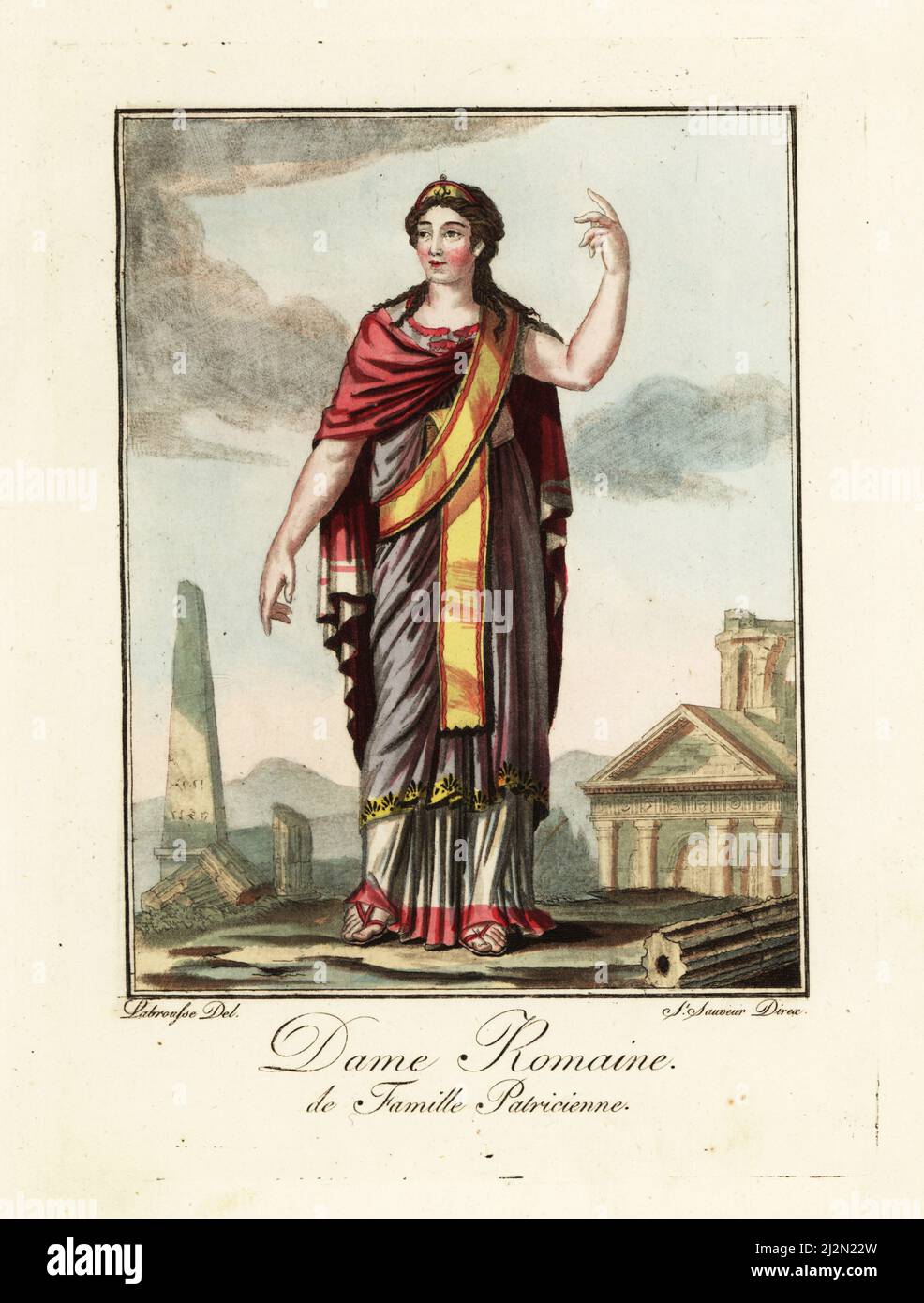 Roman woman from a Patrician family, ancient Rome. With diadem of Juno in her hair, stola (robe) with gold hem, palla (cloak). In front of a temple, obelisk and broken columns. Dame Romaine de Famille Patricienne. Handcoloured copperplate drawn and engraved by L. Labrousse, artist of Bordeaux, under the direction of Jacques Grasset de Saint-Sauveur from his L’antique Rome, ou description historique et pittoresque, Ancient Rome, or historical and picturesque description, Chez Deroy, Paris, 1796. Stock Photohttps://www.alamy.com/image-license-details/?v=1https://www.alamy.com/roman-woman-from-a-patrician-family-ancient-rome-with-diadem-of-juno-in-her-hair-stola-robe-with-gold-hem-palla-cloak-in-front-of-a-temple-obelisk-and-broken-columns-dame-romaine-de-famille-patricienne-handcoloured-copperplate-drawn-and-engraved-by-l-labrousse-artist-of-bordeaux-under-the-direction-of-jacques-grasset-de-saint-sauveur-from-his-lantique-rome-ou-description-historique-et-pittoresque-ancient-rome-or-historical-and-picturesque-description-chez-deroy-paris-1796-image466371889.html
Roman woman from a Patrician family, ancient Rome. With diadem of Juno in her hair, stola (robe) with gold hem, palla (cloak). In front of a temple, obelisk and broken columns. Dame Romaine de Famille Patricienne. Handcoloured copperplate drawn and engraved by L. Labrousse, artist of Bordeaux, under the direction of Jacques Grasset de Saint-Sauveur from his L’antique Rome, ou description historique et pittoresque, Ancient Rome, or historical and picturesque description, Chez Deroy, Paris, 1796. Stock Photohttps://www.alamy.com/image-license-details/?v=1https://www.alamy.com/roman-woman-from-a-patrician-family-ancient-rome-with-diadem-of-juno-in-her-hair-stola-robe-with-gold-hem-palla-cloak-in-front-of-a-temple-obelisk-and-broken-columns-dame-romaine-de-famille-patricienne-handcoloured-copperplate-drawn-and-engraved-by-l-labrousse-artist-of-bordeaux-under-the-direction-of-jacques-grasset-de-saint-sauveur-from-his-lantique-rome-ou-description-historique-et-pittoresque-ancient-rome-or-historical-and-picturesque-description-chez-deroy-paris-1796-image466371889.htmlRM2J2N22W–Roman woman from a Patrician family, ancient Rome. With diadem of Juno in her hair, stola (robe) with gold hem, palla (cloak). In front of a temple, obelisk and broken columns. Dame Romaine de Famille Patricienne. Handcoloured copperplate drawn and engraved by L. Labrousse, artist of Bordeaux, under the direction of Jacques Grasset de Saint-Sauveur from his L’antique Rome, ou description historique et pittoresque, Ancient Rome, or historical and picturesque description, Chez Deroy, Paris, 1796.
 Revolt of the Plebeians against the government of ancient Rome, 207 BC. Hand-colored woodcut Stock Photohttps://www.alamy.com/image-license-details/?v=1https://www.alamy.com/stock-photo-revolt-of-the-plebeians-against-the-government-of-ancient-rome-207-57078934.html
Revolt of the Plebeians against the government of ancient Rome, 207 BC. Hand-colored woodcut Stock Photohttps://www.alamy.com/image-license-details/?v=1https://www.alamy.com/stock-photo-revolt-of-the-plebeians-against-the-government-of-ancient-rome-207-57078934.htmlRMD8T4NA–Revolt of the Plebeians against the government of ancient Rome, 207 BC. Hand-colored woodcut
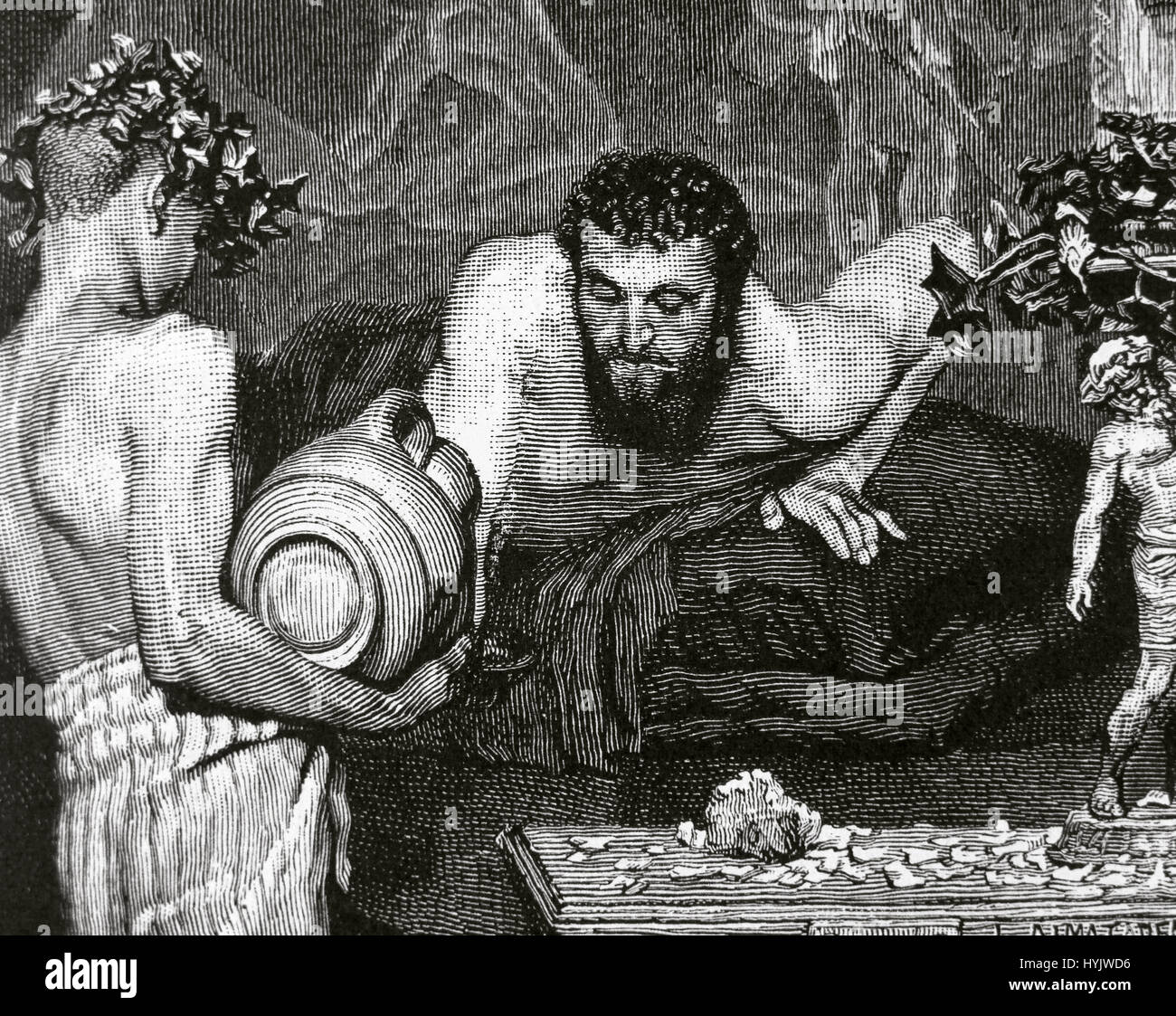 Ancient Rome. Young slave serving a patrician who is lying on a triclinium during a banquet. Engraving in 'La Ilustracion Espanola y Americana' (1887). Stock Photohttps://www.alamy.com/image-license-details/?v=1https://www.alamy.com/stock-photo-ancient-rome-young-slave-serving-a-patrician-who-is-lying-on-a-triclinium-137483394.html
Ancient Rome. Young slave serving a patrician who is lying on a triclinium during a banquet. Engraving in 'La Ilustracion Espanola y Americana' (1887). Stock Photohttps://www.alamy.com/image-license-details/?v=1https://www.alamy.com/stock-photo-ancient-rome-young-slave-serving-a-patrician-who-is-lying-on-a-triclinium-137483394.htmlRMHYJWD6–Ancient Rome. Young slave serving a patrician who is lying on a triclinium during a banquet. Engraving in 'La Ilustracion Espanola y Americana' (1887).
![Cincinnatus Leaves the Plough to Dictate Laws to Rome [Cincinato abandona el arado para dictar leyes a Roma] by Spanish artist Juan Antonio Ribera painted in 1806 showing senators appointing Lucius Quinctius Cincinnatus as dictator to restore order in 458BC and again in 439BC. Stock Photo Cincinnatus Leaves the Plough to Dictate Laws to Rome [Cincinato abandona el arado para dictar leyes a Roma] by Spanish artist Juan Antonio Ribera painted in 1806 showing senators appointing Lucius Quinctius Cincinnatus as dictator to restore order in 458BC and again in 439BC. Stock Photo](https://c8.alamy.com/comp/2KFEXXW/cincinnatus-leaves-the-plough-to-dictate-laws-to-rome-cincinato-abandona-el-arado-para-dictar-leyes-a-roma-by-spanish-artist-juan-antonio-ribera-painted-in-1806-showing-senators-appointing-lucius-quinctius-cincinnatus-as-dictator-to-restore-order-in-458bc-and-again-in-439bc-2KFEXXW.jpg) Cincinnatus Leaves the Plough to Dictate Laws to Rome [Cincinato abandona el arado para dictar leyes a Roma] by Spanish artist Juan Antonio Ribera painted in 1806 showing senators appointing Lucius Quinctius Cincinnatus as dictator to restore order in 458BC and again in 439BC. Stock Photohttps://www.alamy.com/image-license-details/?v=1https://www.alamy.com/cincinnatus-leaves-the-plough-to-dictate-laws-to-rome-cincinato-abandona-el-arado-para-dictar-leyes-a-roma-by-spanish-artist-juan-antonio-ribera-painted-in-1806-showing-senators-appointing-lucius-quinctius-cincinnatus-as-dictator-to-restore-order-in-458bc-and-again-in-439bc-image491438609.html
Cincinnatus Leaves the Plough to Dictate Laws to Rome [Cincinato abandona el arado para dictar leyes a Roma] by Spanish artist Juan Antonio Ribera painted in 1806 showing senators appointing Lucius Quinctius Cincinnatus as dictator to restore order in 458BC and again in 439BC. Stock Photohttps://www.alamy.com/image-license-details/?v=1https://www.alamy.com/cincinnatus-leaves-the-plough-to-dictate-laws-to-rome-cincinato-abandona-el-arado-para-dictar-leyes-a-roma-by-spanish-artist-juan-antonio-ribera-painted-in-1806-showing-senators-appointing-lucius-quinctius-cincinnatus-as-dictator-to-restore-order-in-458bc-and-again-in-439bc-image491438609.htmlRM2KFEXXW–Cincinnatus Leaves the Plough to Dictate Laws to Rome [Cincinato abandona el arado para dictar leyes a Roma] by Spanish artist Juan Antonio Ribera painted in 1806 showing senators appointing Lucius Quinctius Cincinnatus as dictator to restore order in 458BC and again in 439BC.
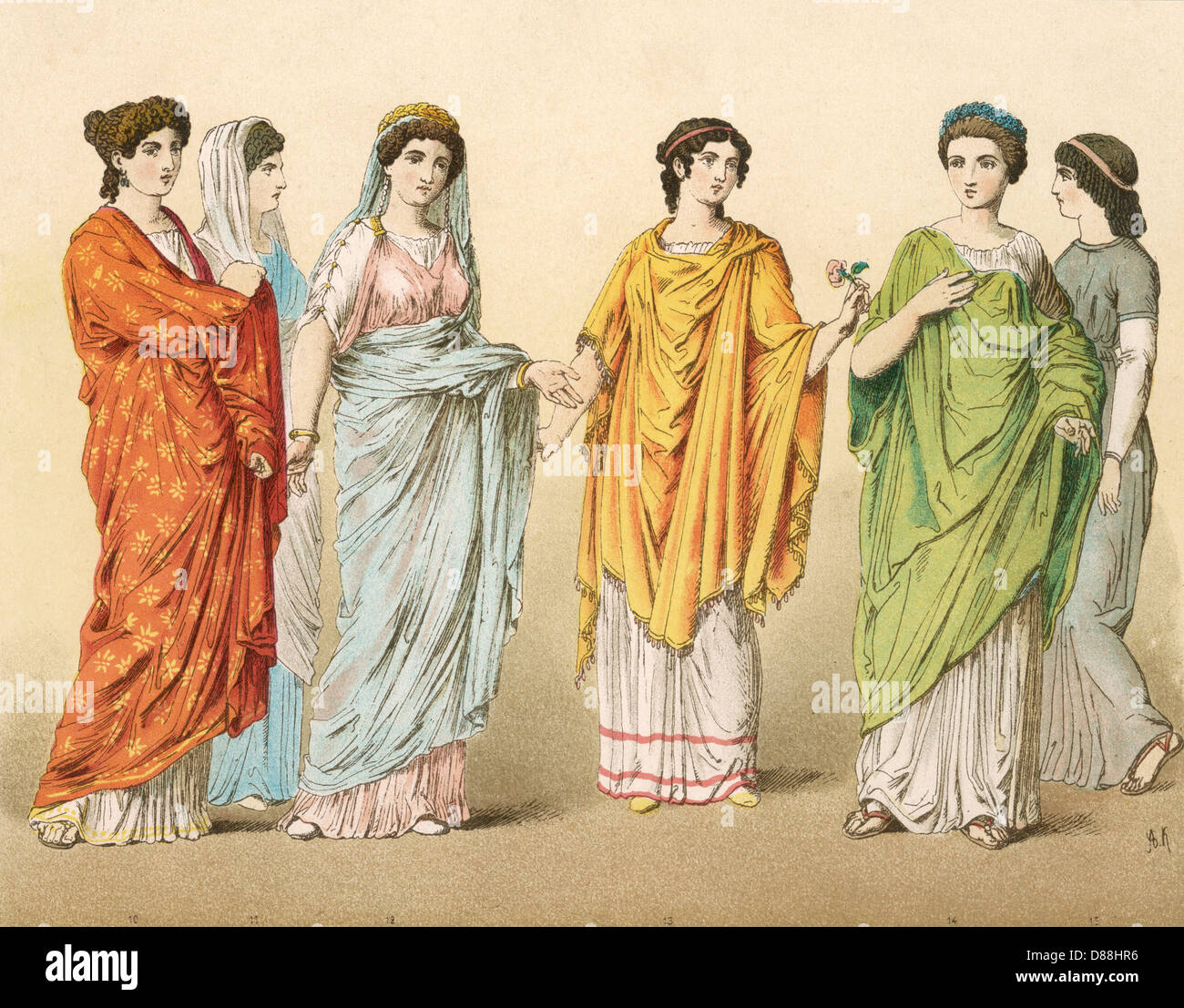 PATRICIAN LADIES & SLAVE Stock Photohttps://www.alamy.com/image-license-details/?v=1https://www.alamy.com/stock-photo-patrician-ladies-slave-56737946.html
PATRICIAN LADIES & SLAVE Stock Photohttps://www.alamy.com/image-license-details/?v=1https://www.alamy.com/stock-photo-patrician-ladies-slave-56737946.htmlRMD88HR6–PATRICIAN LADIES & SLAVE
 Lucius Quinctius Cincinnatus (c. 519-430 BC). Painting entitled 'Cincinnatus Leaves the Plough to Dictate Laws to Rome' by Juan Antonio Ribera, oil on canvas, c. 1806 Stock Photohttps://www.alamy.com/image-license-details/?v=1https://www.alamy.com/lucius-quinctius-cincinnatus-c-519-430-bc-painting-entitled-cincinnatus-leaves-the-plough-to-dictate-laws-to-rome-by-juan-antonio-ribera-oil-on-canvas-c-1806-image504159006.html
Lucius Quinctius Cincinnatus (c. 519-430 BC). Painting entitled 'Cincinnatus Leaves the Plough to Dictate Laws to Rome' by Juan Antonio Ribera, oil on canvas, c. 1806 Stock Photohttps://www.alamy.com/image-license-details/?v=1https://www.alamy.com/lucius-quinctius-cincinnatus-c-519-430-bc-painting-entitled-cincinnatus-leaves-the-plough-to-dictate-laws-to-rome-by-juan-antonio-ribera-oil-on-canvas-c-1806-image504159006.htmlRM2M86BXP–Lucius Quinctius Cincinnatus (c. 519-430 BC). Painting entitled 'Cincinnatus Leaves the Plough to Dictate Laws to Rome' by Juan Antonio Ribera, oil on canvas, c. 1806
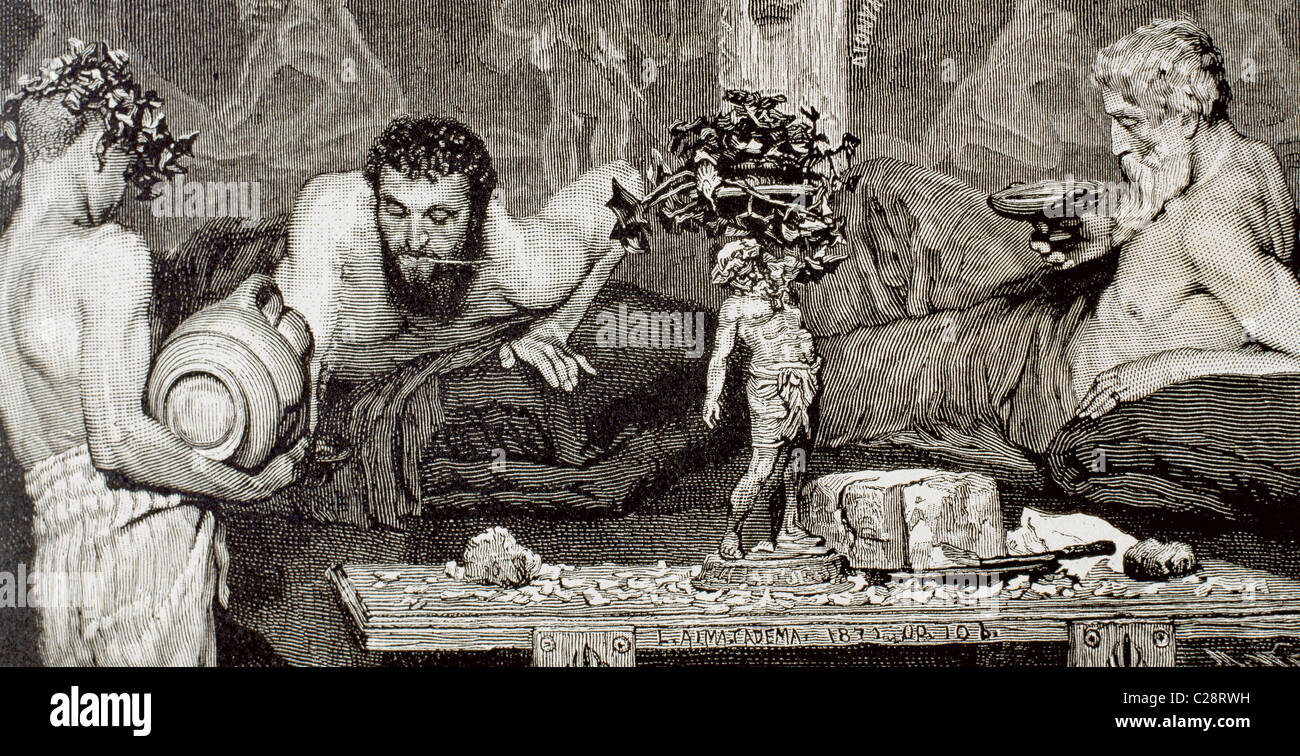 Ancient Rome. Young slave serving patricians who are lying on a triclinium during a banquet. Stock Photohttps://www.alamy.com/image-license-details/?v=1https://www.alamy.com/stock-photo-ancient-rome-young-slave-serving-patricians-who-are-lying-on-a-triclinium-35844413.html
Ancient Rome. Young slave serving patricians who are lying on a triclinium during a banquet. Stock Photohttps://www.alamy.com/image-license-details/?v=1https://www.alamy.com/stock-photo-ancient-rome-young-slave-serving-patricians-who-are-lying-on-a-triclinium-35844413.htmlRMC28RWH–Ancient Rome. Young slave serving patricians who are lying on a triclinium during a banquet.
 Portrait of a high-ranking figure was fitted onto an older statue. Rome. Head: 4th-5th c. AD Body: first half of 2nd c. AD Stock Photohttps://www.alamy.com/image-license-details/?v=1https://www.alamy.com/stock-photo-portrait-of-a-high-ranking-figure-was-fitted-onto-an-older-statue-82534992.html
Portrait of a high-ranking figure was fitted onto an older statue. Rome. Head: 4th-5th c. AD Body: first half of 2nd c. AD Stock Photohttps://www.alamy.com/image-license-details/?v=1https://www.alamy.com/stock-photo-portrait-of-a-high-ranking-figure-was-fitted-onto-an-older-statue-82534992.htmlRMEP7P68–Portrait of a high-ranking figure was fitted onto an older statue. Rome. Head: 4th-5th c. AD Body: first half of 2nd c. AD
 Death of Virginia, ancient Rome, Virginius, Appius Claudius, death, dagger, murder, bed, redemption, despair, patrician, plebeian, marriage, ban Stock Photohttps://www.alamy.com/image-license-details/?v=1https://www.alamy.com/death-of-virginia-ancient-rome-virginius-appius-claudius-death-dagger-murder-bed-redemption-despair-patrician-plebeian-marriage-ban-image558845774.html
Death of Virginia, ancient Rome, Virginius, Appius Claudius, death, dagger, murder, bed, redemption, despair, patrician, plebeian, marriage, ban Stock Photohttps://www.alamy.com/image-license-details/?v=1https://www.alamy.com/death-of-virginia-ancient-rome-virginius-appius-claudius-death-dagger-murder-bed-redemption-despair-patrician-plebeian-marriage-ban-image558845774.htmlRM2RD5HDJ–Death of Virginia, ancient Rome, Virginius, Appius Claudius, death, dagger, murder, bed, redemption, despair, patrician, plebeian, marriage, ban
 The Catilinarian conspirators before the Senate. Roman patrician Lucius Sergius Catilina, 108–62 BC, also known as Catiline, is remembered for his failed attempt to overthrow the Republic. After a 19th century illustration by Ferdinand Max. Stock Photohttps://www.alamy.com/image-license-details/?v=1https://www.alamy.com/the-catilinarian-conspirators-before-the-senate-roman-patrician-lucius-sergius-catilina-10862-bc-also-known-as-catiline-is-remembered-for-his-failed-attempt-to-overthrow-the-republic-after-a-19th-century-illustration-by-ferdinand-max-image389297363.html
The Catilinarian conspirators before the Senate. Roman patrician Lucius Sergius Catilina, 108–62 BC, also known as Catiline, is remembered for his failed attempt to overthrow the Republic. After a 19th century illustration by Ferdinand Max. Stock Photohttps://www.alamy.com/image-license-details/?v=1https://www.alamy.com/the-catilinarian-conspirators-before-the-senate-roman-patrician-lucius-sergius-catilina-10862-bc-also-known-as-catiline-is-remembered-for-his-failed-attempt-to-overthrow-the-republic-after-a-19th-century-illustration-by-ferdinand-max-image389297363.htmlRM2DHA0N7–The Catilinarian conspirators before the Senate. Roman patrician Lucius Sergius Catilina, 108–62 BC, also known as Catiline, is remembered for his failed attempt to overthrow the Republic. After a 19th century illustration by Ferdinand Max.
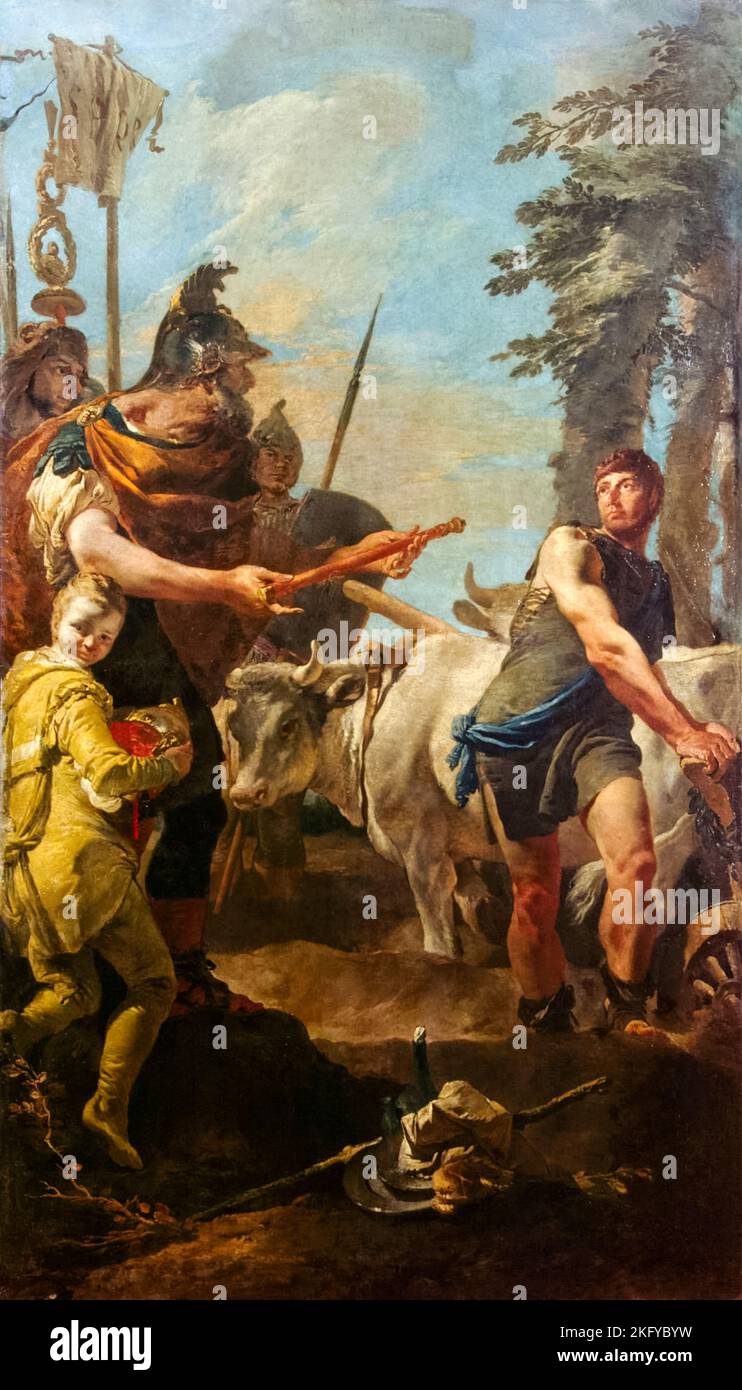 Dictatorship Offered to Cincinnatus by Giovanni Battista Tiepolo (1696-1770) painted in1730. Stock Photohttps://www.alamy.com/image-license-details/?v=1https://www.alamy.com/dictatorship-offered-to-cincinnatus-by-giovanni-battista-tiepolo-1696-1770-painted-in1730-image491712253.html
Dictatorship Offered to Cincinnatus by Giovanni Battista Tiepolo (1696-1770) painted in1730. Stock Photohttps://www.alamy.com/image-license-details/?v=1https://www.alamy.com/dictatorship-offered-to-cincinnatus-by-giovanni-battista-tiepolo-1696-1770-painted-in1730-image491712253.htmlRM2KFYBYW–Dictatorship Offered to Cincinnatus by Giovanni Battista Tiepolo (1696-1770) painted in1730.
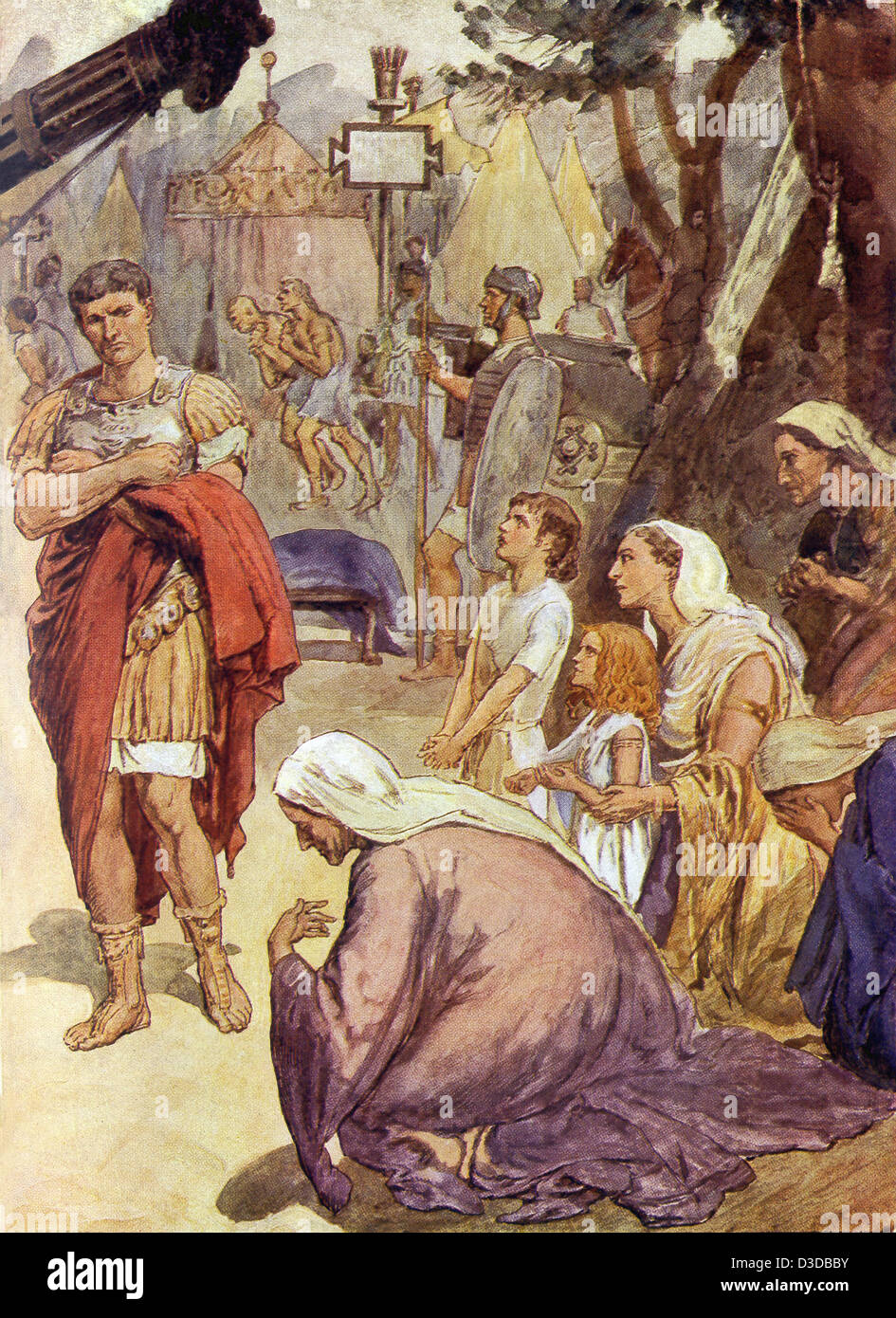 Roman patrician Coriolanus favored the patricians and was banished from Rome. His mother and wife later begged him to spare Rome Stock Photohttps://www.alamy.com/image-license-details/?v=1https://www.alamy.com/stock-photo-roman-patrician-coriolanus-favored-the-patricians-and-was-banished-53769407.html
Roman patrician Coriolanus favored the patricians and was banished from Rome. His mother and wife later begged him to spare Rome Stock Photohttps://www.alamy.com/image-license-details/?v=1https://www.alamy.com/stock-photo-roman-patrician-coriolanus-favored-the-patricians-and-was-banished-53769407.htmlRFD3DBBY–Roman patrician Coriolanus favored the patricians and was banished from Rome. His mother and wife later begged him to spare Rome
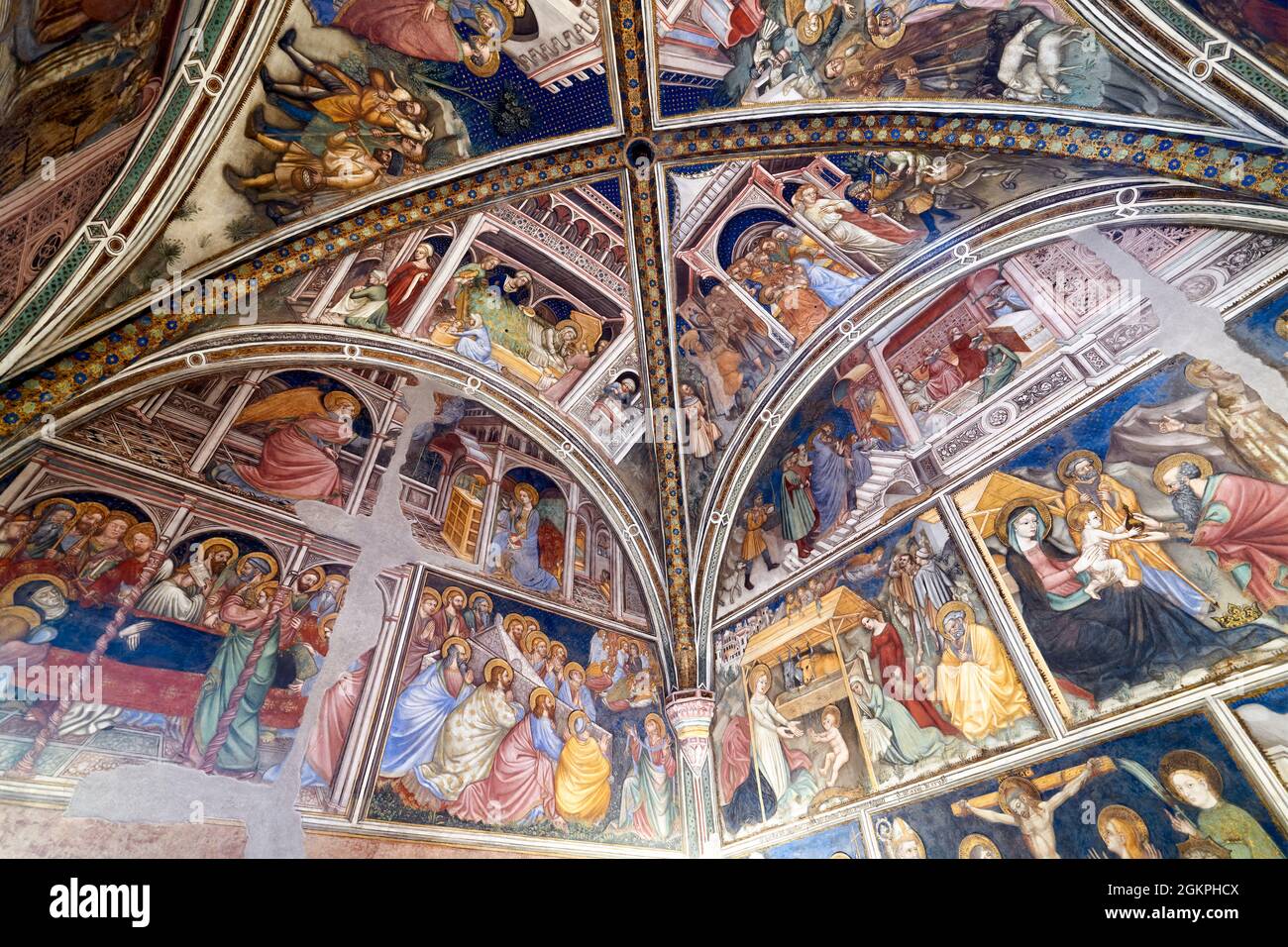 Foligno Umbria Italy. Frescoes at Trinci Palace (Palazzo Trinci), a patrician residence and museum. Stock Photohttps://www.alamy.com/image-license-details/?v=1https://www.alamy.com/foligno-umbria-italy-frescoes-at-trinci-palace-palazzo-trinci-a-patrician-residence-and-museum-image442434298.html
Foligno Umbria Italy. Frescoes at Trinci Palace (Palazzo Trinci), a patrician residence and museum. Stock Photohttps://www.alamy.com/image-license-details/?v=1https://www.alamy.com/foligno-umbria-italy-frescoes-at-trinci-palace-palazzo-trinci-a-patrician-residence-and-museum-image442434298.htmlRM2GKPHCX–Foligno Umbria Italy. Frescoes at Trinci Palace (Palazzo Trinci), a patrician residence and museum.
 Comic History of Rome p 083 Patrician looking very black at the Triumph of the General Stock Photohttps://www.alamy.com/image-license-details/?v=1https://www.alamy.com/stock-photo-comic-history-of-rome-p-083-patrician-looking-very-black-at-the-triumph-142495274.html
Comic History of Rome p 083 Patrician looking very black at the Triumph of the General Stock Photohttps://www.alamy.com/image-license-details/?v=1https://www.alamy.com/stock-photo-comic-history-of-rome-p-083-patrician-looking-very-black-at-the-triumph-142495274.htmlRMJ7R64X–Comic History of Rome p 083 Patrician looking very black at the Triumph of the General
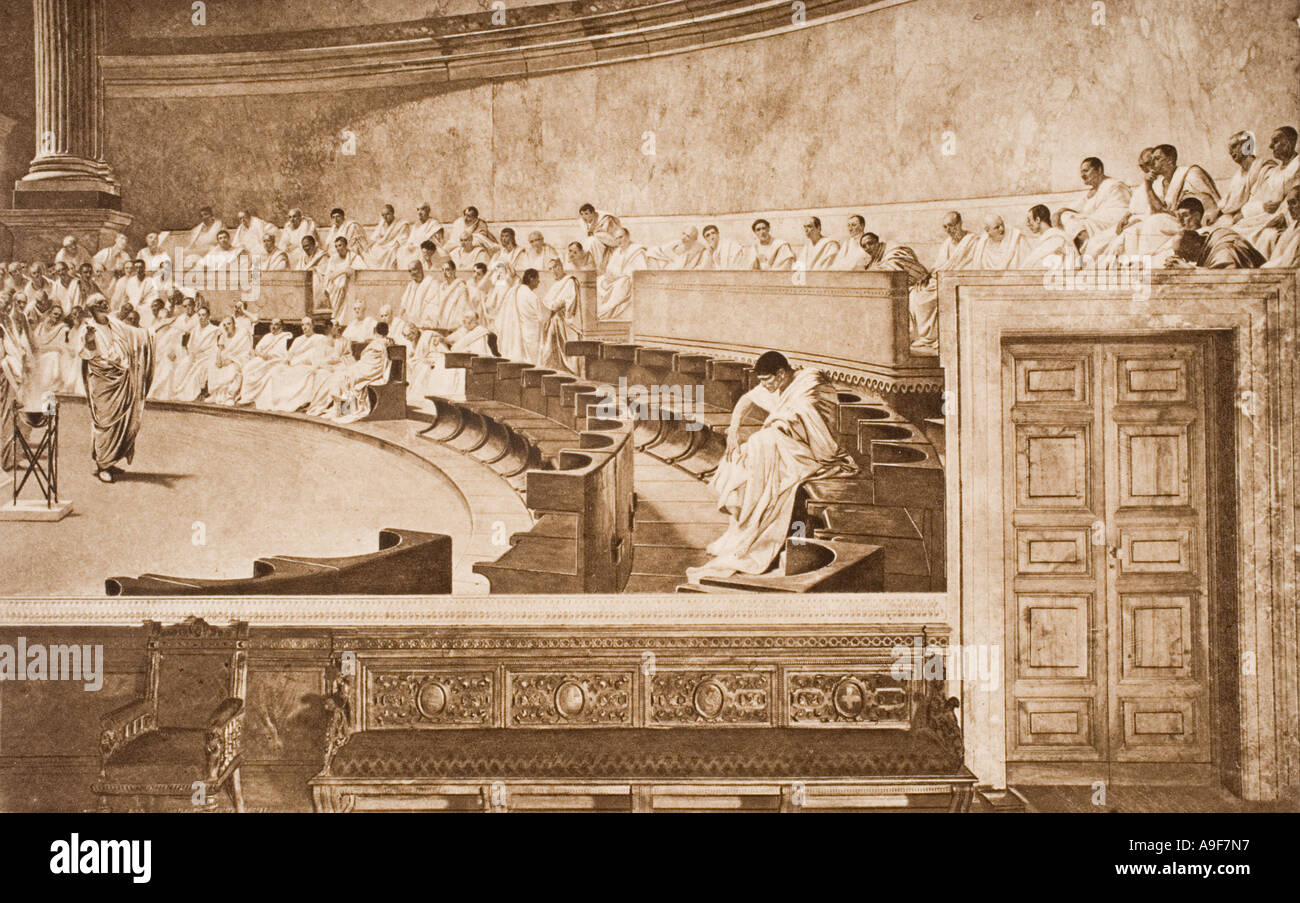 Cicero and Catiline in the Roman Senate Stock Photohttps://www.alamy.com/image-license-details/?v=1https://www.alamy.com/cicero-and-catiline-in-the-roman-senate-image7056534.html
Cicero and Catiline in the Roman Senate Stock Photohttps://www.alamy.com/image-license-details/?v=1https://www.alamy.com/cicero-and-catiline-in-the-roman-senate-image7056534.htmlRMA9F7N7–Cicero and Catiline in the Roman Senate
 Ancient Rome. Young slave serving a patrician who is lying on a triclinium during a banquet. Engraving in 'La Ilustracion Espanola y Americana' (1887). Stock Photohttps://www.alamy.com/image-license-details/?v=1https://www.alamy.com/ancient-rome-young-slave-serving-a-patrician-who-is-lying-on-a-triclinium-during-a-banquet-engraving-in-la-ilustracion-espanola-y-americana-1887-image211162606.html
Ancient Rome. Young slave serving a patrician who is lying on a triclinium during a banquet. Engraving in 'La Ilustracion Espanola y Americana' (1887). Stock Photohttps://www.alamy.com/image-license-details/?v=1https://www.alamy.com/ancient-rome-young-slave-serving-a-patrician-who-is-lying-on-a-triclinium-during-a-banquet-engraving-in-la-ilustracion-espanola-y-americana-1887-image211162606.htmlRMP7F81J–Ancient Rome. Young slave serving a patrician who is lying on a triclinium during a banquet. Engraving in 'La Ilustracion Espanola y Americana' (1887).
 Re-enactors in costume celebrate the 2769th anniversary of the founding of Rome on 21st April 753 B.C. Stock Photohttps://www.alamy.com/image-license-details/?v=1https://www.alamy.com/stock-photo-re-enactors-in-costume-celebrate-the-2769th-anniversary-of-the-founding-102901375.html
Re-enactors in costume celebrate the 2769th anniversary of the founding of Rome on 21st April 753 B.C. Stock Photohttps://www.alamy.com/image-license-details/?v=1https://www.alamy.com/stock-photo-re-enactors-in-costume-celebrate-the-2769th-anniversary-of-the-founding-102901375.htmlRMFYBFN3–Re-enactors in costume celebrate the 2769th anniversary of the founding of Rome on 21st April 753 B.C.
 Comic History of Rome p 083 Patrician looking very black at the Triumph of the General. Stock Photohttps://www.alamy.com/image-license-details/?v=1https://www.alamy.com/comic-history-of-rome-p-083-patrician-looking-very-black-at-the-triumph-of-the-general-image260724009.html
Comic History of Rome p 083 Patrician looking very black at the Triumph of the General. Stock Photohttps://www.alamy.com/image-license-details/?v=1https://www.alamy.com/comic-history-of-rome-p-083-patrician-looking-very-black-at-the-triumph-of-the-general-image260724009.htmlRMW4503N–Comic History of Rome p 083 Patrician looking very black at the Triumph of the General.
![. Emblematic binding. Italian (Rome), mid 16th century. Dark brown goatskin, with gilt border, and a cameo of Apollo and Pegasus in the centre. Bound for the young Genoese patrician Giovanni Battista Grimaldi (c. 1524–c. 1612). Grimaldi's books were colourcoded to indicate whether they were by 'ancient' or 'modern' authors. Epistolae. 1542. Secundus, Caius Plinius [author] Bodleian Libraries, Epistolae Stock Photo . Emblematic binding. Italian (Rome), mid 16th century. Dark brown goatskin, with gilt border, and a cameo of Apollo and Pegasus in the centre. Bound for the young Genoese patrician Giovanni Battista Grimaldi (c. 1524–c. 1612). Grimaldi's books were colourcoded to indicate whether they were by 'ancient' or 'modern' authors. Epistolae. 1542. Secundus, Caius Plinius [author] Bodleian Libraries, Epistolae Stock Photo](https://c8.alamy.com/comp/MMT6X0/emblematic-binding-italian-rome-mid-16th-century-dark-brown-goatskin-with-gilt-border-and-a-cameo-of-apollo-and-pegasus-in-the-centre-bound-for-the-young-genoese-patrician-giovanni-battista-grimaldi-c-1524c-1612-grimaldis-books-were-colourcoded-to-indicate-whether-they-were-by-ancient-or-modern-authors-epistolae-1542-secundus-caius-plinius-author-bodleian-libraries-epistolae-MMT6X0.jpg) . Emblematic binding. Italian (Rome), mid 16th century. Dark brown goatskin, with gilt border, and a cameo of Apollo and Pegasus in the centre. Bound for the young Genoese patrician Giovanni Battista Grimaldi (c. 1524–c. 1612). Grimaldi's books were colourcoded to indicate whether they were by 'ancient' or 'modern' authors. Epistolae. 1542. Secundus, Caius Plinius [author] Bodleian Libraries, Epistolae Stock Photohttps://www.alamy.com/image-license-details/?v=1https://www.alamy.com/emblematic-binding-italian-rome-mid-16th-century-dark-brown-goatskin-with-gilt-border-and-a-cameo-of-apollo-and-pegasus-in-the-centre-bound-for-the-young-genoese-patrician-giovanni-battista-grimaldi-c-1524c-1612-grimaldis-books-were-colourcoded-to-indicate-whether-they-were-by-ancient-or-modern-authors-epistolae-1542-secundus-caius-plinius-author-bodleian-libraries-epistolae-image184929080.html
. Emblematic binding. Italian (Rome), mid 16th century. Dark brown goatskin, with gilt border, and a cameo of Apollo and Pegasus in the centre. Bound for the young Genoese patrician Giovanni Battista Grimaldi (c. 1524–c. 1612). Grimaldi's books were colourcoded to indicate whether they were by 'ancient' or 'modern' authors. Epistolae. 1542. Secundus, Caius Plinius [author] Bodleian Libraries, Epistolae Stock Photohttps://www.alamy.com/image-license-details/?v=1https://www.alamy.com/emblematic-binding-italian-rome-mid-16th-century-dark-brown-goatskin-with-gilt-border-and-a-cameo-of-apollo-and-pegasus-in-the-centre-bound-for-the-young-genoese-patrician-giovanni-battista-grimaldi-c-1524c-1612-grimaldis-books-were-colourcoded-to-indicate-whether-they-were-by-ancient-or-modern-authors-epistolae-1542-secundus-caius-plinius-author-bodleian-libraries-epistolae-image184929080.htmlRMMMT6X0–. Emblematic binding. Italian (Rome), mid 16th century. Dark brown goatskin, with gilt border, and a cameo of Apollo and Pegasus in the centre. Bound for the young Genoese patrician Giovanni Battista Grimaldi (c. 1524–c. 1612). Grimaldi's books were colourcoded to indicate whether they were by 'ancient' or 'modern' authors. Epistolae. 1542. Secundus, Caius Plinius [author] Bodleian Libraries, Epistolae
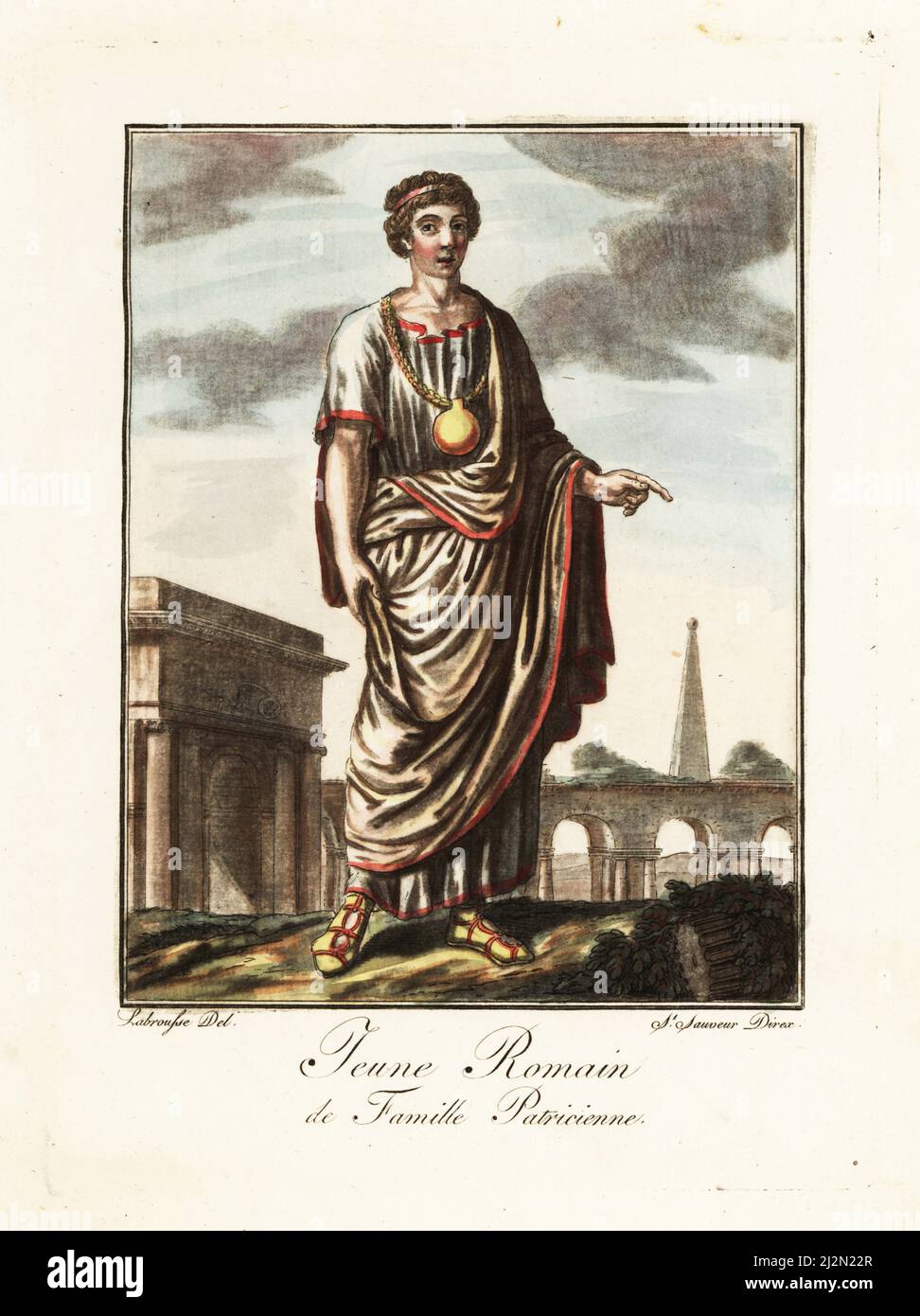 Young man from a Patrician family, ancient Rome. In a robe called a toga virilis or libera, with gold bulla hanging around his neck, yellow and red sandals. In front of an arch, aqueduct and obelisk. Jeune Romain de Famille Patricienne. Handcoloured copperplate drawn and engraved by L. Labrousse, artist of Bordeaux, under the direction of Jacques Grasset de Saint-Sauveur from his L’antique Rome, ou description historique et pittoresque, Ancient Rome, or historical and picturesque description, Chez Deroy, Paris, 1796. Stock Photohttps://www.alamy.com/image-license-details/?v=1https://www.alamy.com/young-man-from-a-patrician-family-ancient-rome-in-a-robe-called-a-toga-virilis-or-libera-with-gold-bulla-hanging-around-his-neck-yellow-and-red-sandals-in-front-of-an-arch-aqueduct-and-obelisk-jeune-romain-de-famille-patricienne-handcoloured-copperplate-drawn-and-engraved-by-l-labrousse-artist-of-bordeaux-under-the-direction-of-jacques-grasset-de-saint-sauveur-from-his-lantique-rome-ou-description-historique-et-pittoresque-ancient-rome-or-historical-and-picturesque-description-chez-deroy-paris-1796-image466371887.html
Young man from a Patrician family, ancient Rome. In a robe called a toga virilis or libera, with gold bulla hanging around his neck, yellow and red sandals. In front of an arch, aqueduct and obelisk. Jeune Romain de Famille Patricienne. Handcoloured copperplate drawn and engraved by L. Labrousse, artist of Bordeaux, under the direction of Jacques Grasset de Saint-Sauveur from his L’antique Rome, ou description historique et pittoresque, Ancient Rome, or historical and picturesque description, Chez Deroy, Paris, 1796. Stock Photohttps://www.alamy.com/image-license-details/?v=1https://www.alamy.com/young-man-from-a-patrician-family-ancient-rome-in-a-robe-called-a-toga-virilis-or-libera-with-gold-bulla-hanging-around-his-neck-yellow-and-red-sandals-in-front-of-an-arch-aqueduct-and-obelisk-jeune-romain-de-famille-patricienne-handcoloured-copperplate-drawn-and-engraved-by-l-labrousse-artist-of-bordeaux-under-the-direction-of-jacques-grasset-de-saint-sauveur-from-his-lantique-rome-ou-description-historique-et-pittoresque-ancient-rome-or-historical-and-picturesque-description-chez-deroy-paris-1796-image466371887.htmlRM2J2N22R–Young man from a Patrician family, ancient Rome. In a robe called a toga virilis or libera, with gold bulla hanging around his neck, yellow and red sandals. In front of an arch, aqueduct and obelisk. Jeune Romain de Famille Patricienne. Handcoloured copperplate drawn and engraved by L. Labrousse, artist of Bordeaux, under the direction of Jacques Grasset de Saint-Sauveur from his L’antique Rome, ou description historique et pittoresque, Ancient Rome, or historical and picturesque description, Chez Deroy, Paris, 1796.
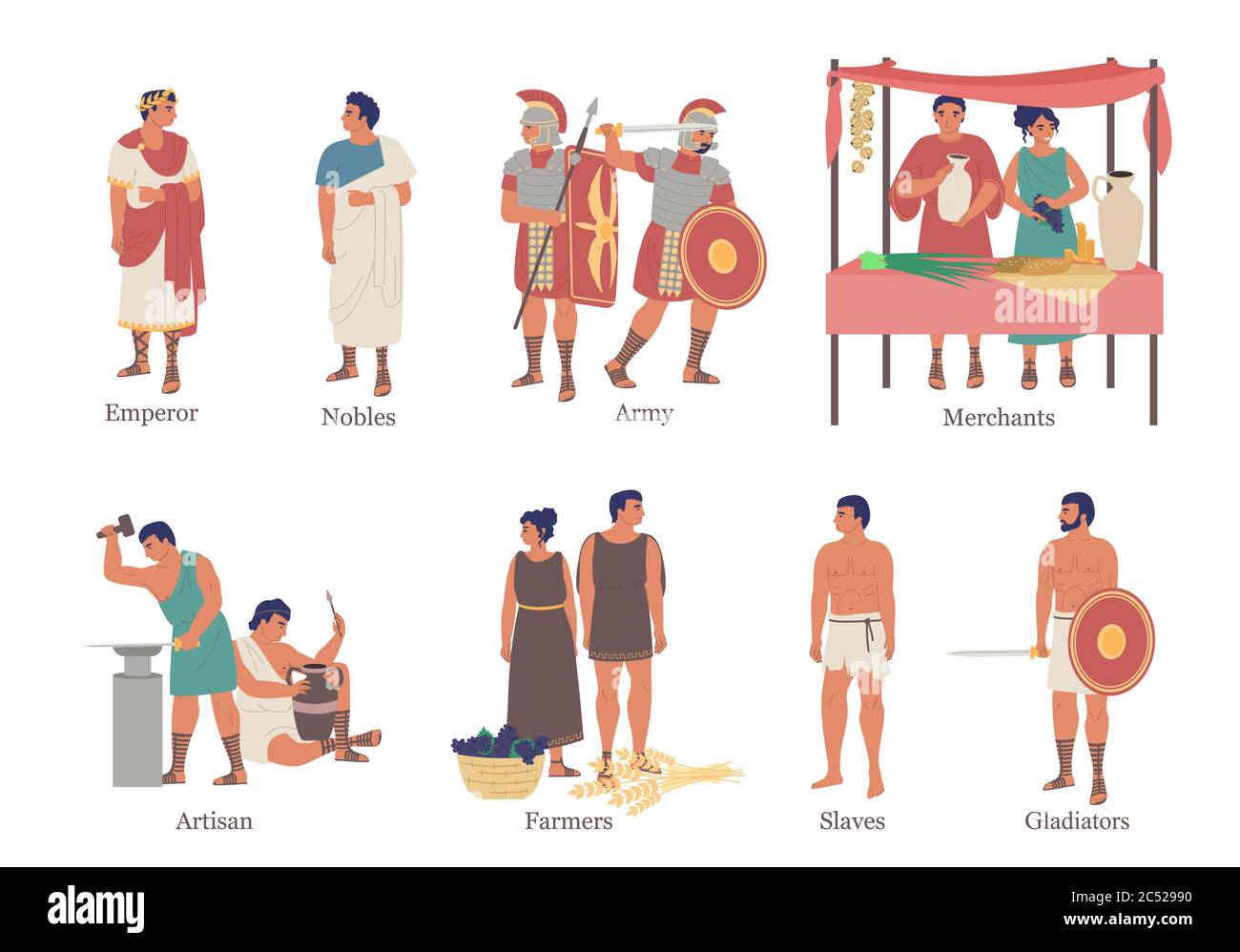 Ancient Rome hierarchy characters, vector flat isolated illustration Stock Vectorhttps://www.alamy.com/image-license-details/?v=1https://www.alamy.com/ancient-rome-hierarchy-characters-vector-flat-isolated-illustration-image364542220.html
Ancient Rome hierarchy characters, vector flat isolated illustration Stock Vectorhttps://www.alamy.com/image-license-details/?v=1https://www.alamy.com/ancient-rome-hierarchy-characters-vector-flat-isolated-illustration-image364542220.htmlRF2C52990–Ancient Rome hierarchy characters, vector flat isolated illustration
 Bronze statue of a drunken faun from the house of the Patrician. Stock Photohttps://www.alamy.com/image-license-details/?v=1https://www.alamy.com/bronze-statue-of-a-drunken-faun-from-the-house-of-the-patrician-image62668718.html
Bronze statue of a drunken faun from the house of the Patrician. Stock Photohttps://www.alamy.com/image-license-details/?v=1https://www.alamy.com/bronze-statue-of-a-drunken-faun-from-the-house-of-the-patrician-image62668718.htmlRMDHXPGE–Bronze statue of a drunken faun from the house of the Patrician.
 City Hall, Roemer, former patrician houses, Roemerberg, Frankfurt am Main, Hesse, Germany Stock Photohttps://www.alamy.com/image-license-details/?v=1https://www.alamy.com/city-hall-roemer-former-patrician-houses-roemerberg-frankfurt-am-main-hesse-germany-image450304944.html
City Hall, Roemer, former patrician houses, Roemerberg, Frankfurt am Main, Hesse, Germany Stock Photohttps://www.alamy.com/image-license-details/?v=1https://www.alamy.com/city-hall-roemer-former-patrician-houses-roemerberg-frankfurt-am-main-hesse-germany-image450304944.htmlRF2H4H4FC–City Hall, Roemer, former patrician houses, Roemerberg, Frankfurt am Main, Hesse, Germany
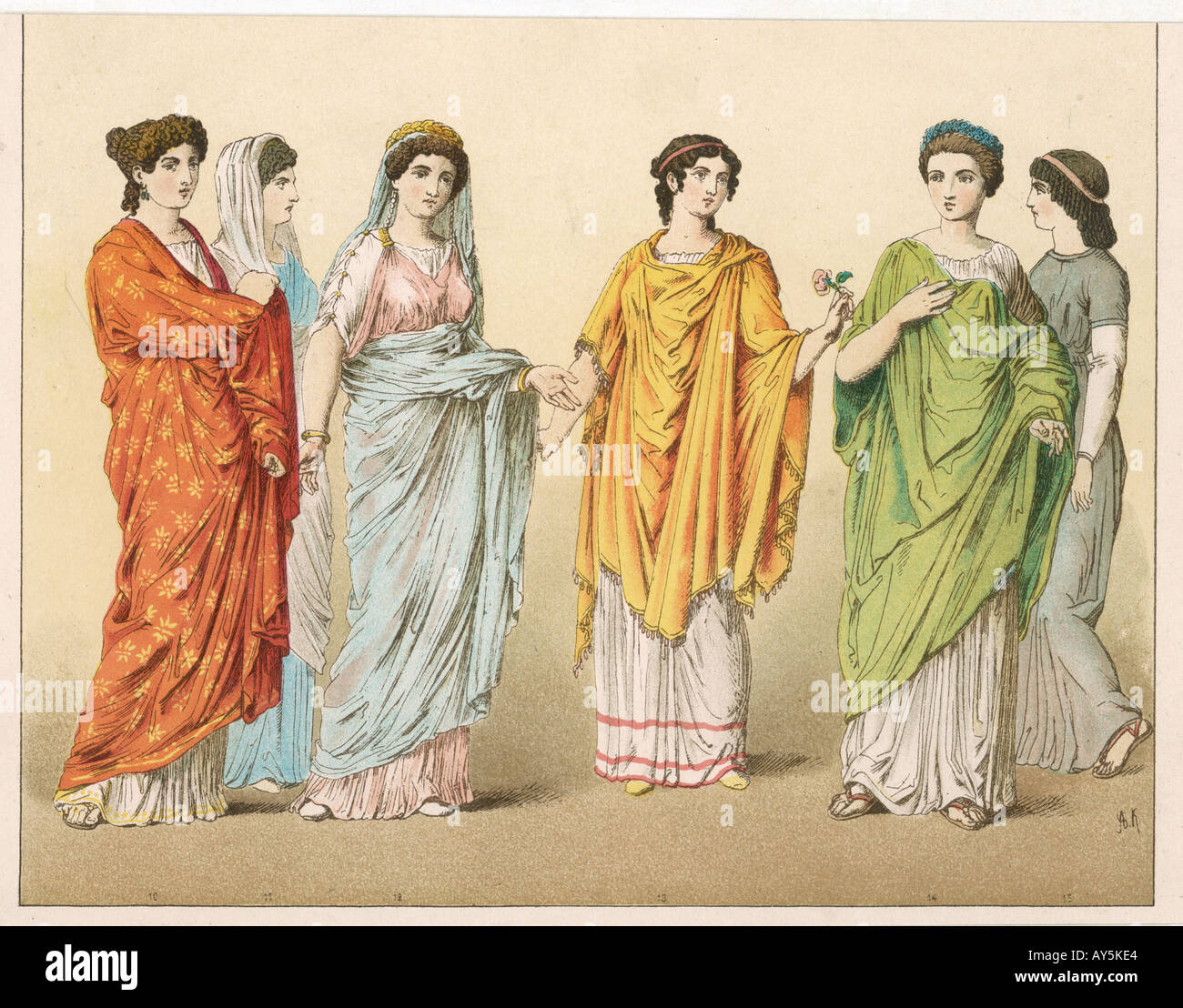 Patrician Ladies Slave Stock Photohttps://www.alamy.com/image-license-details/?v=1https://www.alamy.com/patrician-ladies-slave-image5550051.html
Patrician Ladies Slave Stock Photohttps://www.alamy.com/image-license-details/?v=1https://www.alamy.com/patrician-ladies-slave-image5550051.htmlRMAY5KE4–Patrician Ladies Slave
 Painting of an aquarium with fish and lobster from the House of the Patrician or Centenary (Casa del Centenario). Stock Photohttps://www.alamy.com/image-license-details/?v=1https://www.alamy.com/painting-of-an-aquarium-with-fish-and-lobster-from-the-house-of-the-image62668721.html
Painting of an aquarium with fish and lobster from the House of the Patrician or Centenary (Casa del Centenario). Stock Photohttps://www.alamy.com/image-license-details/?v=1https://www.alamy.com/painting-of-an-aquarium-with-fish-and-lobster-from-the-house-of-the-image62668721.htmlRMDHXPGH–Painting of an aquarium with fish and lobster from the House of the Patrician or Centenary (Casa del Centenario).
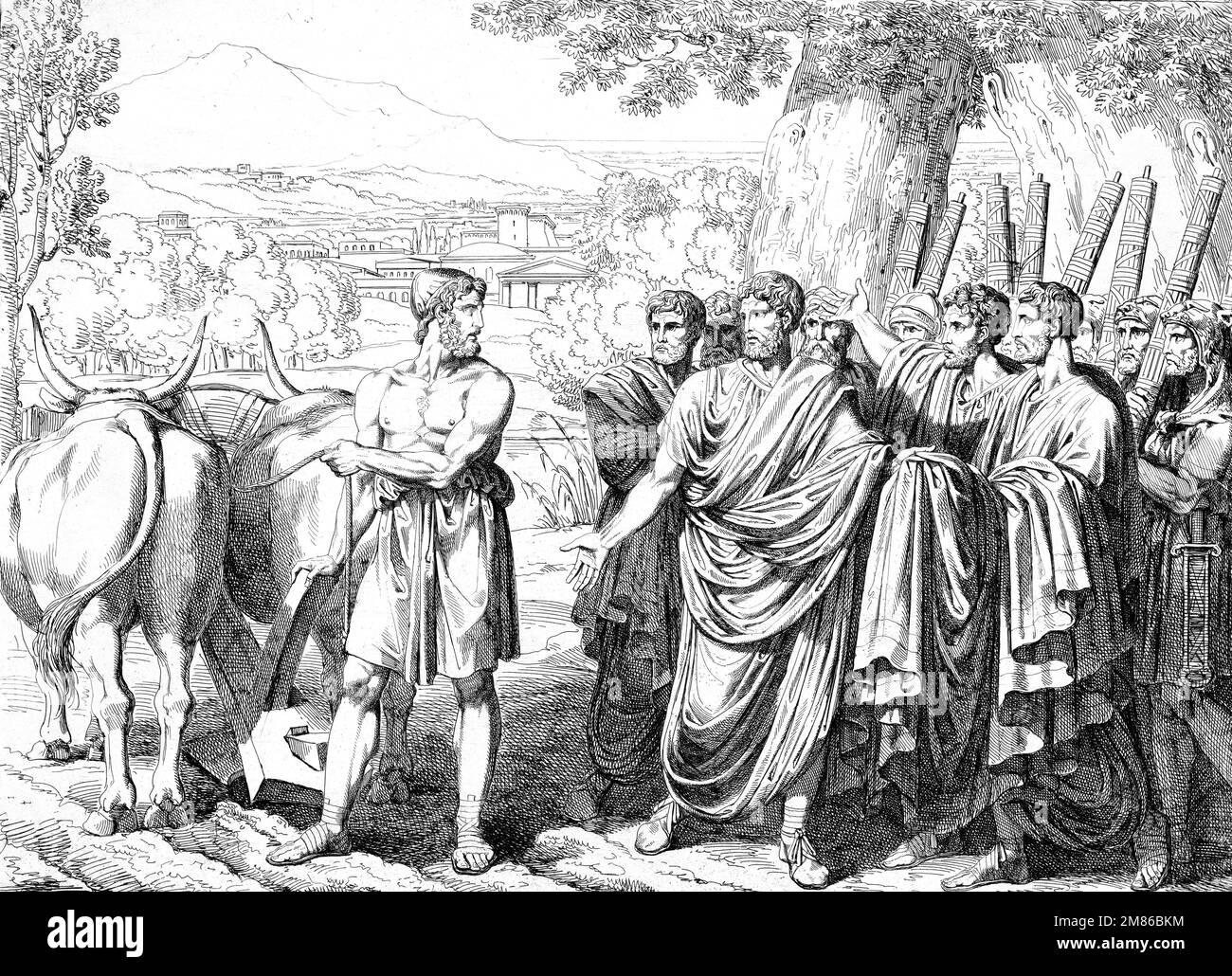 Cincinnatus (c. 519-430 BC). Illustration entitled 'Lucius Quinctius Cincinnatus while he was busy plowing his field, was elected Dictator by the Senate of the Roman People', etching, 1818 Stock Photohttps://www.alamy.com/image-license-details/?v=1https://www.alamy.com/cincinnatus-c-519-430-bc-illustration-entitled-lucius-quinctius-cincinnatus-while-he-was-busy-plowing-his-field-was-elected-dictator-by-the-senate-of-the-roman-people-etching-1818-image504158808.html
Cincinnatus (c. 519-430 BC). Illustration entitled 'Lucius Quinctius Cincinnatus while he was busy plowing his field, was elected Dictator by the Senate of the Roman People', etching, 1818 Stock Photohttps://www.alamy.com/image-license-details/?v=1https://www.alamy.com/cincinnatus-c-519-430-bc-illustration-entitled-lucius-quinctius-cincinnatus-while-he-was-busy-plowing-his-field-was-elected-dictator-by-the-senate-of-the-roman-people-etching-1818-image504158808.htmlRM2M86BKM–Cincinnatus (c. 519-430 BC). Illustration entitled 'Lucius Quinctius Cincinnatus while he was busy plowing his field, was elected Dictator by the Senate of the Roman People', etching, 1818
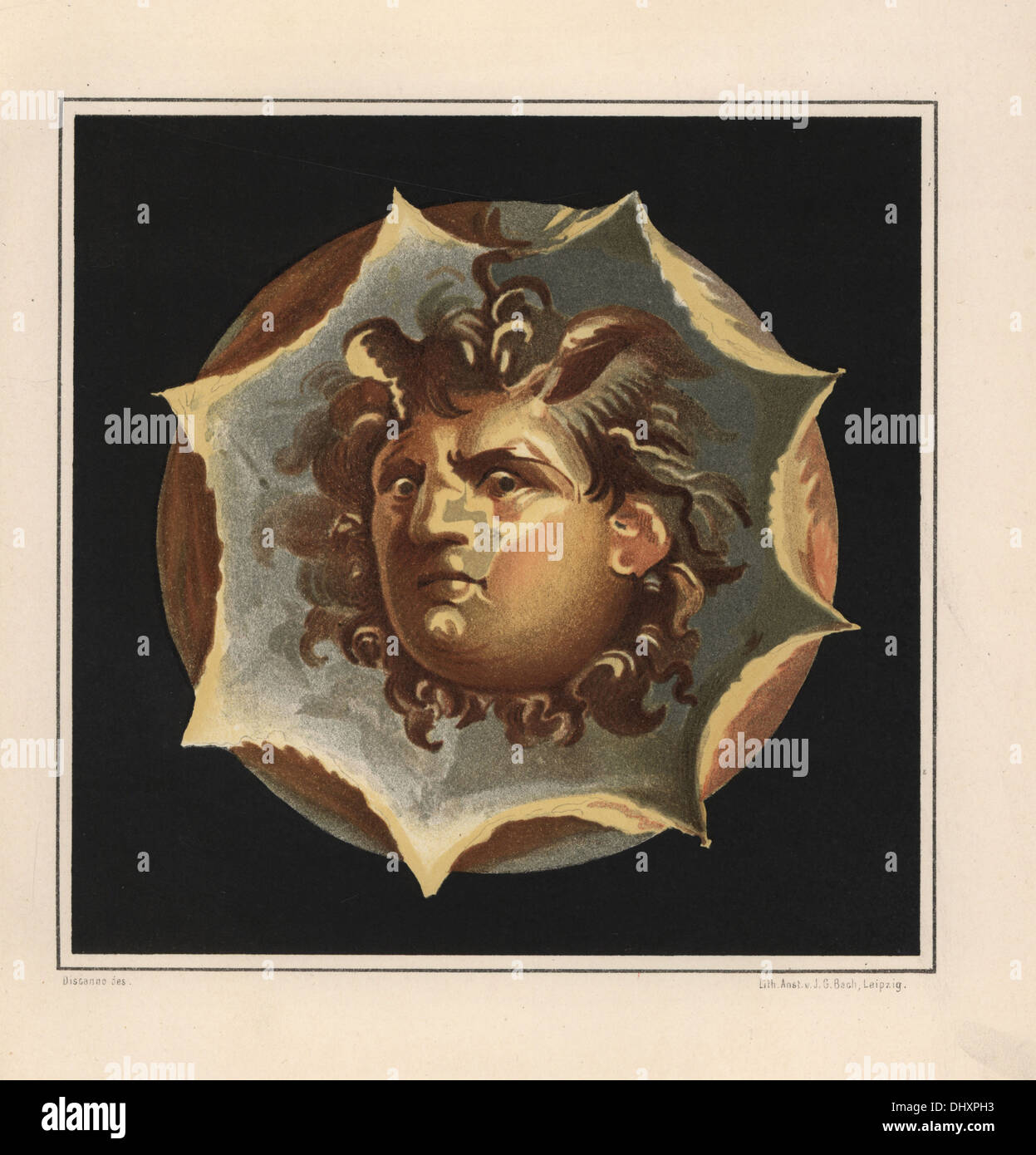 Wind god from the House of the Patrician or Centenary (Casa di Centanario), Regio IX, Insula VIII. Stock Photohttps://www.alamy.com/image-license-details/?v=1https://www.alamy.com/wind-god-from-the-house-of-the-patrician-or-centenary-casa-di-centanario-image62668735.html
Wind god from the House of the Patrician or Centenary (Casa di Centanario), Regio IX, Insula VIII. Stock Photohttps://www.alamy.com/image-license-details/?v=1https://www.alamy.com/wind-god-from-the-house-of-the-patrician-or-centenary-casa-di-centanario-image62668735.htmlRMDHXPH3–Wind god from the House of the Patrician or Centenary (Casa di Centanario), Regio IX, Insula VIII.
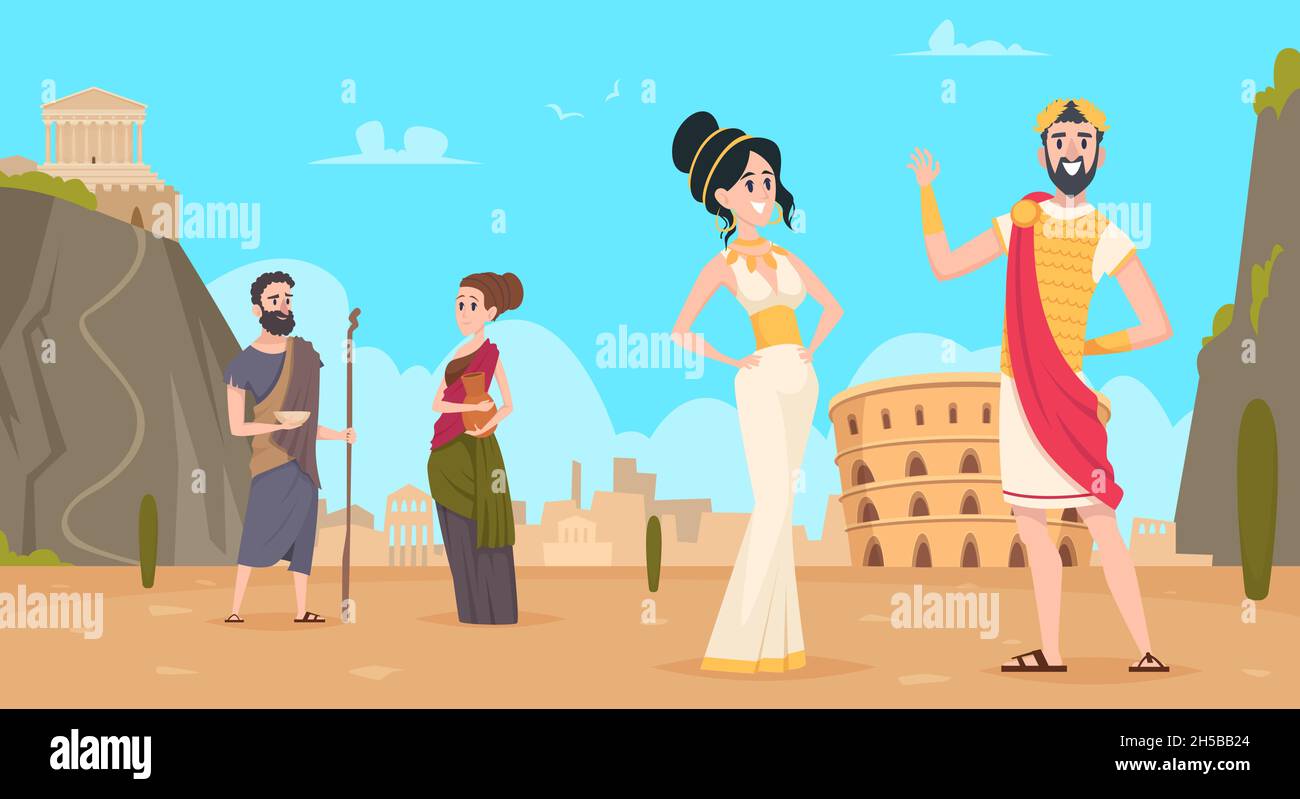 Rome background. Traditional historical landscape with citizens in authentic clothes exact vector cartoon rome people Stock Vectorhttps://www.alamy.com/image-license-details/?v=1https://www.alamy.com/rome-background-traditional-historical-landscape-with-citizens-in-authentic-clothes-exact-vector-cartoon-rome-people-image450793004.html
Rome background. Traditional historical landscape with citizens in authentic clothes exact vector cartoon rome people Stock Vectorhttps://www.alamy.com/image-license-details/?v=1https://www.alamy.com/rome-background-traditional-historical-landscape-with-citizens-in-authentic-clothes-exact-vector-cartoon-rome-people-image450793004.htmlRF2H5BB24–Rome background. Traditional historical landscape with citizens in authentic clothes exact vector cartoon rome people
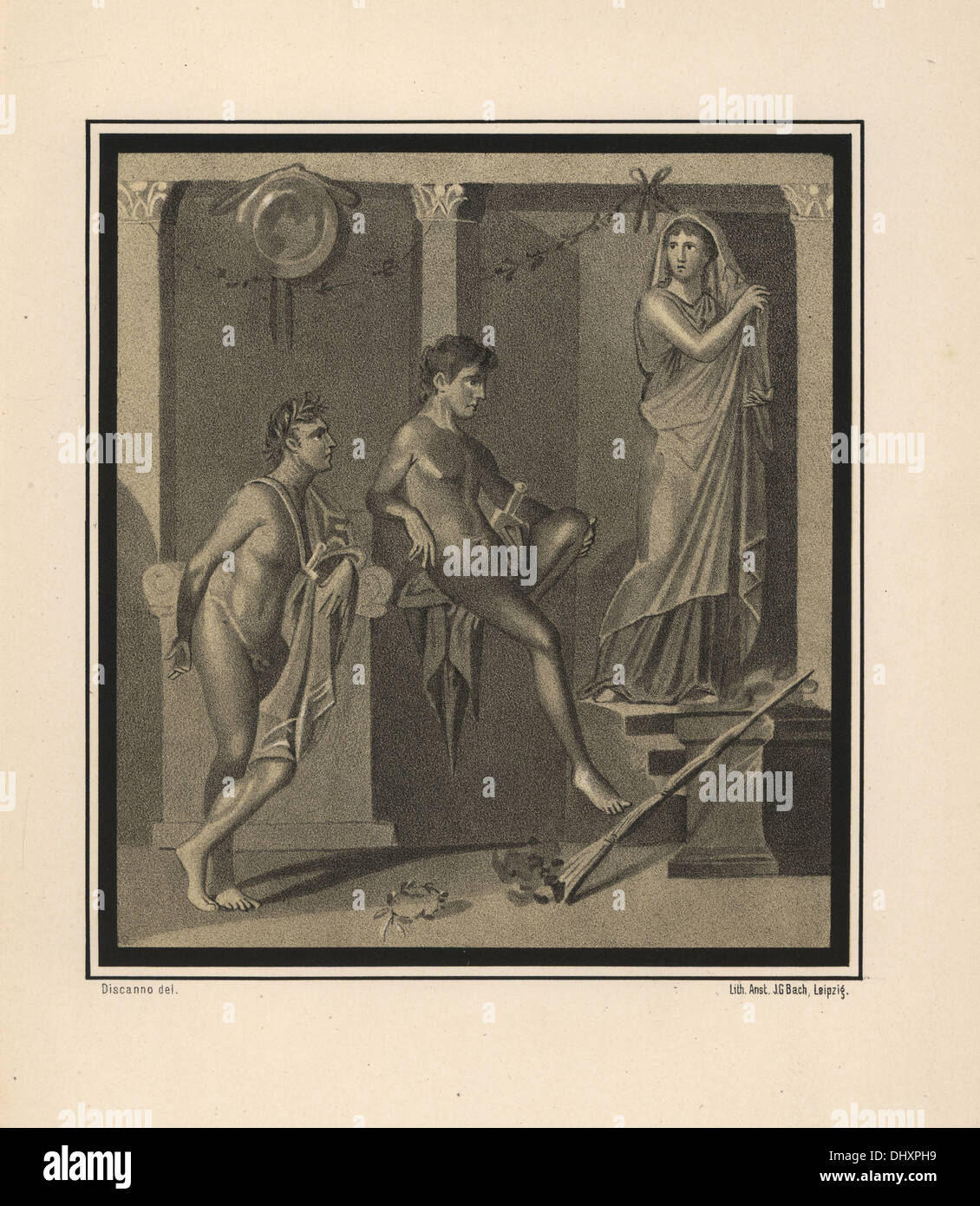 Iphigenia in Tauris, without the original colour, from the House of the Patrician or Centenary (Casa di Centenario), Regio IX. Stock Photohttps://www.alamy.com/image-license-details/?v=1https://www.alamy.com/iphigenia-in-tauris-without-the-original-colour-from-the-house-of-image62668741.html
Iphigenia in Tauris, without the original colour, from the House of the Patrician or Centenary (Casa di Centenario), Regio IX. Stock Photohttps://www.alamy.com/image-license-details/?v=1https://www.alamy.com/iphigenia-in-tauris-without-the-original-colour-from-the-house-of-image62668741.htmlRMDHXPH9–Iphigenia in Tauris, without the original colour, from the House of the Patrician or Centenary (Casa di Centenario), Regio IX.
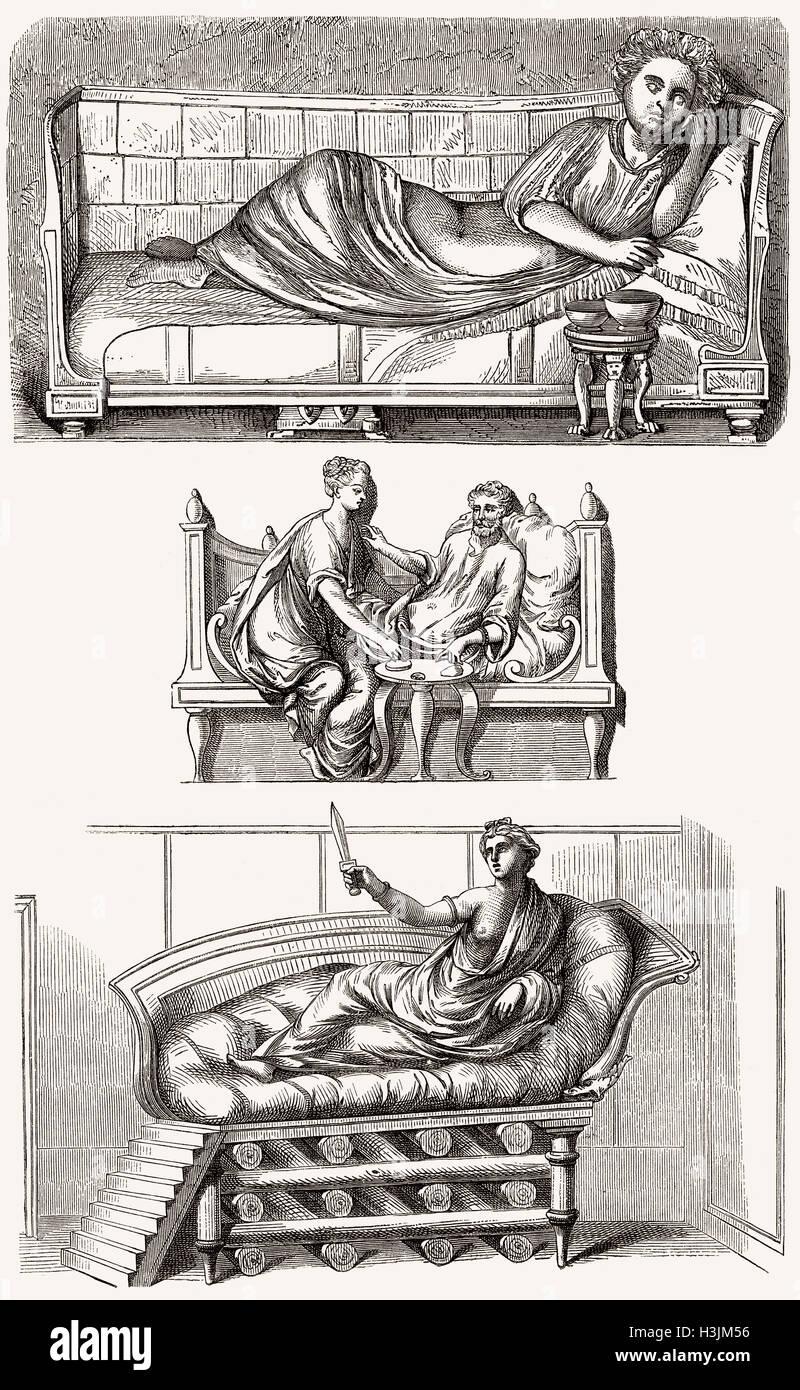 Ancient Roman beds Stock Photohttps://www.alamy.com/image-license-details/?v=1https://www.alamy.com/stock-photo-ancient-roman-beds-122727506.html
Ancient Roman beds Stock Photohttps://www.alamy.com/image-license-details/?v=1https://www.alamy.com/stock-photo-ancient-roman-beds-122727506.htmlRMH3JM56–Ancient Roman beds
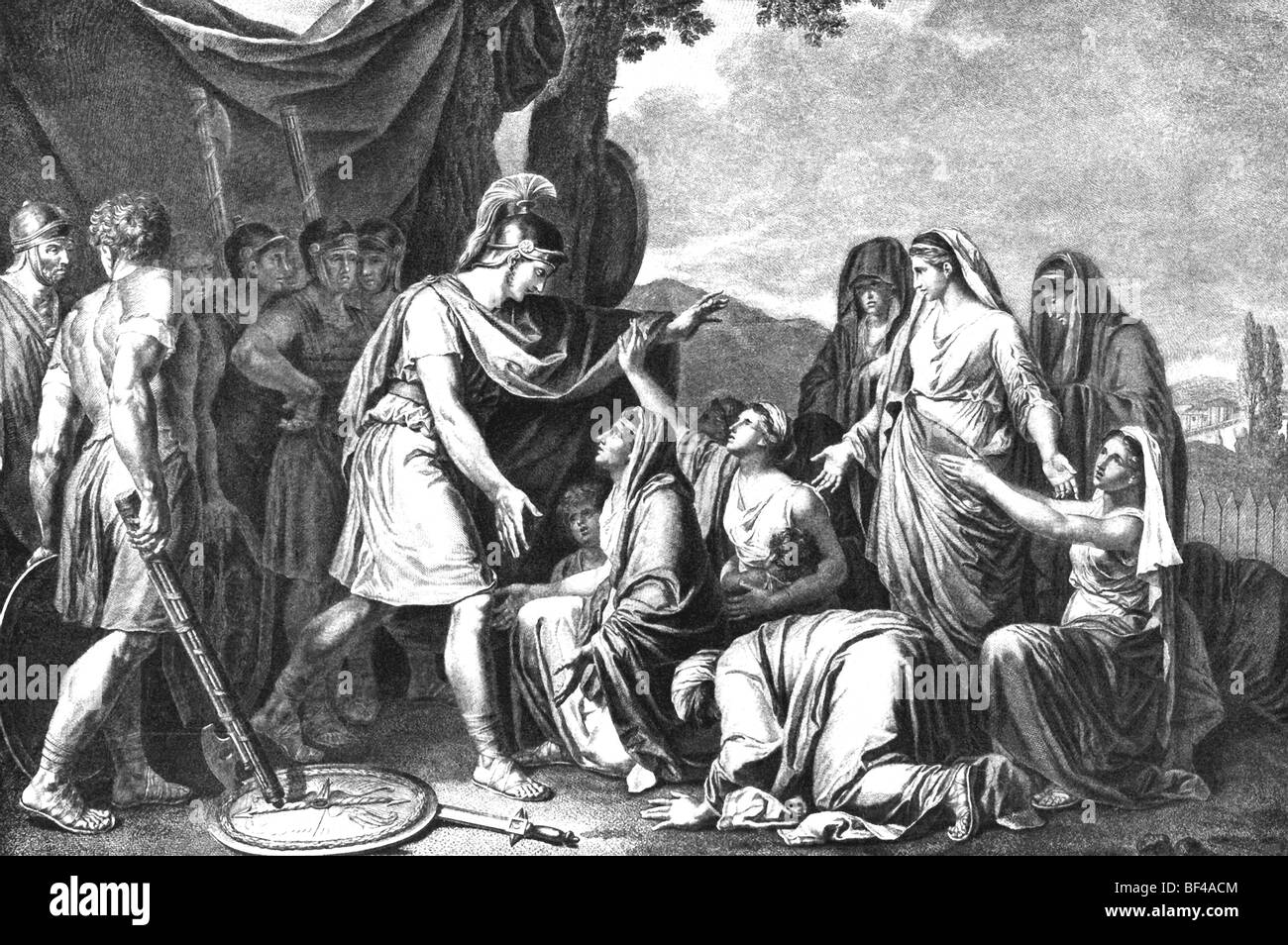 Roman patrician Coriolanus favored the patricians and was banished from Rome. His mother and wife later begged him to spare Rome Stock Photohttps://www.alamy.com/image-license-details/?v=1https://www.alamy.com/stock-photo-roman-patrician-coriolanus-favored-the-patricians-and-was-banished-26526212.html
Roman patrician Coriolanus favored the patricians and was banished from Rome. His mother and wife later begged him to spare Rome Stock Photohttps://www.alamy.com/image-license-details/?v=1https://www.alamy.com/stock-photo-roman-patrician-coriolanus-favored-the-patricians-and-was-banished-26526212.htmlRFBF4ACM–Roman patrician Coriolanus favored the patricians and was banished from Rome. His mother and wife later begged him to spare Rome
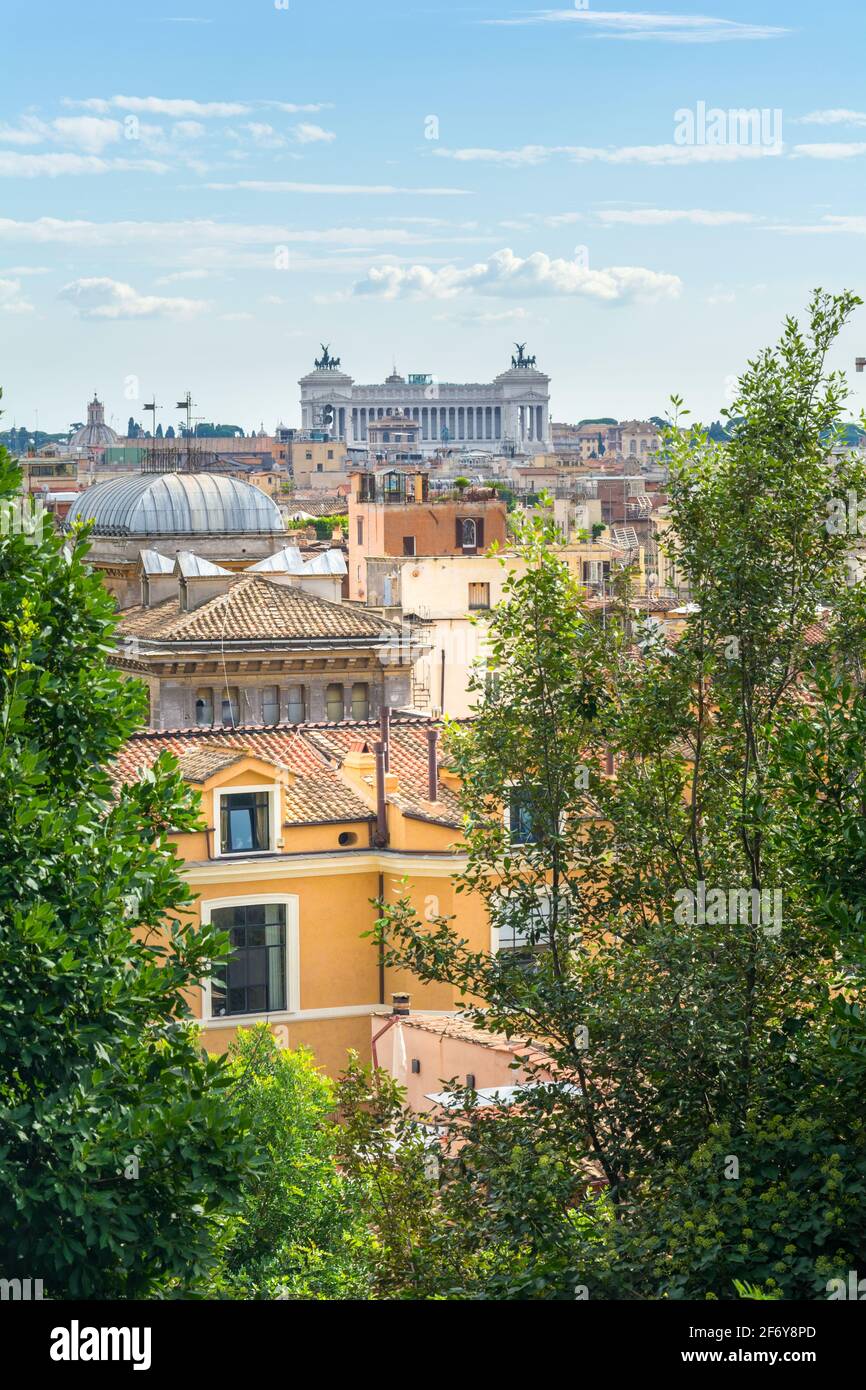 Rome, Italy - Oct 04, 2018: Altare della Patria among the rooftops of Rome Stock Photohttps://www.alamy.com/image-license-details/?v=1https://www.alamy.com/rome-italy-oct-04-2018-altare-della-patria-among-the-rooftops-of-rome-image417336373.html
Rome, Italy - Oct 04, 2018: Altare della Patria among the rooftops of Rome Stock Photohttps://www.alamy.com/image-license-details/?v=1https://www.alamy.com/rome-italy-oct-04-2018-altare-della-patria-among-the-rooftops-of-rome-image417336373.htmlRF2F6Y8PD–Rome, Italy - Oct 04, 2018: Altare della Patria among the rooftops of Rome
 This 1880s illustration shows a Consular Diptych of Flavius Felix. Flavius Felix was a general of the Western Roman Empire, who reached the prominent rank of patrician before being killed probably by order of Flavius Aetius. For his consulate, in 428, he issued some consular diptychs, one of which (seen here) has been preserved until modern times. In Late Antiquity, a consular diptych was a type of diptych intended as a deluxe commemorative object. The diptychs were generally in ivory, wood or metal and decorated with rich relief sculpture. Stock Photohttps://www.alamy.com/image-license-details/?v=1https://www.alamy.com/this-1880s-illustration-shows-a-consular-diptych-of-flavius-felix-flavius-felix-was-a-general-of-the-western-roman-empire-who-reached-the-prominent-rank-of-patrician-before-being-killed-probably-by-order-of-flavius-aetius-for-his-consulate-in-428-he-issued-some-consular-diptychs-one-of-which-seen-here-has-been-preserved-until-modern-times-in-late-antiquity-aconsular-diptychwas-a-type-ofdiptychintended-as-a-deluxe-commemorative-object-thediptychswere-generally-in-ivory-wood-or-metal-and-decorated-with-rich-relief-sculpture-image403385144.html
This 1880s illustration shows a Consular Diptych of Flavius Felix. Flavius Felix was a general of the Western Roman Empire, who reached the prominent rank of patrician before being killed probably by order of Flavius Aetius. For his consulate, in 428, he issued some consular diptychs, one of which (seen here) has been preserved until modern times. In Late Antiquity, a consular diptych was a type of diptych intended as a deluxe commemorative object. The diptychs were generally in ivory, wood or metal and decorated with rich relief sculpture. Stock Photohttps://www.alamy.com/image-license-details/?v=1https://www.alamy.com/this-1880s-illustration-shows-a-consular-diptych-of-flavius-felix-flavius-felix-was-a-general-of-the-western-roman-empire-who-reached-the-prominent-rank-of-patrician-before-being-killed-probably-by-order-of-flavius-aetius-for-his-consulate-in-428-he-issued-some-consular-diptychs-one-of-which-seen-here-has-been-preserved-until-modern-times-in-late-antiquity-aconsular-diptychwas-a-type-ofdiptychintended-as-a-deluxe-commemorative-object-thediptychswere-generally-in-ivory-wood-or-metal-and-decorated-with-rich-relief-sculpture-image403385144.htmlRF2EC7NT8–This 1880s illustration shows a Consular Diptych of Flavius Felix. Flavius Felix was a general of the Western Roman Empire, who reached the prominent rank of patrician before being killed probably by order of Flavius Aetius. For his consulate, in 428, he issued some consular diptychs, one of which (seen here) has been preserved until modern times. In Late Antiquity, a consular diptych was a type of diptych intended as a deluxe commemorative object. The diptychs were generally in ivory, wood or metal and decorated with rich relief sculpture.
 Rome, Italy - Oct 06, 2018: Animal Hall at the Pio Clementino Museum, which houses animal sculptures, the Vatican Stock Photohttps://www.alamy.com/image-license-details/?v=1https://www.alamy.com/rome-italy-oct-06-2018-animal-hall-at-the-pio-clementino-museum-which-houses-animal-sculptures-the-vatican-image417338228.html
Rome, Italy - Oct 06, 2018: Animal Hall at the Pio Clementino Museum, which houses animal sculptures, the Vatican Stock Photohttps://www.alamy.com/image-license-details/?v=1https://www.alamy.com/rome-italy-oct-06-2018-animal-hall-at-the-pio-clementino-museum-which-houses-animal-sculptures-the-vatican-image417338228.htmlRF2F6YB4M–Rome, Italy - Oct 06, 2018: Animal Hall at the Pio Clementino Museum, which houses animal sculptures, the Vatican
 Bartolomé Esteban Murillo / 'The Foundation of Santa Maria Maggiore in Rome: 1. The Patrician Reveals his Dream to the Pope', 1664-1665, Spanish School, Oil on canvas, 232 cm x 524 cm, P00995. Museum: MUSEO DEL PRADO, MADRID, SPAIN. Stock Photohttps://www.alamy.com/image-license-details/?v=1https://www.alamy.com/bartolom-esteban-murillo-the-foundation-of-santa-maria-maggiore-in-rome-1-the-patrician-reveals-his-dream-to-the-pope-1664-1665-spanish-school-oil-on-canvas-232-cm-x-524-cm-p00995-museum-museo-del-prado-madrid-spain-image630872120.html
Bartolomé Esteban Murillo / 'The Foundation of Santa Maria Maggiore in Rome: 1. The Patrician Reveals his Dream to the Pope', 1664-1665, Spanish School, Oil on canvas, 232 cm x 524 cm, P00995. Museum: MUSEO DEL PRADO, MADRID, SPAIN. Stock Photohttps://www.alamy.com/image-license-details/?v=1https://www.alamy.com/bartolom-esteban-murillo-the-foundation-of-santa-maria-maggiore-in-rome-1-the-patrician-reveals-his-dream-to-the-pope-1664-1665-spanish-school-oil-on-canvas-232-cm-x-524-cm-p00995-museum-museo-del-prado-madrid-spain-image630872120.htmlRM2YJAKR4–Bartolomé Esteban Murillo / 'The Foundation of Santa Maria Maggiore in Rome: 1. The Patrician Reveals his Dream to the Pope', 1664-1665, Spanish School, Oil on canvas, 232 cm x 524 cm, P00995. Museum: MUSEO DEL PRADO, MADRID, SPAIN.
 Re-enactors in costume celebrate the 2769th anniversary of the founding of Rome on 21st April 753 B.C. Stock Photohttps://www.alamy.com/image-license-details/?v=1https://www.alamy.com/stock-photo-re-enactors-in-costume-celebrate-the-2769th-anniversary-of-the-founding-102901034.html
Re-enactors in costume celebrate the 2769th anniversary of the founding of Rome on 21st April 753 B.C. Stock Photohttps://www.alamy.com/image-license-details/?v=1https://www.alamy.com/stock-photo-re-enactors-in-costume-celebrate-the-2769th-anniversary-of-the-founding-102901034.htmlRMFYBF8X–Re-enactors in costume celebrate the 2769th anniversary of the founding of Rome on 21st April 753 B.C.
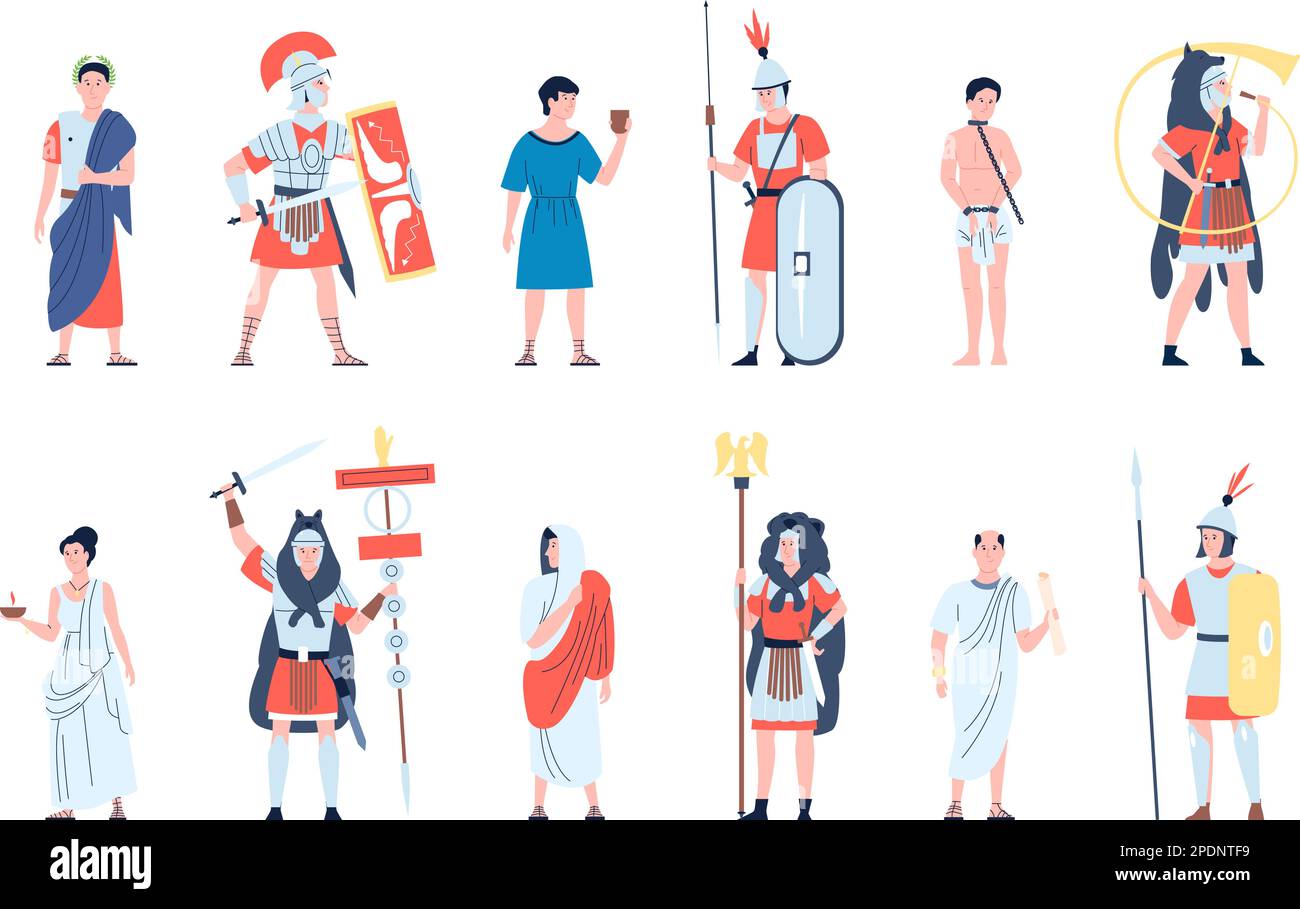 Ancient people roman in toga, rome characters. Greek person, empire civilization warriors and soldiers and citizens. Cartoon flat recent vector Stock Vectorhttps://www.alamy.com/image-license-details/?v=1https://www.alamy.com/ancient-people-roman-in-toga-rome-characters-greek-person-empire-civilization-warriors-and-soldiers-and-citizens-cartoon-flat-recent-vector-image541992173.html
Ancient people roman in toga, rome characters. Greek person, empire civilization warriors and soldiers and citizens. Cartoon flat recent vector Stock Vectorhttps://www.alamy.com/image-license-details/?v=1https://www.alamy.com/ancient-people-roman-in-toga-rome-characters-greek-person-empire-civilization-warriors-and-soldiers-and-citizens-cartoon-flat-recent-vector-image541992173.htmlRF2PDNTF9–Ancient people roman in toga, rome characters. Greek person, empire civilization warriors and soldiers and citizens. Cartoon flat recent vector
 N/A. Image by John Leech, from: The Comic History of Rome by Gilbert Abbott A Beckett. Bradbury, Evans & Co, London, 1850s In the foreground of the Tableau may be observed a Patrician looking very black at the Triumph of the General . circa 1850. John Leech (1817–1864) Alternative names John Leech Description English caricaturist and illustrator Date of birth/death 29 August 1817 29 October 1864 Location of birth/death London London Authority control : Q1374807 VIAF:55323488 ISNI:0000 0001 0903 3018 ULAN:500002592 LCCN:n79054670 NLA:35297707 WorldCat 371 Comic History of Rome p 08 Stock Photohttps://www.alamy.com/image-license-details/?v=1https://www.alamy.com/na-image-by-john-leech-from-the-comic-history-of-rome-by-gilbert-abbott-a-beckett-bradbury-evans-co-london-1850s-in-the-foreground-of-the-tableau-may-be-observed-a-patrician-looking-very-black-at-the-triumph-of-the-general-circa-1850-john-leech-18171864-alternative-names-john-leech-description-english-caricaturist-and-illustrator-date-of-birthdeath-29-august-1817-29-october-1864-location-of-birthdeath-london-london-authority-control-q1374807-viaf55323488-isni0000-0001-0903-3018-ulan500002592-lccnn79054670-nla35297707-worldcat-371-comic-history-of-rome-p-08-image210181096.html
N/A. Image by John Leech, from: The Comic History of Rome by Gilbert Abbott A Beckett. Bradbury, Evans & Co, London, 1850s In the foreground of the Tableau may be observed a Patrician looking very black at the Triumph of the General . circa 1850. John Leech (1817–1864) Alternative names John Leech Description English caricaturist and illustrator Date of birth/death 29 August 1817 29 October 1864 Location of birth/death London London Authority control : Q1374807 VIAF:55323488 ISNI:0000 0001 0903 3018 ULAN:500002592 LCCN:n79054670 NLA:35297707 WorldCat 371 Comic History of Rome p 08 Stock Photohttps://www.alamy.com/image-license-details/?v=1https://www.alamy.com/na-image-by-john-leech-from-the-comic-history-of-rome-by-gilbert-abbott-a-beckett-bradbury-evans-co-london-1850s-in-the-foreground-of-the-tableau-may-be-observed-a-patrician-looking-very-black-at-the-triumph-of-the-general-circa-1850-john-leech-18171864-alternative-names-john-leech-description-english-caricaturist-and-illustrator-date-of-birthdeath-29-august-1817-29-october-1864-location-of-birthdeath-london-london-authority-control-q1374807-viaf55323488-isni0000-0001-0903-3018-ulan500002592-lccnn79054670-nla35297707-worldcat-371-comic-history-of-rome-p-08-image210181096.htmlRMP5XG3M–N/A. Image by John Leech, from: The Comic History of Rome by Gilbert Abbott A Beckett. Bradbury, Evans & Co, London, 1850s In the foreground of the Tableau may be observed a Patrician looking very black at the Triumph of the General . circa 1850. John Leech (1817–1864) Alternative names John Leech Description English caricaturist and illustrator Date of birth/death 29 August 1817 29 October 1864 Location of birth/death London London Authority control : Q1374807 VIAF:55323488 ISNI:0000 0001 0903 3018 ULAN:500002592 LCCN:n79054670 NLA:35297707 WorldCat 371 Comic History of Rome p 08
 The Story of the Foundation of Santa Maria Maggiore in Rome: The Patrician Reveals his Dream to the Pope 1665 by Bartolome Esteban Murillo Stock Photohttps://www.alamy.com/image-license-details/?v=1https://www.alamy.com/the-story-of-the-foundation-of-santa-maria-maggiore-in-rome-the-patrician-reveals-his-dream-to-the-pope-1665-by-bartolome-esteban-murillo-image557799125.html
The Story of the Foundation of Santa Maria Maggiore in Rome: The Patrician Reveals his Dream to the Pope 1665 by Bartolome Esteban Murillo Stock Photohttps://www.alamy.com/image-license-details/?v=1https://www.alamy.com/the-story-of-the-foundation-of-santa-maria-maggiore-in-rome-the-patrician-reveals-his-dream-to-the-pope-1665-by-bartolome-esteban-murillo-image557799125.htmlRM2RBDXD9–The Story of the Foundation of Santa Maria Maggiore in Rome: The Patrician Reveals his Dream to the Pope 1665 by Bartolome Esteban Murillo
 Marcus Aemilius Lepidus, 90 BC - 12 BC, a Roman patrician, part of the Second Triumvirate Stock Photohttps://www.alamy.com/image-license-details/?v=1https://www.alamy.com/marcus-aemilius-lepidus-90-bc-12-bc-a-roman-patrician-part-of-the-second-triumvirate-image188869800.html
Marcus Aemilius Lepidus, 90 BC - 12 BC, a Roman patrician, part of the Second Triumvirate Stock Photohttps://www.alamy.com/image-license-details/?v=1https://www.alamy.com/marcus-aemilius-lepidus-90-bc-12-bc-a-roman-patrician-part-of-the-second-triumvirate-image188869800.htmlRMMY7NA0–Marcus Aemilius Lepidus, 90 BC - 12 BC, a Roman patrician, part of the Second Triumvirate
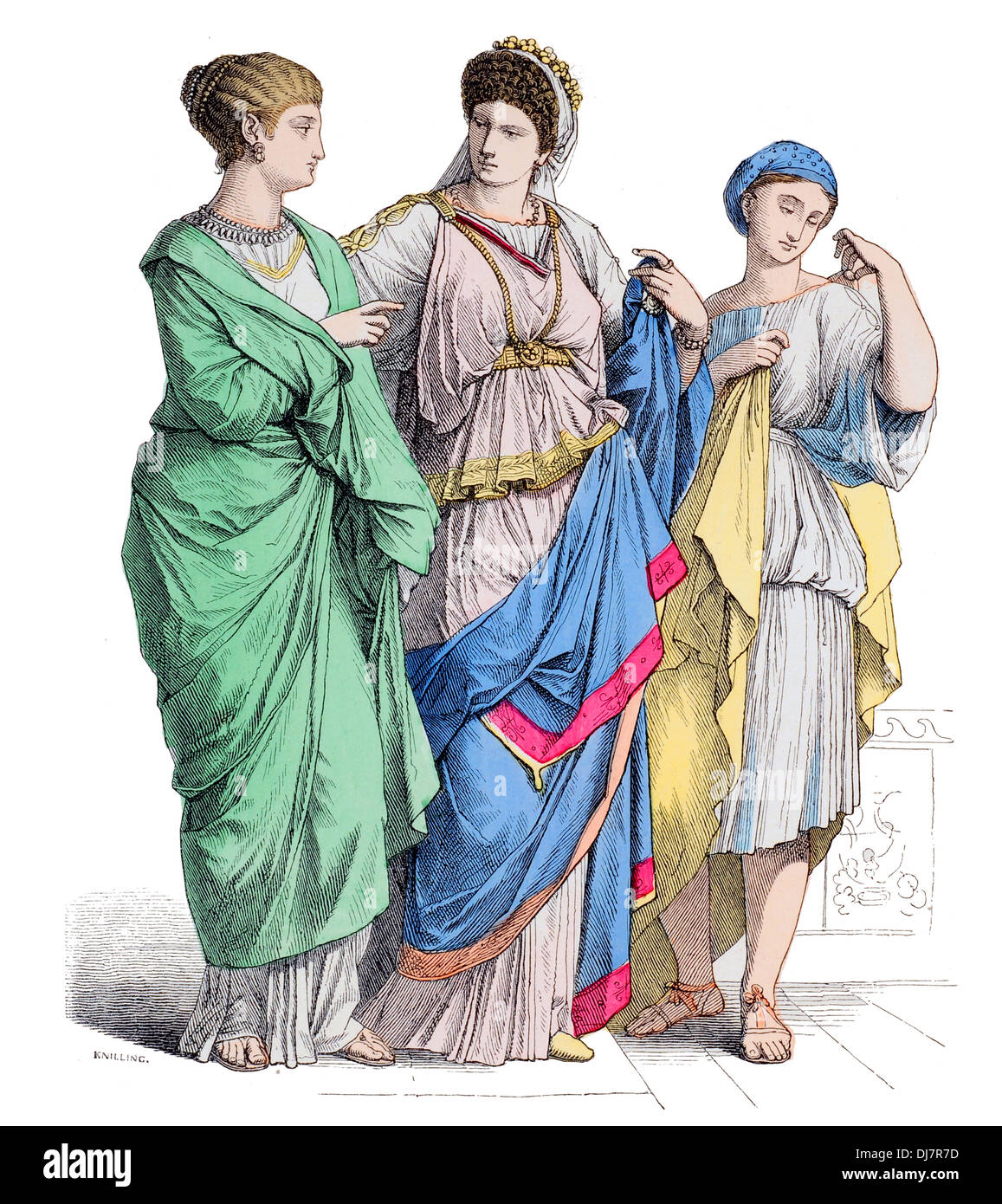 Pre Christian BC Roman Ladies of Rank and female Slave Stock Photohttps://www.alamy.com/image-license-details/?v=1https://www.alamy.com/pre-christian-bc-roman-ladies-of-rank-and-female-slave-image62866817.html
Pre Christian BC Roman Ladies of Rank and female Slave Stock Photohttps://www.alamy.com/image-license-details/?v=1https://www.alamy.com/pre-christian-bc-roman-ladies-of-rank-and-female-slave-image62866817.htmlRFDJ7R7D–Pre Christian BC Roman Ladies of Rank and female Slave
 City Hall, Roemer, former patrician houses, Roemerberg, Frankfurt am Main, Hesse, Germany Stock Photohttps://www.alamy.com/image-license-details/?v=1https://www.alamy.com/city-hall-roemer-former-patrician-houses-roemerberg-frankfurt-am-main-hesse-germany-image450309473.html
City Hall, Roemer, former patrician houses, Roemerberg, Frankfurt am Main, Hesse, Germany Stock Photohttps://www.alamy.com/image-license-details/?v=1https://www.alamy.com/city-hall-roemer-former-patrician-houses-roemerberg-frankfurt-am-main-hesse-germany-image450309473.htmlRM2H4HA95–City Hall, Roemer, former patrician houses, Roemerberg, Frankfurt am Main, Hesse, Germany
 The Casina Pio IV, Gardens of Vatican City, Rome, Italy, 19th Century Stock Photohttps://www.alamy.com/image-license-details/?v=1https://www.alamy.com/stock-photo-the-casina-pio-iv-gardens-of-vatican-city-rome-italy-19th-century-175212320.html
The Casina Pio IV, Gardens of Vatican City, Rome, Italy, 19th Century Stock Photohttps://www.alamy.com/image-license-details/?v=1https://www.alamy.com/stock-photo-the-casina-pio-iv-gardens-of-vatican-city-rome-italy-19th-century-175212320.htmlRMM51H2T–The Casina Pio IV, Gardens of Vatican City, Rome, Italy, 19th Century
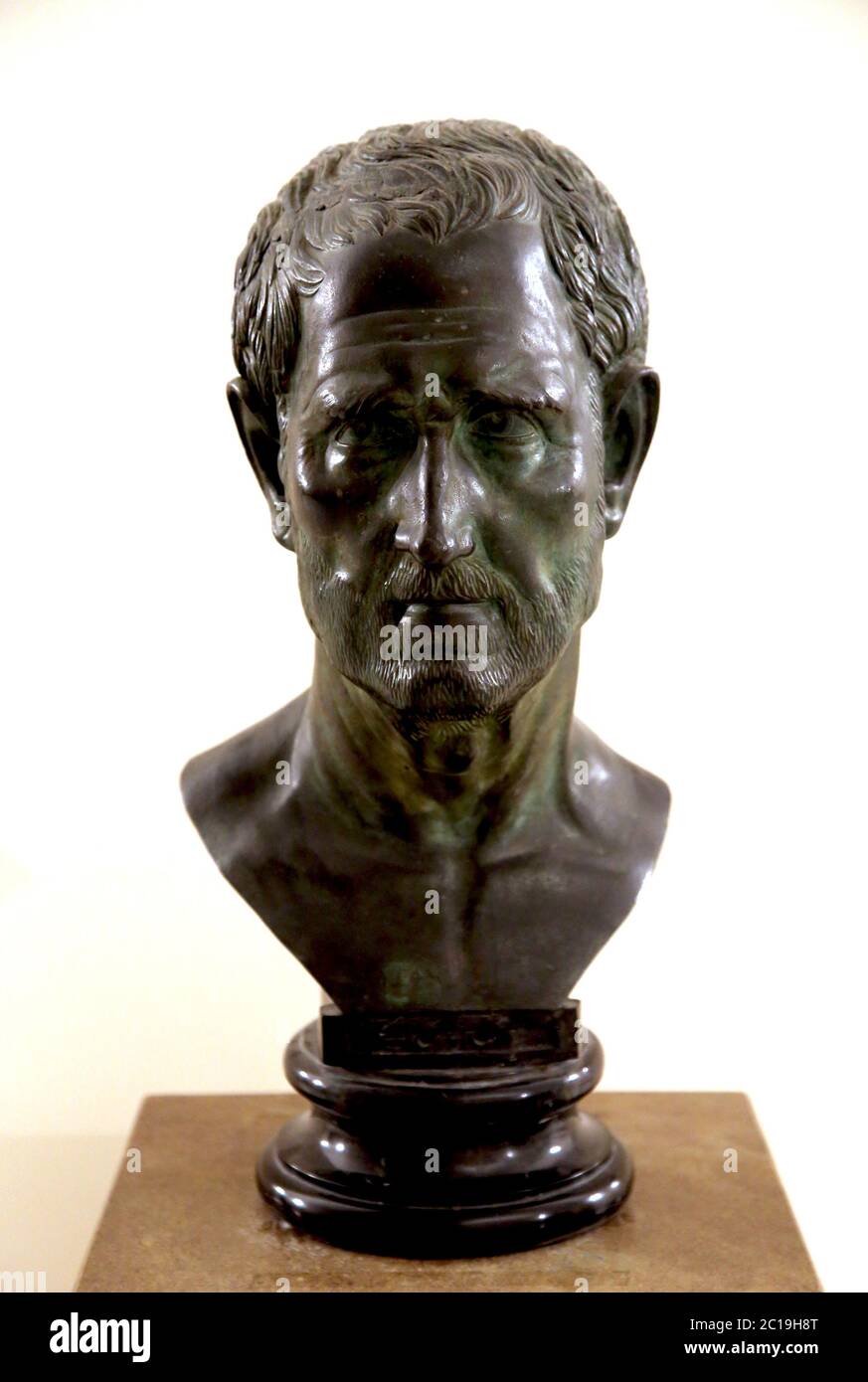 The so called Servilius Ahala ( 5th century BC). Roman politician. Bronze portrait of 1st century BC. Naples Archaeological Museum. Stock Photohttps://www.alamy.com/image-license-details/?v=1https://www.alamy.com/the-so-called-servilius-ahala-5th-century-bc-roman-politician-bronze-portrait-of-1st-century-bc-naples-archaeological-museum-image362243528.html
The so called Servilius Ahala ( 5th century BC). Roman politician. Bronze portrait of 1st century BC. Naples Archaeological Museum. Stock Photohttps://www.alamy.com/image-license-details/?v=1https://www.alamy.com/the-so-called-servilius-ahala-5th-century-bc-roman-politician-bronze-portrait-of-1st-century-bc-naples-archaeological-museum-image362243528.htmlRM2C19H8T–The so called Servilius Ahala ( 5th century BC). Roman politician. Bronze portrait of 1st century BC. Naples Archaeological Museum.
 A shrine of Plebeian Chastity is set up by Virginia, who had been refused access to the shrine of Patrician Chastity because she had married Volumnius, a plebeian. She set up the shrine in her own house. Stock Photohttps://www.alamy.com/image-license-details/?v=1https://www.alamy.com/a-shrine-of-plebeian-chastity-is-set-up-by-virginia-who-had-been-refused-access-to-the-shrine-of-patrician-chastity-because-she-had-married-volumnius-a-plebeian-she-set-up-the-shrine-in-her-own-house-image560829292.html
A shrine of Plebeian Chastity is set up by Virginia, who had been refused access to the shrine of Patrician Chastity because she had married Volumnius, a plebeian. She set up the shrine in her own house. Stock Photohttps://www.alamy.com/image-license-details/?v=1https://www.alamy.com/a-shrine-of-plebeian-chastity-is-set-up-by-virginia-who-had-been-refused-access-to-the-shrine-of-patrician-chastity-because-she-had-married-volumnius-a-plebeian-she-set-up-the-shrine-in-her-own-house-image560829292.htmlRM2RGBYDG–A shrine of Plebeian Chastity is set up by Virginia, who had been refused access to the shrine of Patrician Chastity because she had married Volumnius, a plebeian. She set up the shrine in her own house.
 The section of the Ahenobarbus shows men enrolling for the election in Rome. Since 300 B.C., the plebeians were equal to the patricians. Stock Photohttps://www.alamy.com/image-license-details/?v=1https://www.alamy.com/the-section-of-the-ahenobarbus-shows-men-enrolling-for-the-election-in-rome-since-300-bc-the-plebeians-were-equal-to-the-patricians-image385783684.html
The section of the Ahenobarbus shows men enrolling for the election in Rome. Since 300 B.C., the plebeians were equal to the patricians. Stock Photohttps://www.alamy.com/image-license-details/?v=1https://www.alamy.com/the-section-of-the-ahenobarbus-shows-men-enrolling-for-the-election-in-rome-since-300-bc-the-plebeians-were-equal-to-the-patricians-image385783684.htmlRM2DBHY0M–The section of the Ahenobarbus shows men enrolling for the election in Rome. Since 300 B.C., the plebeians were equal to the patricians.
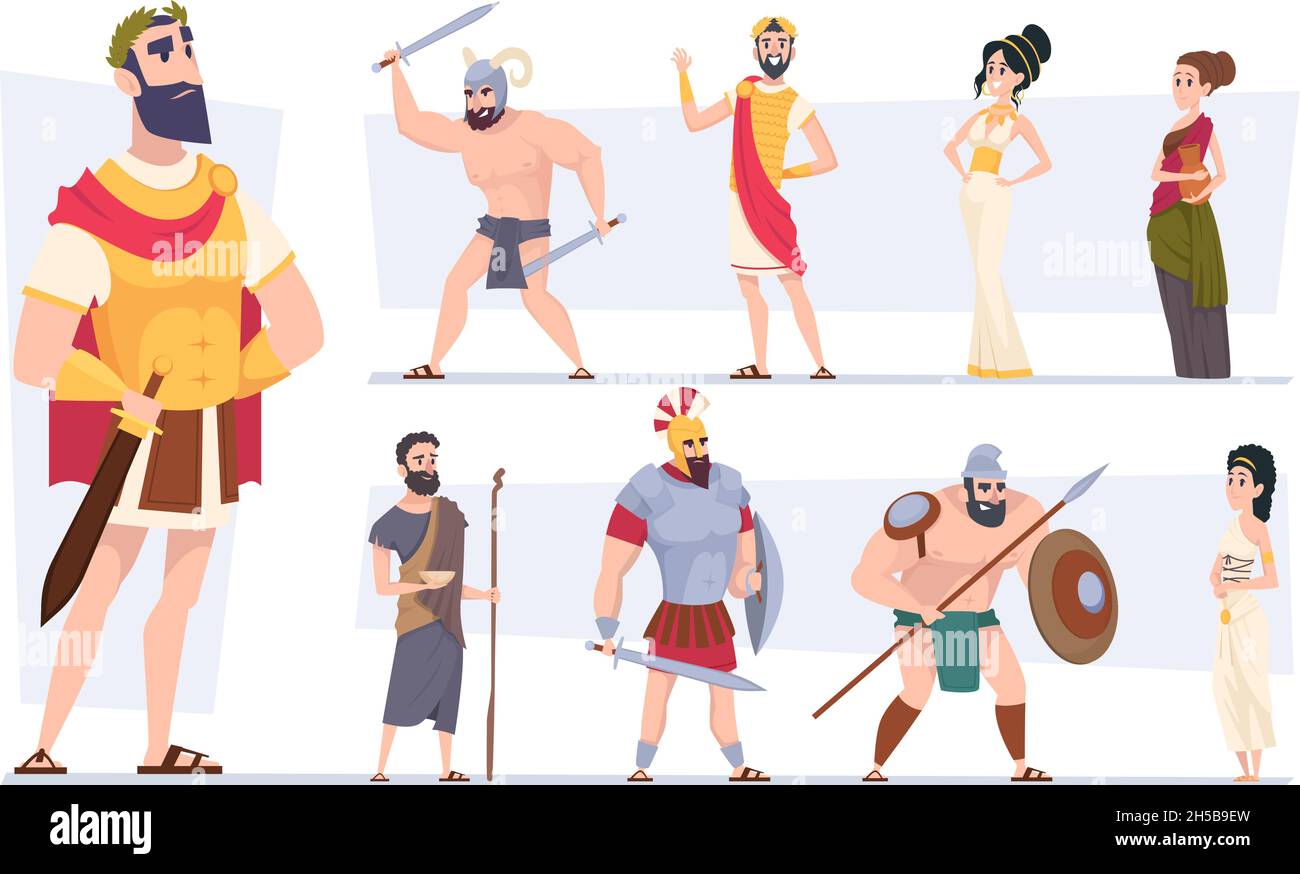 Ancient rome. Authentic clothes of rome traditional citizens medieval outfit coliseum warriors exact vector cartoon characters Stock Vectorhttps://www.alamy.com/image-license-details/?v=1https://www.alamy.com/ancient-rome-authentic-clothes-of-rome-traditional-citizens-medieval-outfit-coliseum-warriors-exact-vector-cartoon-characters-image450791793.html
Ancient rome. Authentic clothes of rome traditional citizens medieval outfit coliseum warriors exact vector cartoon characters Stock Vectorhttps://www.alamy.com/image-license-details/?v=1https://www.alamy.com/ancient-rome-authentic-clothes-of-rome-traditional-citizens-medieval-outfit-coliseum-warriors-exact-vector-cartoon-characters-image450791793.htmlRF2H5B9EW–Ancient rome. Authentic clothes of rome traditional citizens medieval outfit coliseum warriors exact vector cartoon characters
 Scene from a comedy from the House of the Patrician or Centenary (Casa del Centenario), Regio IX, Insula VIII. Stock Photohttps://www.alamy.com/image-license-details/?v=1https://www.alamy.com/scene-from-a-comedy-from-the-house-of-the-patrician-or-centenary-casa-image62668731.html
Scene from a comedy from the House of the Patrician or Centenary (Casa del Centenario), Regio IX, Insula VIII. Stock Photohttps://www.alamy.com/image-license-details/?v=1https://www.alamy.com/scene-from-a-comedy-from-the-house-of-the-patrician-or-centenary-casa-image62668731.htmlRMDHXPGY–Scene from a comedy from the House of the Patrician or Centenary (Casa del Centenario), Regio IX, Insula VIII.
 'Roman Patrician', 1852. Artist: John Leech. Stock Photohttps://www.alamy.com/image-license-details/?v=1https://www.alamy.com/roman-patrician-1852-artist-john-leech-image186135070.html
'Roman Patrician', 1852. Artist: John Leech. Stock Photohttps://www.alamy.com/image-license-details/?v=1https://www.alamy.com/roman-patrician-1852-artist-john-leech-image186135070.htmlRMMPR552–'Roman Patrician', 1852. Artist: John Leech.
 Scene from a tragedy from the house of the Patrician or Centenary (Casa del Centenario), Regio IX, Insula VIII. Stock Photohttps://www.alamy.com/image-license-details/?v=1https://www.alamy.com/scene-from-a-tragedy-from-the-house-of-the-patrician-or-centenary-image62668729.html
Scene from a tragedy from the house of the Patrician or Centenary (Casa del Centenario), Regio IX, Insula VIII. Stock Photohttps://www.alamy.com/image-license-details/?v=1https://www.alamy.com/scene-from-a-tragedy-from-the-house-of-the-patrician-or-centenary-image62668729.htmlRMDHXPGW–Scene from a tragedy from the house of the Patrician or Centenary (Casa del Centenario), Regio IX, Insula VIII.
 Italy, Herculaneum. House of the Deer (Casa dei Cervi). Patrician mansion built in the 1st century AD. La Campania. Stock Photohttps://www.alamy.com/image-license-details/?v=1https://www.alamy.com/italy-herculaneum-house-of-the-deer-casa-dei-cervi-patrician-mansion-built-in-the-1st-century-ad-la-campania-image342140184.html
Italy, Herculaneum. House of the Deer (Casa dei Cervi). Patrician mansion built in the 1st century AD. La Campania. Stock Photohttps://www.alamy.com/image-license-details/?v=1https://www.alamy.com/italy-herculaneum-house-of-the-deer-casa-dei-cervi-patrician-mansion-built-in-the-1st-century-ad-la-campania-image342140184.htmlRM2ATHR88–Italy, Herculaneum. House of the Deer (Casa dei Cervi). Patrician mansion built in the 1st century AD. La Campania.
 Painting of an aquarium with fish and lobster from the House of the Patrician or Centenary (Casa del Centenario), Regio IX, Insula VIII. Chromolithograph by J.G. Bach after an illustration by Miss Amy Butts from Emile Presuhn’s Les Plus Belles Peintures de Pompei (The Most Beautiful Paintings of Pompeii), Leipzig, 1881. Stock Photohttps://www.alamy.com/image-license-details/?v=1https://www.alamy.com/stock-image-painting-of-an-aquarium-with-fish-and-lobster-from-the-house-of-the-165651735.html
Painting of an aquarium with fish and lobster from the House of the Patrician or Centenary (Casa del Centenario), Regio IX, Insula VIII. Chromolithograph by J.G. Bach after an illustration by Miss Amy Butts from Emile Presuhn’s Les Plus Belles Peintures de Pompei (The Most Beautiful Paintings of Pompeii), Leipzig, 1881. Stock Photohttps://www.alamy.com/image-license-details/?v=1https://www.alamy.com/stock-image-painting-of-an-aquarium-with-fish-and-lobster-from-the-house-of-the-165651735.htmlRMKHE2DB–Painting of an aquarium with fish and lobster from the House of the Patrician or Centenary (Casa del Centenario), Regio IX, Insula VIII. Chromolithograph by J.G. Bach after an illustration by Miss Amy Butts from Emile Presuhn’s Les Plus Belles Peintures de Pompei (The Most Beautiful Paintings of Pompeii), Leipzig, 1881.
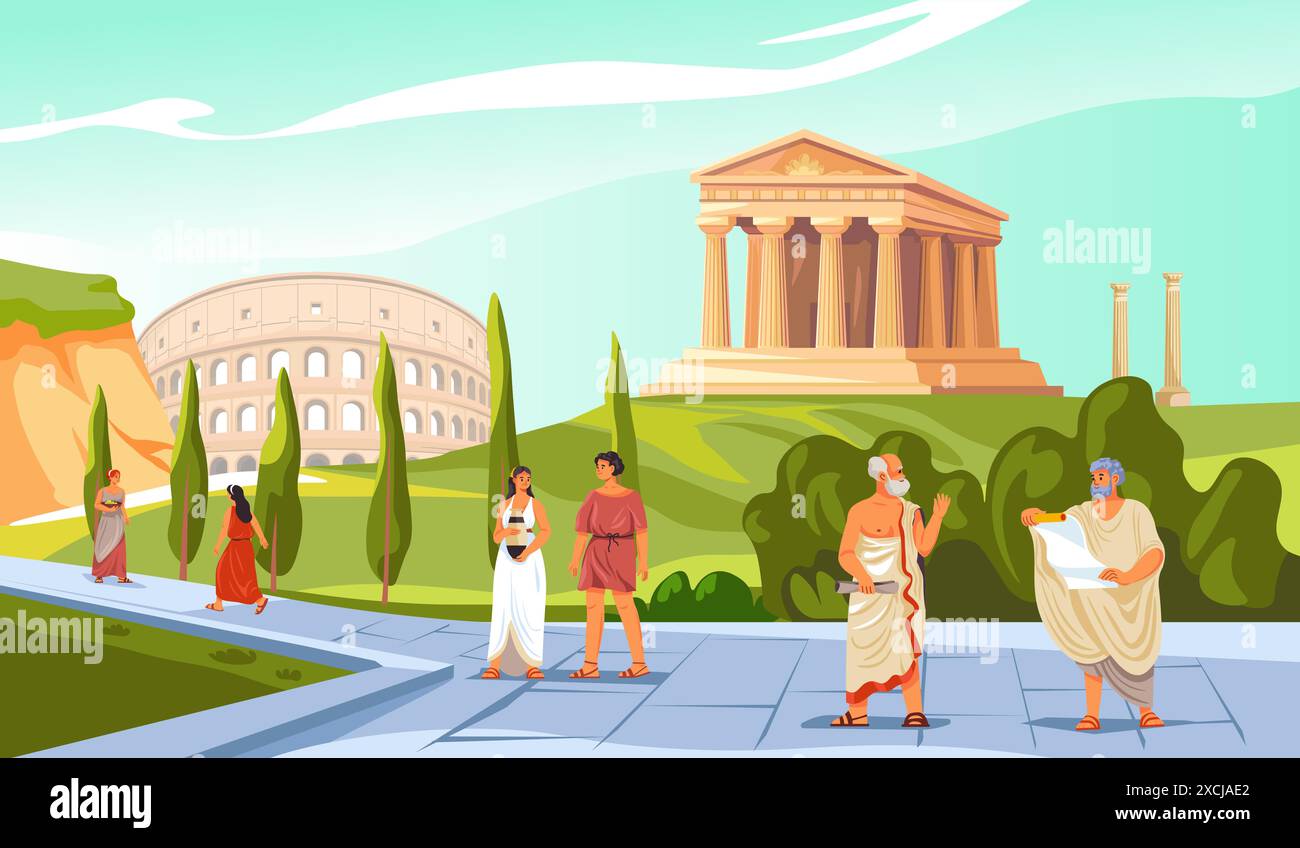 Roman citizen. Greek or ancient rome empire civilization people in toga costume clothes, patrician society historical characters at temple architecture, recent vector illustration of empire greek Stock Vectorhttps://www.alamy.com/image-license-details/?v=1https://www.alamy.com/roman-citizen-greek-or-ancient-rome-empire-civilization-people-in-toga-costume-clothes-patrician-society-historical-characters-at-temple-architecture-recent-vector-illustration-of-empire-greek-image610142122.html
Roman citizen. Greek or ancient rome empire civilization people in toga costume clothes, patrician society historical characters at temple architecture, recent vector illustration of empire greek Stock Vectorhttps://www.alamy.com/image-license-details/?v=1https://www.alamy.com/roman-citizen-greek-or-ancient-rome-empire-civilization-people-in-toga-costume-clothes-patrician-society-historical-characters-at-temple-architecture-recent-vector-illustration-of-empire-greek-image610142122.htmlRF2XCJAE2–Roman citizen. Greek or ancient rome empire civilization people in toga costume clothes, patrician society historical characters at temple architecture, recent vector illustration of empire greek
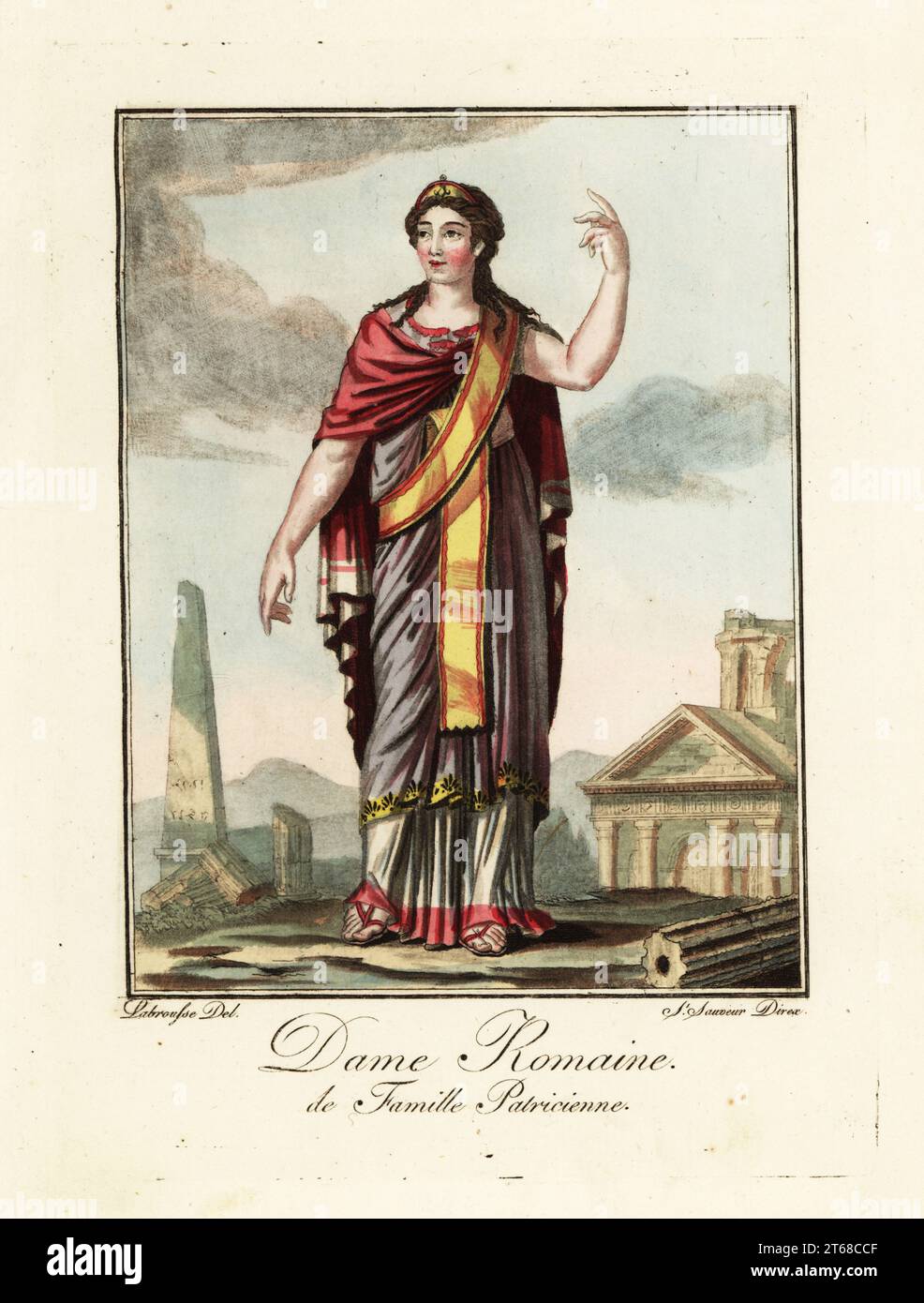 Roman woman from a Patrician family, ancient Rome. With diadem of Juno in her hair, stola (robe) with gold hem, palla (cloak). In front of a temple, obelisk and broken columns. Dame Romaine de Famille Patricienne. Handcoloured copperplate drawn and engraved by L. Labrousse, artist of Bordeaux, under the direction of Jacques Grasset de Saint-Sauveur from his Lantique Rome, ou description historique et pittoresque, Ancient Rome, or historical and picturesque description, Chez Deroy, Paris, 1796. Stock Photohttps://www.alamy.com/image-license-details/?v=1https://www.alamy.com/roman-woman-from-a-patrician-family-ancient-rome-with-diadem-of-juno-in-her-hair-stola-robe-with-gold-hem-palla-cloak-in-front-of-a-temple-obelisk-and-broken-columns-dame-romaine-de-famille-patricienne-handcoloured-copperplate-drawn-and-engraved-by-l-labrousse-artist-of-bordeaux-under-the-direction-of-jacques-grasset-de-saint-sauveur-from-his-lantique-rome-ou-description-historique-et-pittoresque-ancient-rome-or-historical-and-picturesque-description-chez-deroy-paris-1796-image571815455.html
Roman woman from a Patrician family, ancient Rome. With diadem of Juno in her hair, stola (robe) with gold hem, palla (cloak). In front of a temple, obelisk and broken columns. Dame Romaine de Famille Patricienne. Handcoloured copperplate drawn and engraved by L. Labrousse, artist of Bordeaux, under the direction of Jacques Grasset de Saint-Sauveur from his Lantique Rome, ou description historique et pittoresque, Ancient Rome, or historical and picturesque description, Chez Deroy, Paris, 1796. Stock Photohttps://www.alamy.com/image-license-details/?v=1https://www.alamy.com/roman-woman-from-a-patrician-family-ancient-rome-with-diadem-of-juno-in-her-hair-stola-robe-with-gold-hem-palla-cloak-in-front-of-a-temple-obelisk-and-broken-columns-dame-romaine-de-famille-patricienne-handcoloured-copperplate-drawn-and-engraved-by-l-labrousse-artist-of-bordeaux-under-the-direction-of-jacques-grasset-de-saint-sauveur-from-his-lantique-rome-ou-description-historique-et-pittoresque-ancient-rome-or-historical-and-picturesque-description-chez-deroy-paris-1796-image571815455.htmlRM2T68CCF–Roman woman from a Patrician family, ancient Rome. With diadem of Juno in her hair, stola (robe) with gold hem, palla (cloak). In front of a temple, obelisk and broken columns. Dame Romaine de Famille Patricienne. Handcoloured copperplate drawn and engraved by L. Labrousse, artist of Bordeaux, under the direction of Jacques Grasset de Saint-Sauveur from his Lantique Rome, ou description historique et pittoresque, Ancient Rome, or historical and picturesque description, Chez Deroy, Paris, 1796.
 Re-enactors in costume celebrate the 2769th anniversary of the founding of Rome on 21st April 753 B.C. Stock Photohttps://www.alamy.com/image-license-details/?v=1https://www.alamy.com/stock-photo-re-enactors-in-costume-celebrate-the-2769th-anniversary-of-the-founding-102901296.html
Re-enactors in costume celebrate the 2769th anniversary of the founding of Rome on 21st April 753 B.C. Stock Photohttps://www.alamy.com/image-license-details/?v=1https://www.alamy.com/stock-photo-re-enactors-in-costume-celebrate-the-2769th-anniversary-of-the-founding-102901296.htmlRMFYBFJ8–Re-enactors in costume celebrate the 2769th anniversary of the founding of Rome on 21st April 753 B.C.
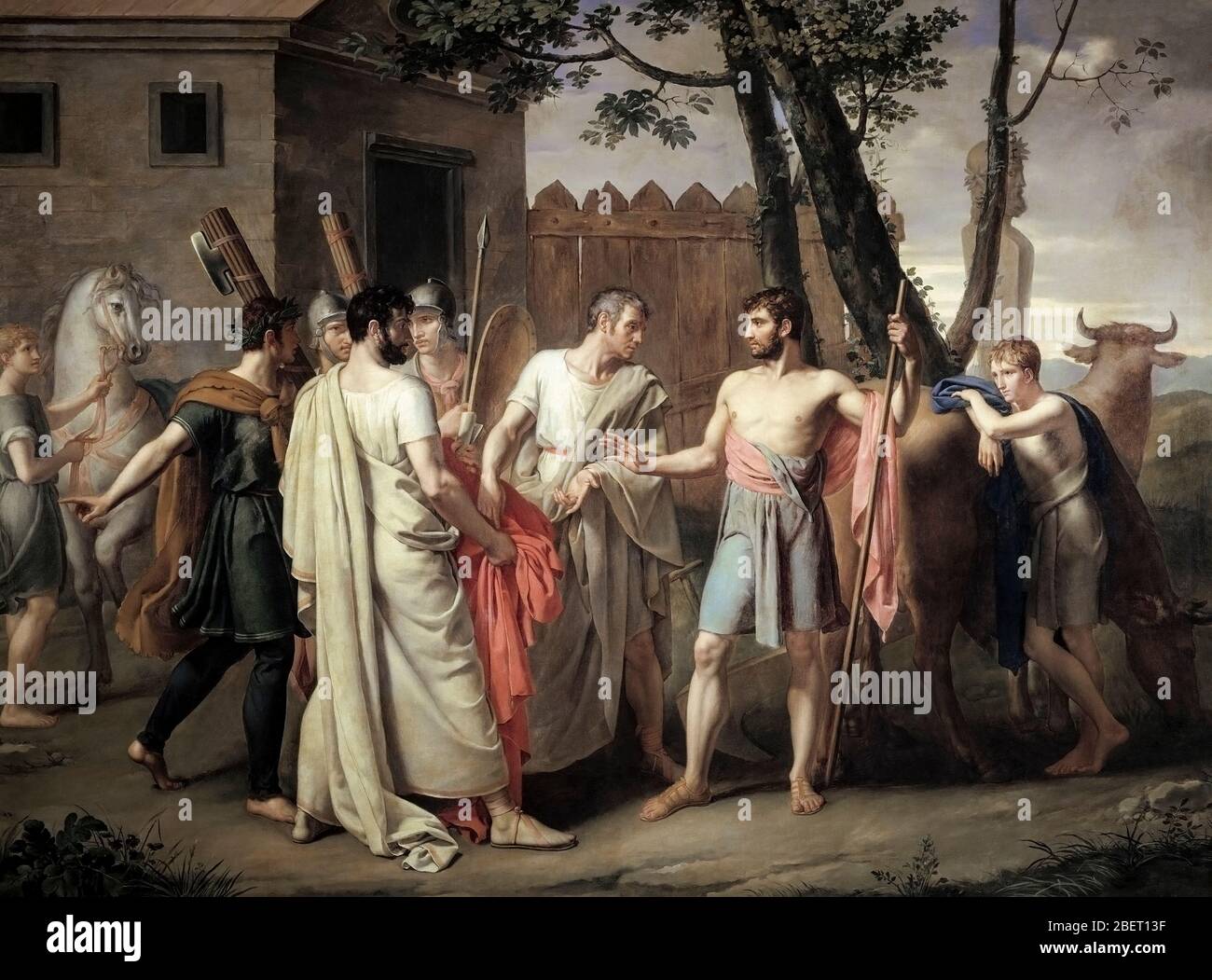 painting of Cincinnatus leaving the plough to go dictate laws to Rome. Stock Photohttps://www.alamy.com/image-license-details/?v=1https://www.alamy.com/painting-of-cincinnatus-leaving-the-plough-to-go-dictate-laws-to-rome-image353340275.html
painting of Cincinnatus leaving the plough to go dictate laws to Rome. Stock Photohttps://www.alamy.com/image-license-details/?v=1https://www.alamy.com/painting-of-cincinnatus-leaving-the-plough-to-go-dictate-laws-to-rome-image353340275.htmlRF2BET13F–painting of Cincinnatus leaving the plough to go dictate laws to Rome.
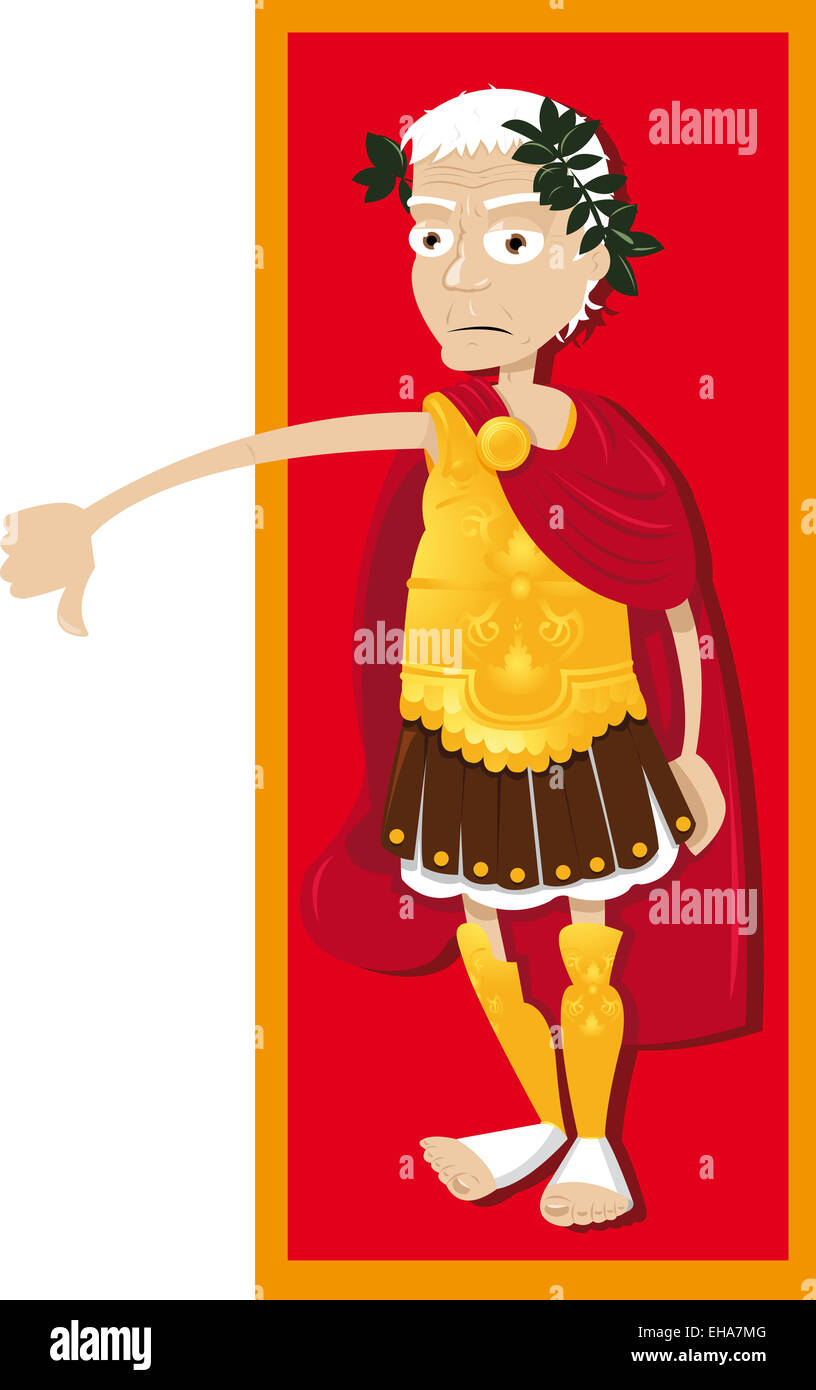 a vector cartoon represeting a funny Julius Caesar, thumbs down Stock Photohttps://www.alamy.com/image-license-details/?v=1https://www.alamy.com/stock-photo-a-vector-cartoon-represeting-a-funny-julius-caesar-thumbs-down-79516208.html
a vector cartoon represeting a funny Julius Caesar, thumbs down Stock Photohttps://www.alamy.com/image-license-details/?v=1https://www.alamy.com/stock-photo-a-vector-cartoon-represeting-a-funny-julius-caesar-thumbs-down-79516208.htmlRFEHA7MG–a vector cartoon represeting a funny Julius Caesar, thumbs down
 LIDO DI OSTIA – ROME, Via dei Lucilii takes its name from the gens Lucilia, an ancient Roman patrician family of senatorial rank, Ostia Lido, Rome, It Stock Photohttps://www.alamy.com/image-license-details/?v=1https://www.alamy.com/lido-di-ostia-rome-via-dei-lucilii-takes-its-name-from-the-gens-lucilia-an-ancient-roman-patrician-family-of-senatorial-rank-ostia-lido-rome-it-image623189978.html
LIDO DI OSTIA – ROME, Via dei Lucilii takes its name from the gens Lucilia, an ancient Roman patrician family of senatorial rank, Ostia Lido, Rome, It Stock Photohttps://www.alamy.com/image-license-details/?v=1https://www.alamy.com/lido-di-ostia-rome-via-dei-lucilii-takes-its-name-from-the-gens-lucilia-an-ancient-roman-patrician-family-of-senatorial-rank-ostia-lido-rome-it-image623189978.htmlRM2Y5TN4X–LIDO DI OSTIA – ROME, Via dei Lucilii takes its name from the gens Lucilia, an ancient Roman patrician family of senatorial rank, Ostia Lido, Rome, It
 Portrait of a high-ranking figure was fitted onto an older statue. Rome. Head: 4th-5th c. AD Body: first half of 2nd c. Ad. Stock Photohttps://www.alamy.com/image-license-details/?v=1https://www.alamy.com/stock-photo-portrait-of-a-high-ranking-figure-was-fitted-onto-an-older-statue-82511173.html
Portrait of a high-ranking figure was fitted onto an older statue. Rome. Head: 4th-5th c. AD Body: first half of 2nd c. Ad. Stock Photohttps://www.alamy.com/image-license-details/?v=1https://www.alamy.com/stock-photo-portrait-of-a-high-ranking-figure-was-fitted-onto-an-older-statue-82511173.htmlRMEP6KRH–Portrait of a high-ranking figure was fitted onto an older statue. Rome. Head: 4th-5th c. AD Body: first half of 2nd c. Ad.
 The Patrician's Dream or The Foundation of Santa Maria Maggiore in Rome I: The Dream of Patrician John is a 1665 oil on canvas painting by Bartolome Murillo. Stock Photohttps://www.alamy.com/image-license-details/?v=1https://www.alamy.com/the-patricians-dream-or-the-foundation-of-santa-maria-maggiore-in-rome-i-the-dream-of-patrician-john-is-a-1665-oil-on-canvas-painting-by-bartolome-murillo-image602900229.html
The Patrician's Dream or The Foundation of Santa Maria Maggiore in Rome I: The Dream of Patrician John is a 1665 oil on canvas painting by Bartolome Murillo. Stock Photohttps://www.alamy.com/image-license-details/?v=1https://www.alamy.com/the-patricians-dream-or-the-foundation-of-santa-maria-maggiore-in-rome-i-the-dream-of-patrician-john-is-a-1665-oil-on-canvas-painting-by-bartolome-murillo-image602900229.htmlRM2X0TDB1–The Patrician's Dream or The Foundation of Santa Maria Maggiore in Rome I: The Dream of Patrician John is a 1665 oil on canvas painting by Bartolome Murillo.
 Original artwork of Camillus' Banishment, a Roman soldier and statesman of patrician descent. Published in A pictorial history of the world's great na Stock Photohttps://www.alamy.com/image-license-details/?v=1https://www.alamy.com/original-artwork-of-camillus-banishment-a-roman-soldier-and-statesman-of-patrician-descent-published-in-a-pictorial-history-of-the-worlds-great-na-image220980702.html
Original artwork of Camillus' Banishment, a Roman soldier and statesman of patrician descent. Published in A pictorial history of the world's great na Stock Photohttps://www.alamy.com/image-license-details/?v=1https://www.alamy.com/original-artwork-of-camillus-banishment-a-roman-soldier-and-statesman-of-patrician-descent-published-in-a-pictorial-history-of-the-worlds-great-na-image220980702.htmlRFPREF3X–Original artwork of Camillus' Banishment, a Roman soldier and statesman of patrician descent. Published in A pictorial history of the world's great na
 Bartolomé Esteban Murillo - the Foundation of Santa Maria Maggiore in Rome the Patrician Recounts His Dream to the Pope Stock Photohttps://www.alamy.com/image-license-details/?v=1https://www.alamy.com/bartolom-esteban-murillo-the-foundation-of-santa-maria-maggiore-in-rome-the-patrician-recounts-his-dream-to-the-pope-image640653338.html
Bartolomé Esteban Murillo - the Foundation of Santa Maria Maggiore in Rome the Patrician Recounts His Dream to the Pope Stock Photohttps://www.alamy.com/image-license-details/?v=1https://www.alamy.com/bartolom-esteban-murillo-the-foundation-of-santa-maria-maggiore-in-rome-the-patrician-recounts-his-dream-to-the-pope-image640653338.htmlRF2S687TA–Bartolomé Esteban Murillo - the Foundation of Santa Maria Maggiore in Rome the Patrician Recounts His Dream to the Pope
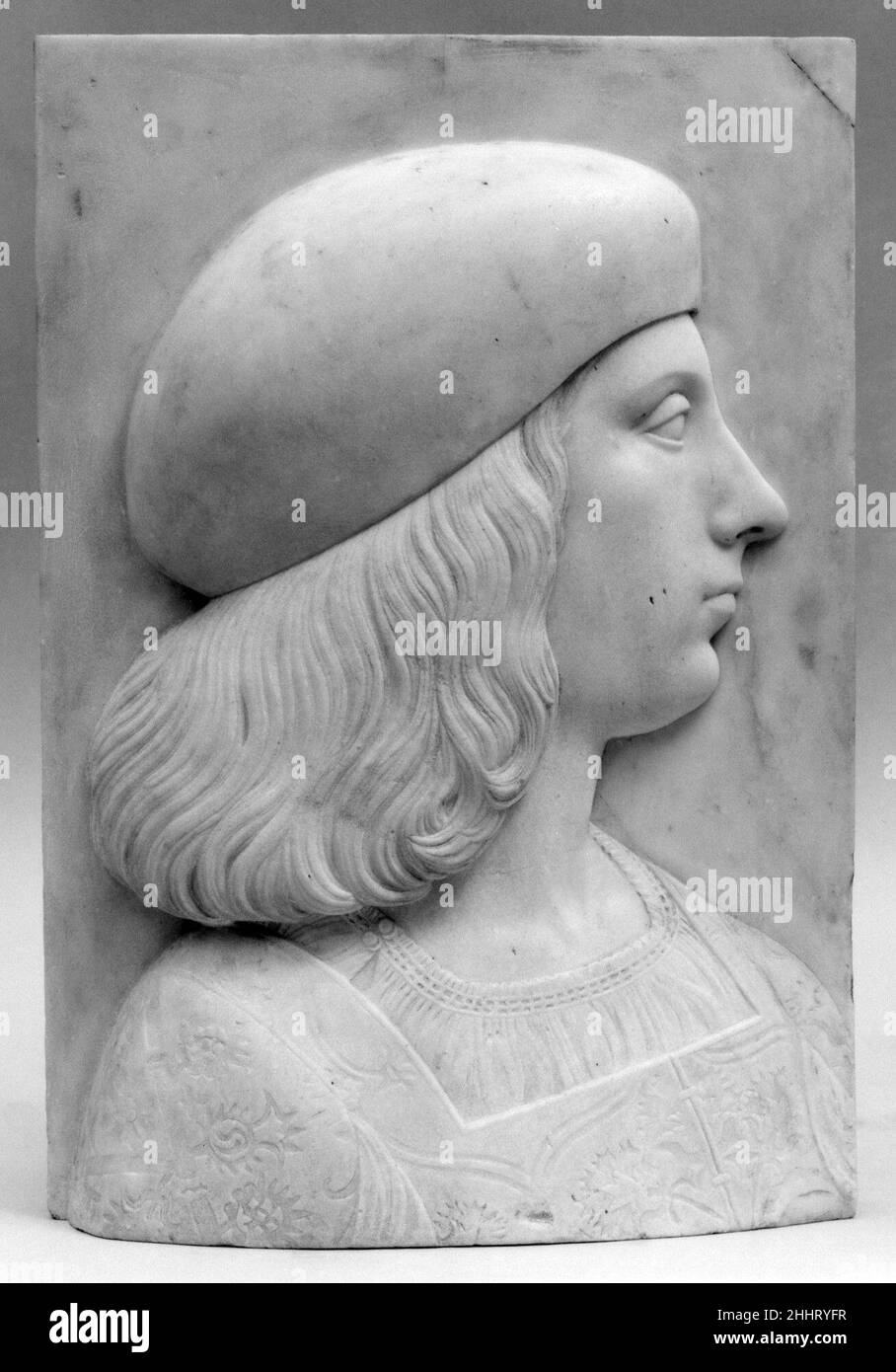 Portrait of a youthful patrician ca. 1500–1510 Attributed to Gian Cristoforo Romano Italian. Portrait of a youthful patrician. Attributed to Gian Cristoforo Romano (Italian, Rome ca.1465–1512 Loreto). Northern Italian, Mantua. ca. 1500–1510. Marble; frame: gilded wood with touches of polychrome. Sculpture Stock Photohttps://www.alamy.com/image-license-details/?v=1https://www.alamy.com/portrait-of-a-youthful-patrician-ca-15001510-attributed-to-gian-cristoforo-romano-italian-portrait-of-a-youthful-patrician-attributed-to-gian-cristoforo-romano-italian-rome-ca14651512-loreto-northern-italian-mantua-ca-15001510-marble-frame-gilded-wood-with-touches-of-polychrome-sculpture-image458445227.html
Portrait of a youthful patrician ca. 1500–1510 Attributed to Gian Cristoforo Romano Italian. Portrait of a youthful patrician. Attributed to Gian Cristoforo Romano (Italian, Rome ca.1465–1512 Loreto). Northern Italian, Mantua. ca. 1500–1510. Marble; frame: gilded wood with touches of polychrome. Sculpture Stock Photohttps://www.alamy.com/image-license-details/?v=1https://www.alamy.com/portrait-of-a-youthful-patrician-ca-15001510-attributed-to-gian-cristoforo-romano-italian-portrait-of-a-youthful-patrician-attributed-to-gian-cristoforo-romano-italian-rome-ca14651512-loreto-northern-italian-mantua-ca-15001510-marble-frame-gilded-wood-with-touches-of-polychrome-sculpture-image458445227.htmlRM2HHRYFR–Portrait of a youthful patrician ca. 1500–1510 Attributed to Gian Cristoforo Romano Italian. Portrait of a youthful patrician. Attributed to Gian Cristoforo Romano (Italian, Rome ca.1465–1512 Loreto). Northern Italian, Mantua. ca. 1500–1510. Marble; frame: gilded wood with touches of polychrome. Sculpture
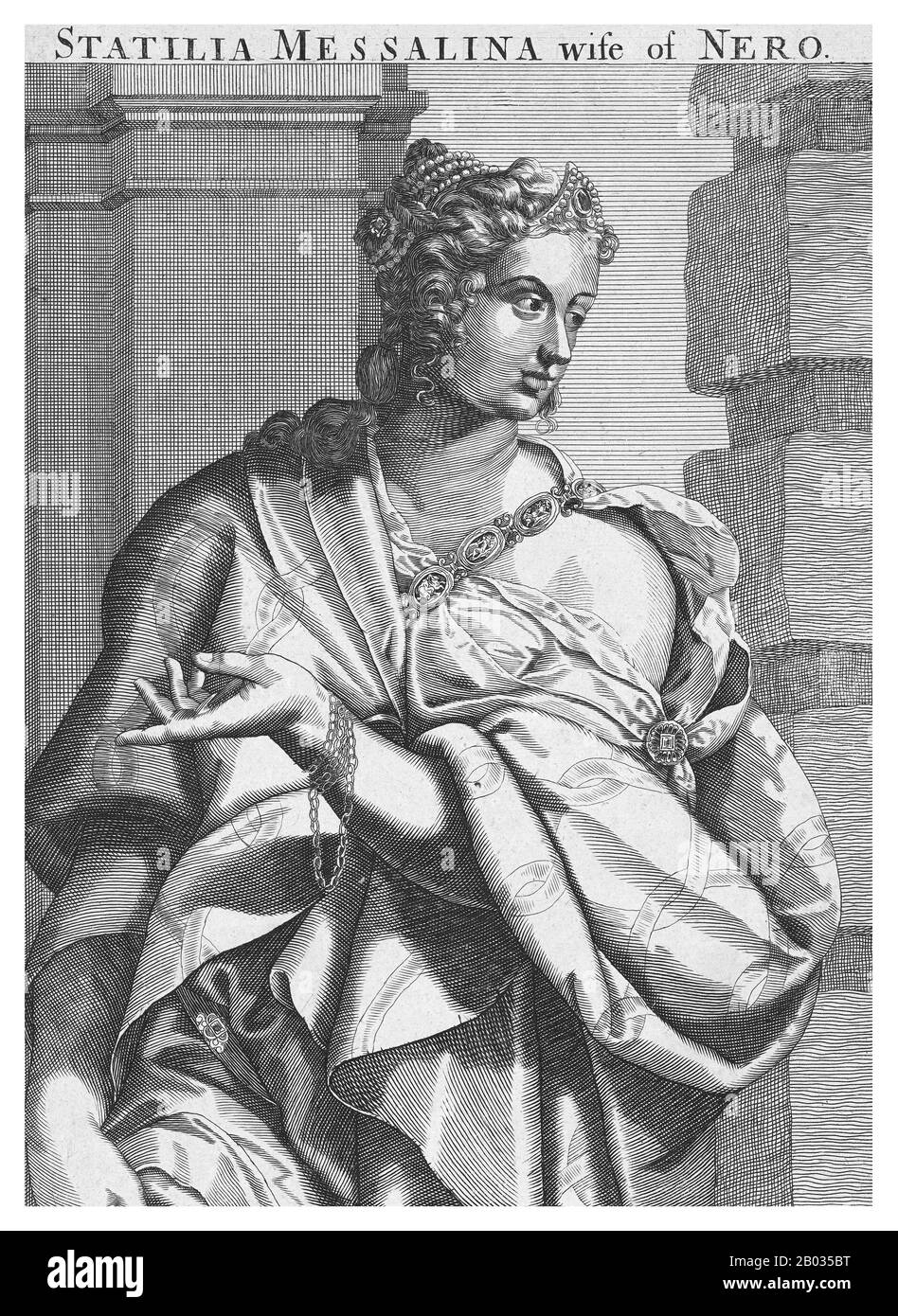 Statilia Messalina (35- after 68 CE) was a Roman patrician woman, empress and third wife to Nero. She was married to consul Marrcus Julius Vestinus Atticus, and became Nero's mistress in 65 CE. After the death of Nero's second wife Poppaea Sabina, possibly at his hands, Vestinus was forced by the emperor to commit suicide so that he could marry Statilia. She was one of the few courtiers to survive the collapse of Nero's reign, dying some time after 68 CE. Stock Photohttps://www.alamy.com/image-license-details/?v=1https://www.alamy.com/statilia-messalina-35-after-68-ce-was-a-roman-patrician-woman-empress-and-third-wife-to-nero-she-was-married-to-consul-marrcus-julius-vestinus-atticus-and-became-neros-mistress-in-65-ce-after-the-death-of-neros-second-wife-poppaea-sabina-possibly-at-his-hands-vestinus-was-forced-by-the-emperor-to-commit-suicide-so-that-he-could-marry-statilia-she-was-one-of-the-few-courtiers-to-survive-the-collapse-of-neros-reign-dying-some-time-after-68-ce-image344277468.html
Statilia Messalina (35- after 68 CE) was a Roman patrician woman, empress and third wife to Nero. She was married to consul Marrcus Julius Vestinus Atticus, and became Nero's mistress in 65 CE. After the death of Nero's second wife Poppaea Sabina, possibly at his hands, Vestinus was forced by the emperor to commit suicide so that he could marry Statilia. She was one of the few courtiers to survive the collapse of Nero's reign, dying some time after 68 CE. Stock Photohttps://www.alamy.com/image-license-details/?v=1https://www.alamy.com/statilia-messalina-35-after-68-ce-was-a-roman-patrician-woman-empress-and-third-wife-to-nero-she-was-married-to-consul-marrcus-julius-vestinus-atticus-and-became-neros-mistress-in-65-ce-after-the-death-of-neros-second-wife-poppaea-sabina-possibly-at-his-hands-vestinus-was-forced-by-the-emperor-to-commit-suicide-so-that-he-could-marry-statilia-she-was-one-of-the-few-courtiers-to-survive-the-collapse-of-neros-reign-dying-some-time-after-68-ce-image344277468.htmlRM2B035BT–Statilia Messalina (35- after 68 CE) was a Roman patrician woman, empress and third wife to Nero. She was married to consul Marrcus Julius Vestinus Atticus, and became Nero's mistress in 65 CE. After the death of Nero's second wife Poppaea Sabina, possibly at his hands, Vestinus was forced by the emperor to commit suicide so that he could marry Statilia. She was one of the few courtiers to survive the collapse of Nero's reign, dying some time after 68 CE.
 Roman woman. Unidentified portrait. Trajanic period (AD 98-117). National Archaeological Museum. Naples. Italy. Stock Photohttps://www.alamy.com/image-license-details/?v=1https://www.alamy.com/stock-photo-roman-woman-unidentified-portrait-trajanic-period-ad-98-117-national-139667824.html
Roman woman. Unidentified portrait. Trajanic period (AD 98-117). National Archaeological Museum. Naples. Italy. Stock Photohttps://www.alamy.com/image-license-details/?v=1https://www.alamy.com/stock-photo-roman-woman-unidentified-portrait-trajanic-period-ad-98-117-national-139667824.htmlRMJ36BMG–Roman woman. Unidentified portrait. Trajanic period (AD 98-117). National Archaeological Museum. Naples. Italy.
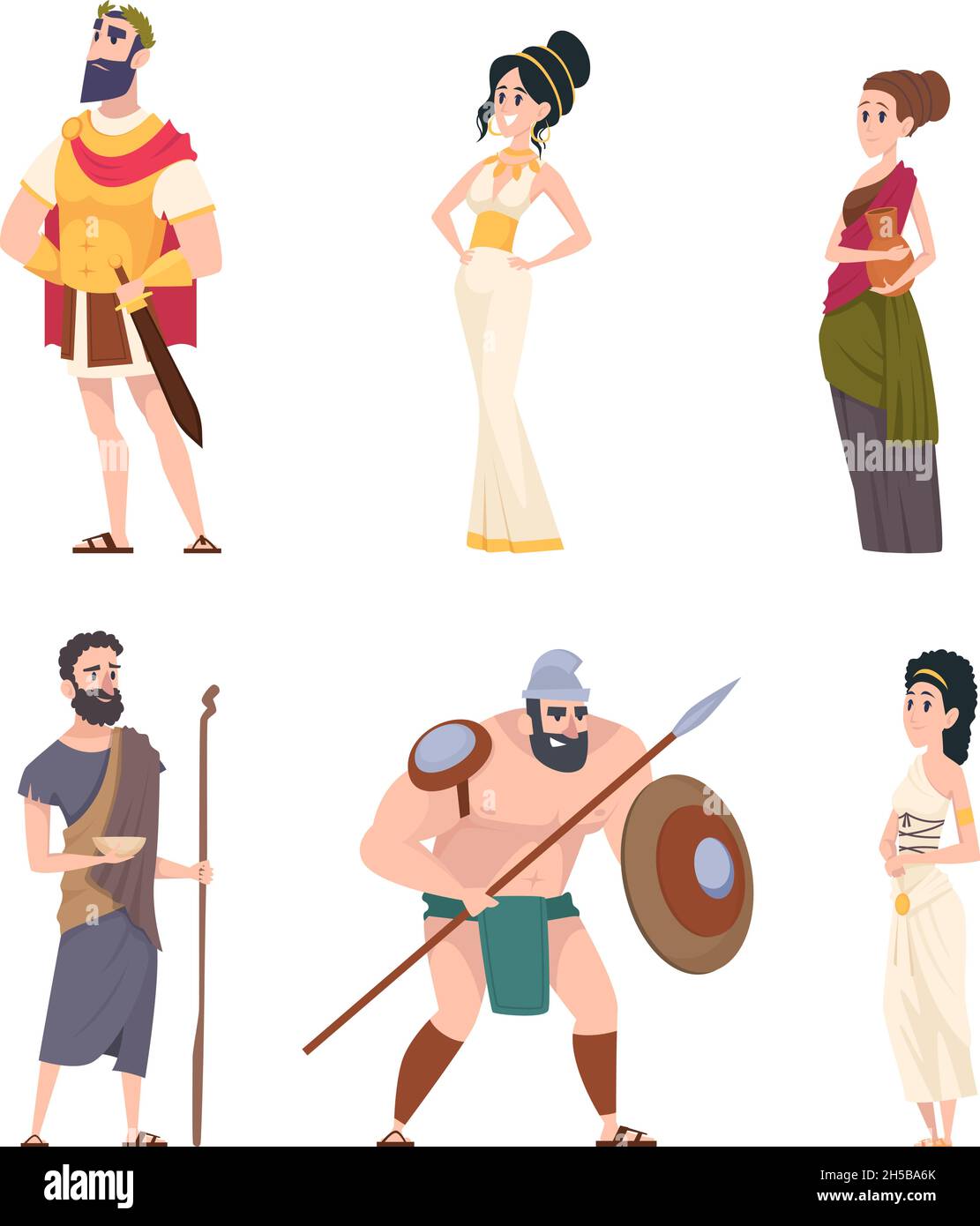 Ancient rome characters. Coliseum gladiator warriors with weapon citizens men traditional cultural persons exact vector people Stock Vectorhttps://www.alamy.com/image-license-details/?v=1https://www.alamy.com/ancient-rome-characters-coliseum-gladiator-warriors-with-weapon-citizens-men-traditional-cultural-persons-exact-vector-people-image450792347.html
Ancient rome characters. Coliseum gladiator warriors with weapon citizens men traditional cultural persons exact vector people Stock Vectorhttps://www.alamy.com/image-license-details/?v=1https://www.alamy.com/ancient-rome-characters-coliseum-gladiator-warriors-with-weapon-citizens-men-traditional-cultural-persons-exact-vector-people-image450792347.htmlRF2H5BA6K–Ancient rome characters. Coliseum gladiator warriors with weapon citizens men traditional cultural persons exact vector people
 Marcus Ulpius Traianus (53-117), more famously known as Trajan, was born in the province of Hispania Baetica in 53 CE, to a non-patrician family. He rose to prominence during Domitian's reign, and fought in numerous campaigns. He was adopted as Nerva's heir and successor in 97 CE, the emperor compelled to do so by the Praetorian Guard. Trajan became emperor in 98 after his predecessor's death. Trajan is considered one of the greatest emperors of the Roman Empire, with the senate officially declaring him 'optimus princeps', or 'best ruler'. He was a highly successful soldier-emperor who led th Stock Photohttps://www.alamy.com/image-license-details/?v=1https://www.alamy.com/marcus-ulpius-traianus-53-117-more-famously-known-as-trajan-was-born-in-the-province-of-hispania-baetica-in-53-ce-to-a-non-patrician-family-he-rose-to-prominence-during-domitians-reign-and-fought-in-numerous-campaigns-he-was-adopted-as-nervas-heir-and-successor-in-97-ce-the-emperor-compelled-to-do-so-by-the-praetorian-guard-trajan-became-emperor-in-98-after-his-predecessors-death-trajan-is-considered-one-of-the-greatest-emperors-of-the-roman-empire-with-the-senate-officially-declaring-him-optimus-princeps-or-best-ruler-he-was-a-highly-successful-soldier-emperor-who-led-th-image344280054.html
Marcus Ulpius Traianus (53-117), more famously known as Trajan, was born in the province of Hispania Baetica in 53 CE, to a non-patrician family. He rose to prominence during Domitian's reign, and fought in numerous campaigns. He was adopted as Nerva's heir and successor in 97 CE, the emperor compelled to do so by the Praetorian Guard. Trajan became emperor in 98 after his predecessor's death. Trajan is considered one of the greatest emperors of the Roman Empire, with the senate officially declaring him 'optimus princeps', or 'best ruler'. He was a highly successful soldier-emperor who led th Stock Photohttps://www.alamy.com/image-license-details/?v=1https://www.alamy.com/marcus-ulpius-traianus-53-117-more-famously-known-as-trajan-was-born-in-the-province-of-hispania-baetica-in-53-ce-to-a-non-patrician-family-he-rose-to-prominence-during-domitians-reign-and-fought-in-numerous-campaigns-he-was-adopted-as-nervas-heir-and-successor-in-97-ce-the-emperor-compelled-to-do-so-by-the-praetorian-guard-trajan-became-emperor-in-98-after-his-predecessors-death-trajan-is-considered-one-of-the-greatest-emperors-of-the-roman-empire-with-the-senate-officially-declaring-him-optimus-princeps-or-best-ruler-he-was-a-highly-successful-soldier-emperor-who-led-th-image344280054.htmlRM2B038M6–Marcus Ulpius Traianus (53-117), more famously known as Trajan, was born in the province of Hispania Baetica in 53 CE, to a non-patrician family. He rose to prominence during Domitian's reign, and fought in numerous campaigns. He was adopted as Nerva's heir and successor in 97 CE, the emperor compelled to do so by the Praetorian Guard. Trajan became emperor in 98 after his predecessor's death. Trajan is considered one of the greatest emperors of the Roman Empire, with the senate officially declaring him 'optimus princeps', or 'best ruler'. He was a highly successful soldier-emperor who led th
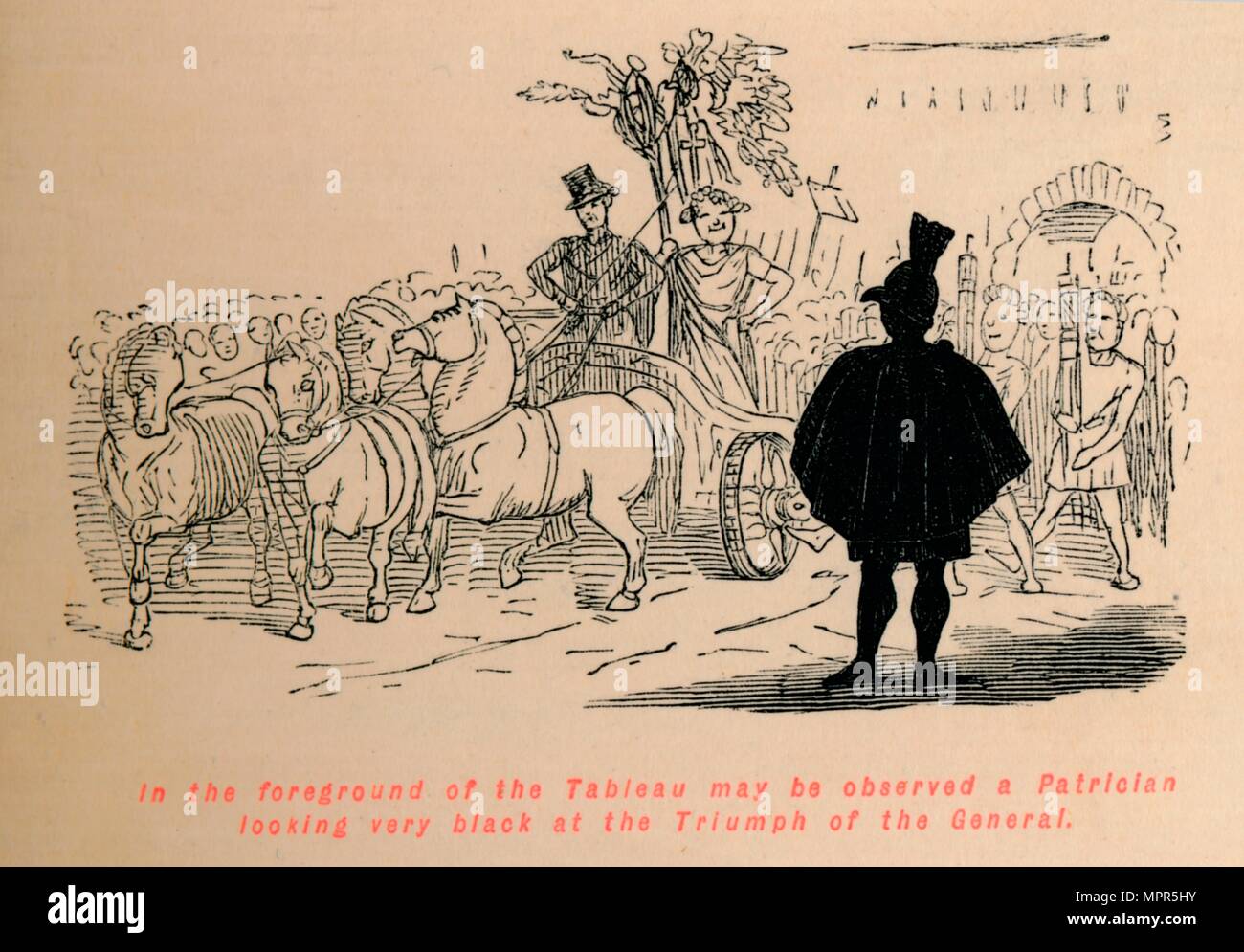 'In the foreground of the Tableau may be observed a Patrician looking very black at the Triumph of t Artist: John Leech. Stock Photohttps://www.alamy.com/image-license-details/?v=1https://www.alamy.com/in-the-foreground-of-the-tableau-may-be-observed-a-patrician-looking-very-black-at-the-triumph-of-t-artist-john-leech-image186135431.html
'In the foreground of the Tableau may be observed a Patrician looking very black at the Triumph of t Artist: John Leech. Stock Photohttps://www.alamy.com/image-license-details/?v=1https://www.alamy.com/in-the-foreground-of-the-tableau-may-be-observed-a-patrician-looking-very-black-at-the-triumph-of-t-artist-john-leech-image186135431.htmlRMMPR5HY–'In the foreground of the Tableau may be observed a Patrician looking very black at the Triumph of t Artist: John Leech.
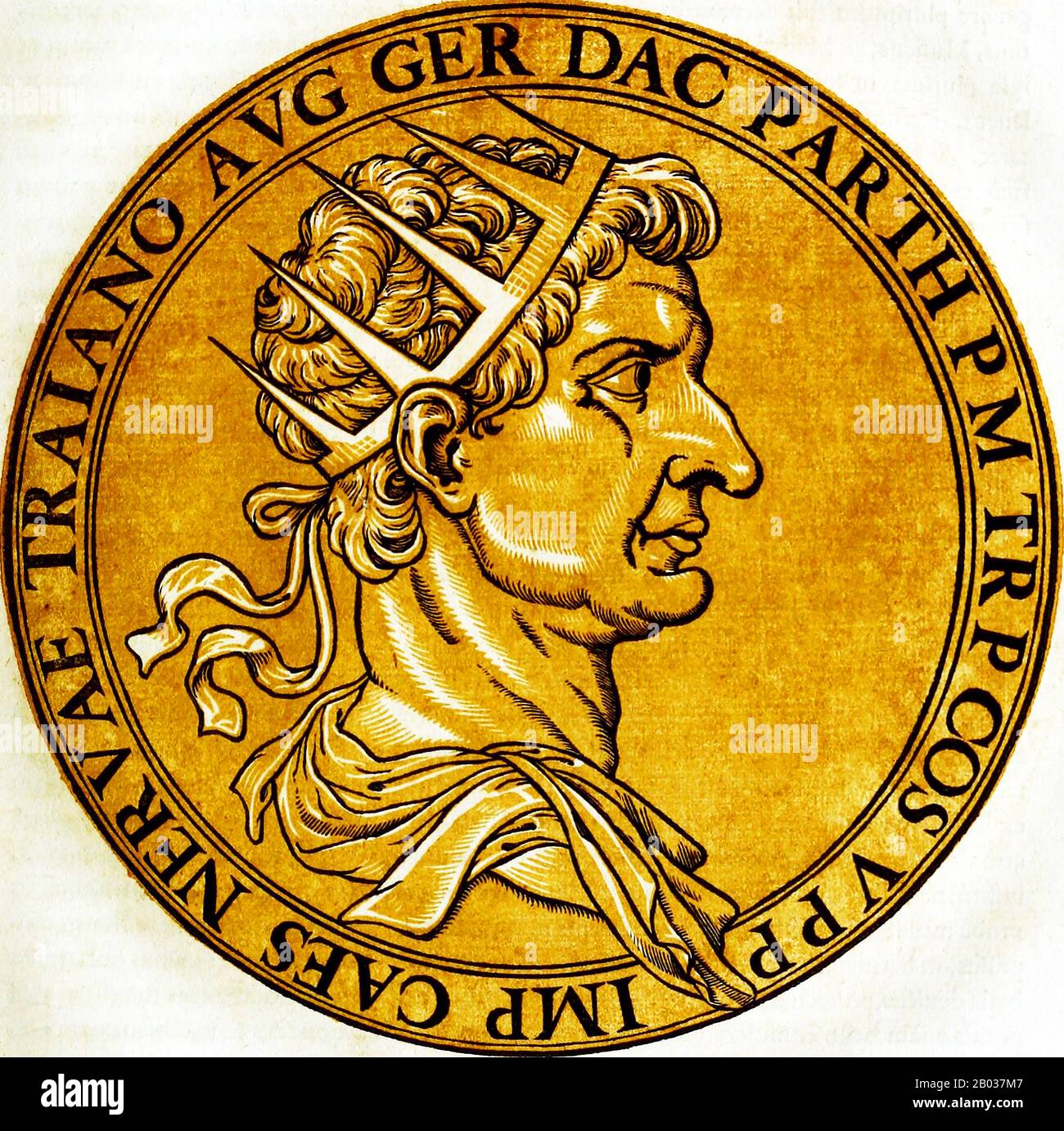 Marcus Ulpius Traianus, Trajan, was born in the province of Hispania Baetica in 53 CE, to a non-patrician family. He rose to prominence during Domitian's reign, and fought in numerous campaigns. He was adopted as Nerva's heir and successor in 97 CE, the emperor compelled to do so by the Praetorian Guard. Trajan became emperor in 98 after his predecessor's death. Trajan is considered one of the greatest emperors of the Roman Empire, with the senate officially declaring him 'optimus princeps', or 'best ruler'. He was a highly successful soldier-emperor who led the greatest military expansion in Stock Photohttps://www.alamy.com/image-license-details/?v=1https://www.alamy.com/marcus-ulpius-traianus-trajan-was-born-in-the-province-of-hispania-baetica-in-53-ce-to-a-non-patrician-family-he-rose-to-prominence-during-domitians-reign-and-fought-in-numerous-campaigns-he-was-adopted-as-nervas-heir-and-successor-in-97-ce-the-emperor-compelled-to-do-so-by-the-praetorian-guard-trajan-became-emperor-in-98-after-his-predecessors-death-trajan-is-considered-one-of-the-greatest-emperors-of-the-roman-empire-with-the-senate-officially-declaring-him-optimus-princeps-or-best-ruler-he-was-a-highly-successful-soldier-emperor-who-led-the-greatest-military-expansion-in-image344279271.html
Marcus Ulpius Traianus, Trajan, was born in the province of Hispania Baetica in 53 CE, to a non-patrician family. He rose to prominence during Domitian's reign, and fought in numerous campaigns. He was adopted as Nerva's heir and successor in 97 CE, the emperor compelled to do so by the Praetorian Guard. Trajan became emperor in 98 after his predecessor's death. Trajan is considered one of the greatest emperors of the Roman Empire, with the senate officially declaring him 'optimus princeps', or 'best ruler'. He was a highly successful soldier-emperor who led the greatest military expansion in Stock Photohttps://www.alamy.com/image-license-details/?v=1https://www.alamy.com/marcus-ulpius-traianus-trajan-was-born-in-the-province-of-hispania-baetica-in-53-ce-to-a-non-patrician-family-he-rose-to-prominence-during-domitians-reign-and-fought-in-numerous-campaigns-he-was-adopted-as-nervas-heir-and-successor-in-97-ce-the-emperor-compelled-to-do-so-by-the-praetorian-guard-trajan-became-emperor-in-98-after-his-predecessors-death-trajan-is-considered-one-of-the-greatest-emperors-of-the-roman-empire-with-the-senate-officially-declaring-him-optimus-princeps-or-best-ruler-he-was-a-highly-successful-soldier-emperor-who-led-the-greatest-military-expansion-in-image344279271.htmlRM2B037M7–Marcus Ulpius Traianus, Trajan, was born in the province of Hispania Baetica in 53 CE, to a non-patrician family. He rose to prominence during Domitian's reign, and fought in numerous campaigns. He was adopted as Nerva's heir and successor in 97 CE, the emperor compelled to do so by the Praetorian Guard. Trajan became emperor in 98 after his predecessor's death. Trajan is considered one of the greatest emperors of the Roman Empire, with the senate officially declaring him 'optimus princeps', or 'best ruler'. He was a highly successful soldier-emperor who led the greatest military expansion in
![Mademoiselle Piccolomini, of Her Majesty's Theatre, 1856. 'Descended from one of the most ancient and most illustrious patrician families of Rome this gifted girl, urged on by an invincible impulse - with that confidence of success which is so often the companion of real genius - cast aside all the prerogatives of her high station, and, despite the tears and the entreaties of her noble relations of the houses of the Piccolomini and the Amalfi...[took to the stage]...Rank, position, fortune, family traditions...were of no avail against the mighty tide of song that surged within the gentle breas Stock Photo Mademoiselle Piccolomini, of Her Majesty's Theatre, 1856. 'Descended from one of the most ancient and most illustrious patrician families of Rome this gifted girl, urged on by an invincible impulse - with that confidence of success which is so often the companion of real genius - cast aside all the prerogatives of her high station, and, despite the tears and the entreaties of her noble relations of the houses of the Piccolomini and the Amalfi...[took to the stage]...Rank, position, fortune, family traditions...were of no avail against the mighty tide of song that surged within the gentle breas Stock Photo](https://c8.alamy.com/comp/2R4DHCK/mademoiselle-piccolomini-of-her-majestys-theatre-1856-descended-from-one-of-the-most-ancient-and-most-illustrious-patrician-families-of-rome-this-gifted-girl-urged-on-by-an-invincible-impulse-with-that-confidence-of-success-which-is-so-often-the-companion-of-real-genius-cast-aside-all-the-prerogatives-of-her-high-station-and-despite-the-tears-and-the-entreaties-of-her-noble-relations-of-the-houses-of-the-piccolomini-and-the-amalfi-took-to-the-stage-rank-position-fortune-family-traditionswere-of-no-avail-against-the-mighty-tide-of-song-that-surged-within-the-gentle-breas-2R4DHCK.jpg) Mademoiselle Piccolomini, of Her Majesty's Theatre, 1856. 'Descended from one of the most ancient and most illustrious patrician families of Rome this gifted girl, urged on by an invincible impulse - with that confidence of success which is so often the companion of real genius - cast aside all the prerogatives of her high station, and, despite the tears and the entreaties of her noble relations of the houses of the Piccolomini and the Amalfi...[took to the stage]...Rank, position, fortune, family traditions...were of no avail against the mighty tide of song that surged within the gentle breas Stock Photohttps://www.alamy.com/image-license-details/?v=1https://www.alamy.com/mademoiselle-piccolomini-of-her-majestys-theatre-1856-descended-from-one-of-the-most-ancient-and-most-illustrious-patrician-families-of-rome-this-gifted-girl-urged-on-by-an-invincible-impulse-with-that-confidence-of-success-which-is-so-often-the-companion-of-real-genius-cast-aside-all-the-prerogatives-of-her-high-station-and-despite-the-tears-and-the-entreaties-of-her-noble-relations-of-the-houses-of-the-piccolomini-and-the-amalfi-took-to-the-stage-rank-position-fortune-family-traditionswere-of-no-avail-against-the-mighty-tide-of-song-that-surged-within-the-gentle-breas-image553489459.html
Mademoiselle Piccolomini, of Her Majesty's Theatre, 1856. 'Descended from one of the most ancient and most illustrious patrician families of Rome this gifted girl, urged on by an invincible impulse - with that confidence of success which is so often the companion of real genius - cast aside all the prerogatives of her high station, and, despite the tears and the entreaties of her noble relations of the houses of the Piccolomini and the Amalfi...[took to the stage]...Rank, position, fortune, family traditions...were of no avail against the mighty tide of song that surged within the gentle breas Stock Photohttps://www.alamy.com/image-license-details/?v=1https://www.alamy.com/mademoiselle-piccolomini-of-her-majestys-theatre-1856-descended-from-one-of-the-most-ancient-and-most-illustrious-patrician-families-of-rome-this-gifted-girl-urged-on-by-an-invincible-impulse-with-that-confidence-of-success-which-is-so-often-the-companion-of-real-genius-cast-aside-all-the-prerogatives-of-her-high-station-and-despite-the-tears-and-the-entreaties-of-her-noble-relations-of-the-houses-of-the-piccolomini-and-the-amalfi-took-to-the-stage-rank-position-fortune-family-traditionswere-of-no-avail-against-the-mighty-tide-of-song-that-surged-within-the-gentle-breas-image553489459.htmlRM2R4DHCK–Mademoiselle Piccolomini, of Her Majesty's Theatre, 1856. 'Descended from one of the most ancient and most illustrious patrician families of Rome this gifted girl, urged on by an invincible impulse - with that confidence of success which is so often the companion of real genius - cast aside all the prerogatives of her high station, and, despite the tears and the entreaties of her noble relations of the houses of the Piccolomini and the Amalfi...[took to the stage]...Rank, position, fortune, family traditions...were of no avail against the mighty tide of song that surged within the gentle breas
 Bronze statue of a drunken faun from the house of the Patrician, Regio IX, Insula VIII. Now in the Museum of Naples. Chromolithograph by J.G. Bach after an illustration by MIss Amy Butts from Emile Presuhn’s Les Plus Belles Peintures de Pompei (The Most Beautiful Paintings of Pompeii), Leipzig, 1881. Stock Photohttps://www.alamy.com/image-license-details/?v=1https://www.alamy.com/stock-image-bronze-statue-of-a-drunken-faun-from-the-house-of-the-patrician-regio-165651722.html
Bronze statue of a drunken faun from the house of the Patrician, Regio IX, Insula VIII. Now in the Museum of Naples. Chromolithograph by J.G. Bach after an illustration by MIss Amy Butts from Emile Presuhn’s Les Plus Belles Peintures de Pompei (The Most Beautiful Paintings of Pompeii), Leipzig, 1881. Stock Photohttps://www.alamy.com/image-license-details/?v=1https://www.alamy.com/stock-image-bronze-statue-of-a-drunken-faun-from-the-house-of-the-patrician-regio-165651722.htmlRMKHE2CX–Bronze statue of a drunken faun from the house of the Patrician, Regio IX, Insula VIII. Now in the Museum of Naples. Chromolithograph by J.G. Bach after an illustration by MIss Amy Butts from Emile Presuhn’s Les Plus Belles Peintures de Pompei (The Most Beautiful Paintings of Pompeii), Leipzig, 1881.
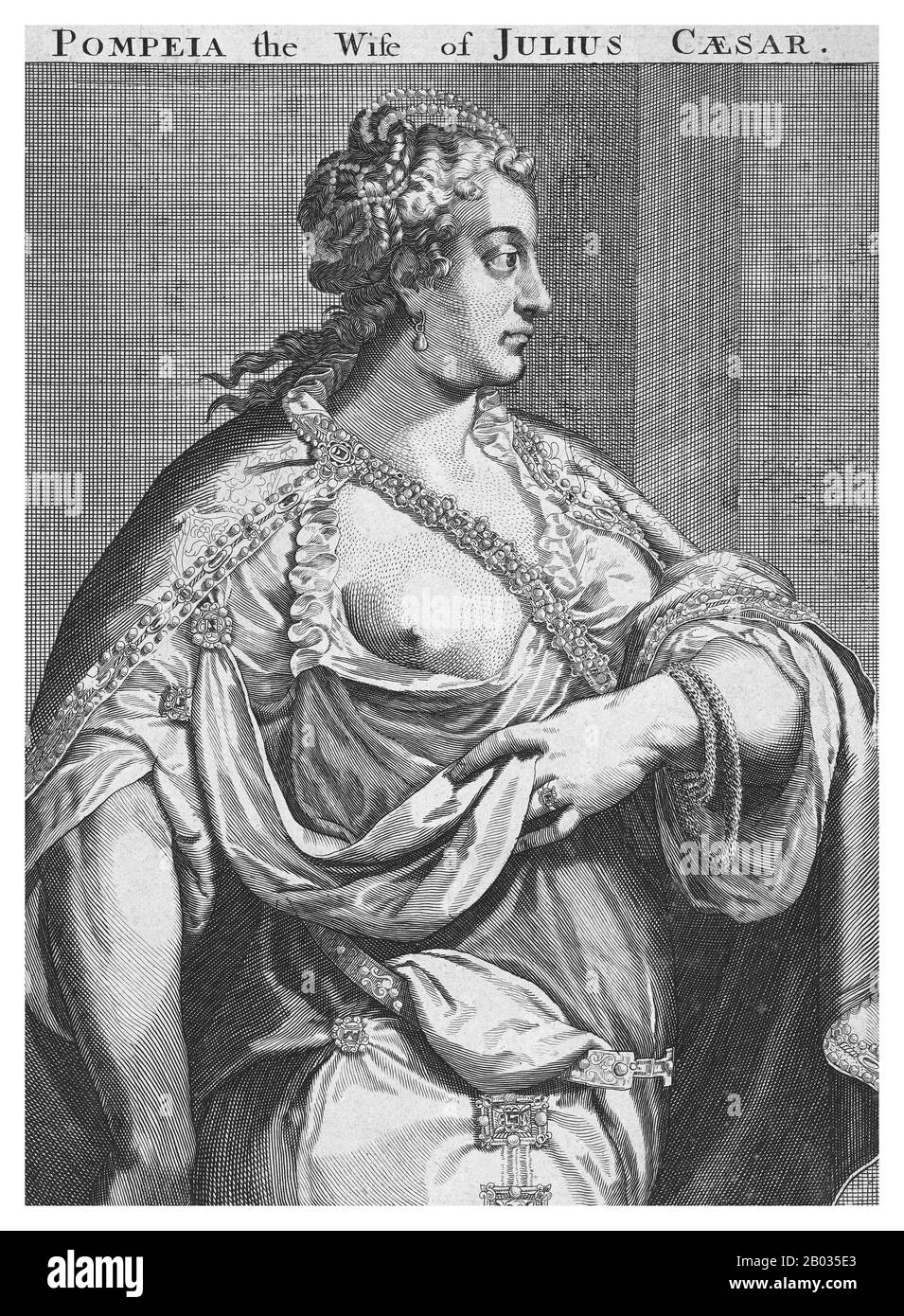 Pompeia (1st Century BCE) was the second wife of Julius Caesar. The two were married in 67 BCE, after Caesar's first wife Cornelia had died the year previous. Not much is known about her, aside from the controversial events surrounding her hosting the festival of the Bona Dea ('good goddess') in 62 BCE, a festival which men were not permitted to attend. Despite this, a young patrician named Publius Clodius Pulcher snuck in disguised as a woman, supposedly to try to seduce Pompeia. He was caught and prosecuted for sacrilege, and Caesar divorced Pompeia, uttering 'my wife ought not even to be un Stock Photohttps://www.alamy.com/image-license-details/?v=1https://www.alamy.com/pompeia-1st-century-bce-was-the-second-wife-of-julius-caesar-the-two-were-married-in-67-bce-after-caesars-first-wife-cornelia-had-died-the-year-previous-not-much-is-known-about-her-aside-from-the-controversial-events-surrounding-her-hosting-the-festival-of-the-bona-dea-good-goddess-in-62-bce-a-festival-which-men-were-not-permitted-to-attend-despite-this-a-young-patrician-named-publius-clodius-pulcher-snuck-in-disguised-as-a-woman-supposedly-to-try-to-seduce-pompeia-he-was-caught-and-prosecuted-for-sacrilege-and-caesar-divorced-pompeia-uttering-my-wife-ought-not-even-to-be-un-image344277531.html
Pompeia (1st Century BCE) was the second wife of Julius Caesar. The two were married in 67 BCE, after Caesar's first wife Cornelia had died the year previous. Not much is known about her, aside from the controversial events surrounding her hosting the festival of the Bona Dea ('good goddess') in 62 BCE, a festival which men were not permitted to attend. Despite this, a young patrician named Publius Clodius Pulcher snuck in disguised as a woman, supposedly to try to seduce Pompeia. He was caught and prosecuted for sacrilege, and Caesar divorced Pompeia, uttering 'my wife ought not even to be un Stock Photohttps://www.alamy.com/image-license-details/?v=1https://www.alamy.com/pompeia-1st-century-bce-was-the-second-wife-of-julius-caesar-the-two-were-married-in-67-bce-after-caesars-first-wife-cornelia-had-died-the-year-previous-not-much-is-known-about-her-aside-from-the-controversial-events-surrounding-her-hosting-the-festival-of-the-bona-dea-good-goddess-in-62-bce-a-festival-which-men-were-not-permitted-to-attend-despite-this-a-young-patrician-named-publius-clodius-pulcher-snuck-in-disguised-as-a-woman-supposedly-to-try-to-seduce-pompeia-he-was-caught-and-prosecuted-for-sacrilege-and-caesar-divorced-pompeia-uttering-my-wife-ought-not-even-to-be-un-image344277531.htmlRM2B035E3–Pompeia (1st Century BCE) was the second wife of Julius Caesar. The two were married in 67 BCE, after Caesar's first wife Cornelia had died the year previous. Not much is known about her, aside from the controversial events surrounding her hosting the festival of the Bona Dea ('good goddess') in 62 BCE, a festival which men were not permitted to attend. Despite this, a young patrician named Publius Clodius Pulcher snuck in disguised as a woman, supposedly to try to seduce Pompeia. He was caught and prosecuted for sacrilege, and Caesar divorced Pompeia, uttering 'my wife ought not even to be un
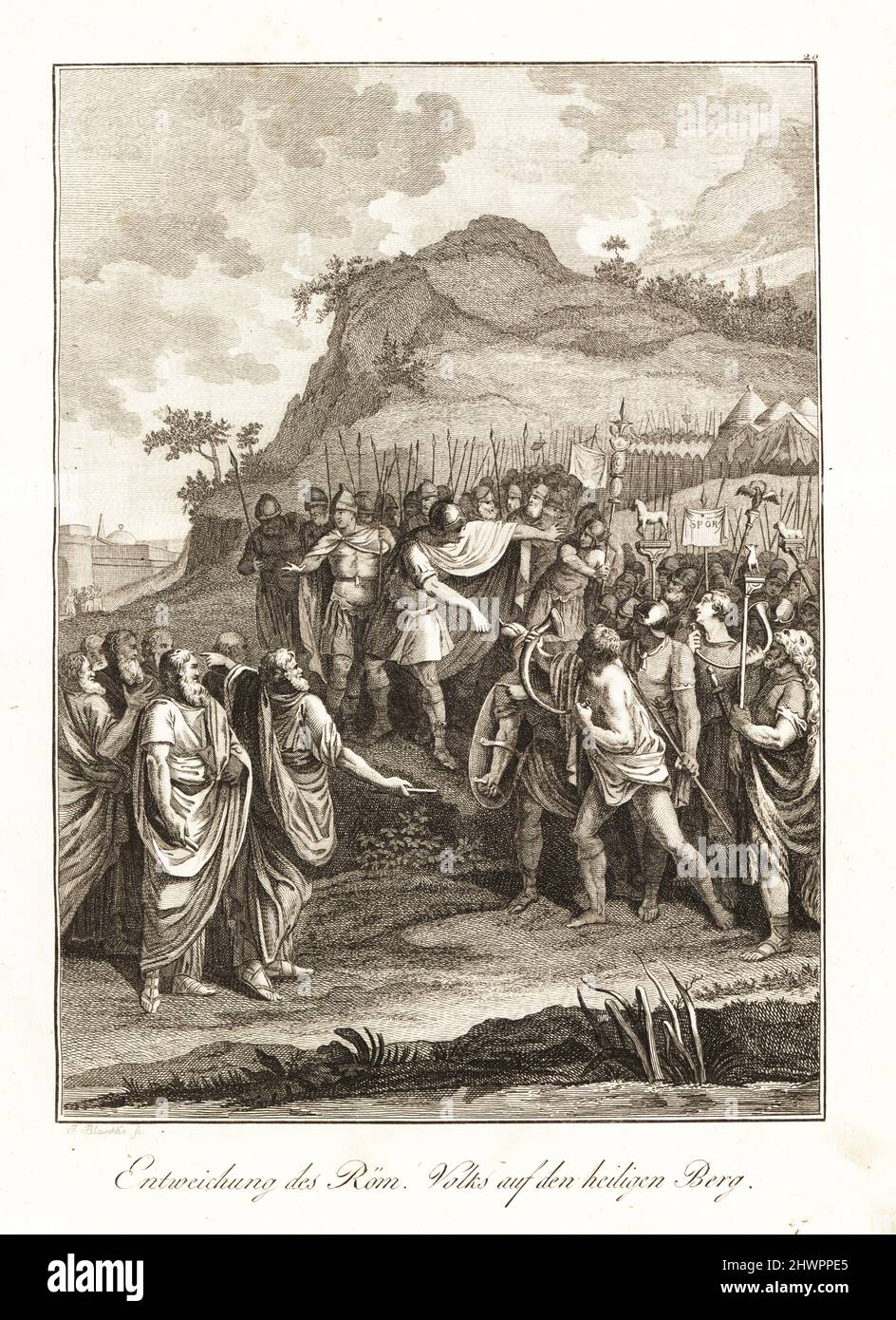 The secession of the Roman plebeians and soldiers to Mons Sacre, 494 BC. Patrician senators negotiate the people's return with a crowd of soldiers and signifers. Retraite du Peuple sur le Mont Sacre. Copperplate engraving by Janos Blaschke after a design by Benjamin Samuel Bolomey from Professor Joseph Rudolf Zappe’s Gemalde aus der romischen Geschichte, Pictures of Roman History, Joseph Schalbacher, Vienna, 1800. German edition of Abbe Claude Francois Xavier Millot’s Abrege de l’Histoire Romaine. Stock Photohttps://www.alamy.com/image-license-details/?v=1https://www.alamy.com/the-secession-of-the-roman-plebeians-and-soldiers-to-mons-sacre-494-bc-patrician-senators-negotiate-the-peoples-return-with-a-crowd-of-soldiers-and-signifers-retraite-du-peuple-sur-le-mont-sacre-copperplate-engraving-by-janos-blaschke-after-a-design-by-benjamin-samuel-bolomey-from-professor-joseph-rudolf-zappes-gemalde-aus-der-romischen-geschichte-pictures-of-roman-history-joseph-schalbacher-vienna-1800-german-edition-of-abbe-claude-francois-xavier-millots-abrege-de-lhistoire-romaine-image463336557.html
The secession of the Roman plebeians and soldiers to Mons Sacre, 494 BC. Patrician senators negotiate the people's return with a crowd of soldiers and signifers. Retraite du Peuple sur le Mont Sacre. Copperplate engraving by Janos Blaschke after a design by Benjamin Samuel Bolomey from Professor Joseph Rudolf Zappe’s Gemalde aus der romischen Geschichte, Pictures of Roman History, Joseph Schalbacher, Vienna, 1800. German edition of Abbe Claude Francois Xavier Millot’s Abrege de l’Histoire Romaine. Stock Photohttps://www.alamy.com/image-license-details/?v=1https://www.alamy.com/the-secession-of-the-roman-plebeians-and-soldiers-to-mons-sacre-494-bc-patrician-senators-negotiate-the-peoples-return-with-a-crowd-of-soldiers-and-signifers-retraite-du-peuple-sur-le-mont-sacre-copperplate-engraving-by-janos-blaschke-after-a-design-by-benjamin-samuel-bolomey-from-professor-joseph-rudolf-zappes-gemalde-aus-der-romischen-geschichte-pictures-of-roman-history-joseph-schalbacher-vienna-1800-german-edition-of-abbe-claude-francois-xavier-millots-abrege-de-lhistoire-romaine-image463336557.htmlRM2HWPPE5–The secession of the Roman plebeians and soldiers to Mons Sacre, 494 BC. Patrician senators negotiate the people's return with a crowd of soldiers and signifers. Retraite du Peuple sur le Mont Sacre. Copperplate engraving by Janos Blaschke after a design by Benjamin Samuel Bolomey from Professor Joseph Rudolf Zappe’s Gemalde aus der romischen Geschichte, Pictures of Roman History, Joseph Schalbacher, Vienna, 1800. German edition of Abbe Claude Francois Xavier Millot’s Abrege de l’Histoire Romaine.
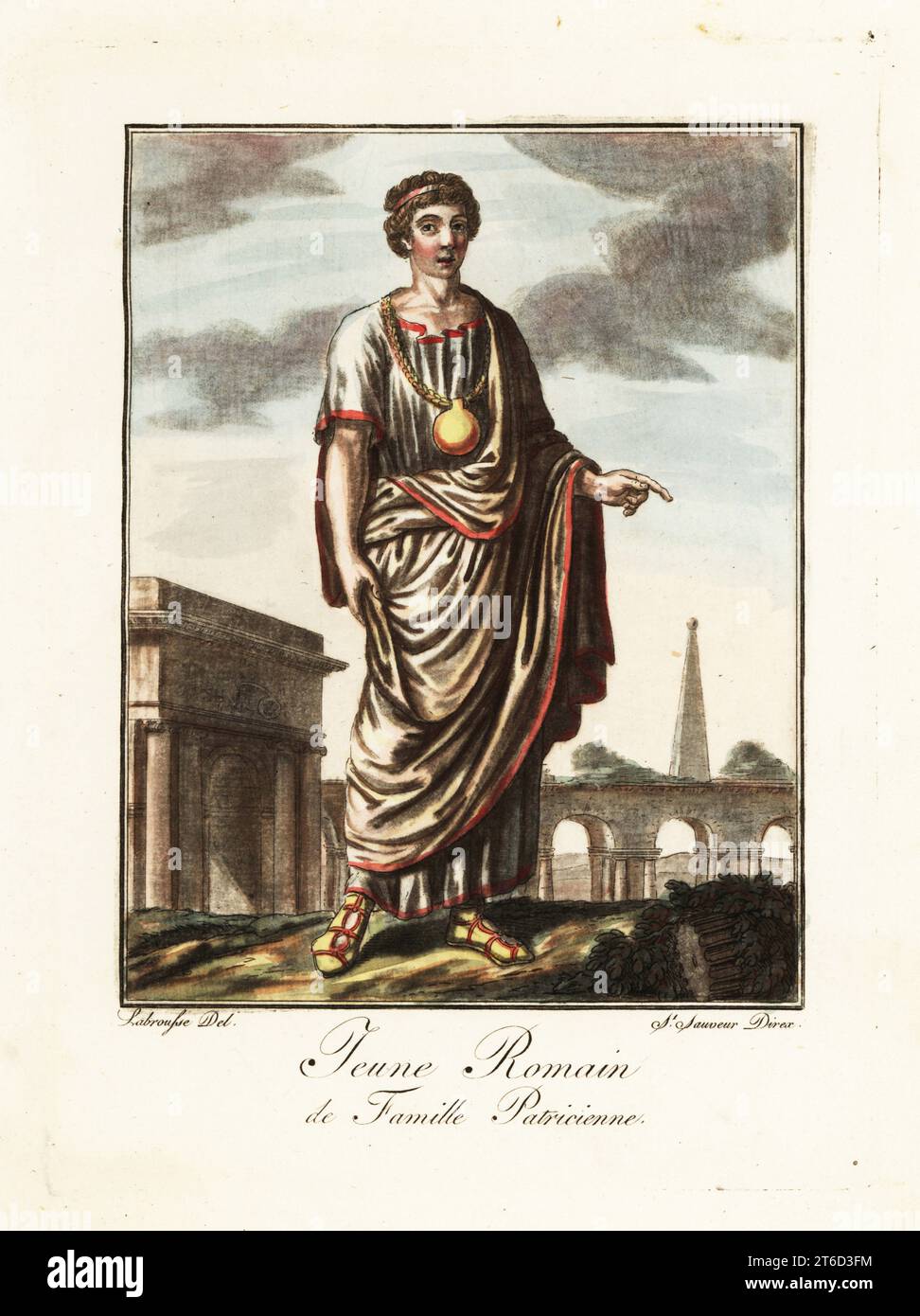 Young man from a Patrician family, ancient Rome. In a robe called a toga virilis or libera, with gold bulla hanging around his neck, yellow and red sandals. In front of an arch, aqueduct and obelisk. Jeune Romain de Famille Patricienne. Handcoloured copperplate drawn and engraved by L. Labrousse, artist of Bordeaux, under the direction of Jacques Grasset de Saint-Sauveur from his Lantique Rome, ou description historique et pittoresque, Ancient Rome, or historical and picturesque description, Chez Deroy, Paris, 1796. Stock Photohttps://www.alamy.com/image-license-details/?v=1https://www.alamy.com/young-man-from-a-patrician-family-ancient-rome-in-a-robe-called-a-toga-virilis-or-libera-with-gold-bulla-hanging-around-his-neck-yellow-and-red-sandals-in-front-of-an-arch-aqueduct-and-obelisk-jeune-romain-de-famille-patricienne-handcoloured-copperplate-drawn-and-engraved-by-l-labrousse-artist-of-bordeaux-under-the-direction-of-jacques-grasset-de-saint-sauveur-from-his-lantique-rome-ou-description-historique-et-pittoresque-ancient-rome-or-historical-and-picturesque-description-chez-deroy-paris-1796-image571918248.html
Young man from a Patrician family, ancient Rome. In a robe called a toga virilis or libera, with gold bulla hanging around his neck, yellow and red sandals. In front of an arch, aqueduct and obelisk. Jeune Romain de Famille Patricienne. Handcoloured copperplate drawn and engraved by L. Labrousse, artist of Bordeaux, under the direction of Jacques Grasset de Saint-Sauveur from his Lantique Rome, ou description historique et pittoresque, Ancient Rome, or historical and picturesque description, Chez Deroy, Paris, 1796. Stock Photohttps://www.alamy.com/image-license-details/?v=1https://www.alamy.com/young-man-from-a-patrician-family-ancient-rome-in-a-robe-called-a-toga-virilis-or-libera-with-gold-bulla-hanging-around-his-neck-yellow-and-red-sandals-in-front-of-an-arch-aqueduct-and-obelisk-jeune-romain-de-famille-patricienne-handcoloured-copperplate-drawn-and-engraved-by-l-labrousse-artist-of-bordeaux-under-the-direction-of-jacques-grasset-de-saint-sauveur-from-his-lantique-rome-ou-description-historique-et-pittoresque-ancient-rome-or-historical-and-picturesque-description-chez-deroy-paris-1796-image571918248.htmlRM2T6D3FM–Young man from a Patrician family, ancient Rome. In a robe called a toga virilis or libera, with gold bulla hanging around his neck, yellow and red sandals. In front of an arch, aqueduct and obelisk. Jeune Romain de Famille Patricienne. Handcoloured copperplate drawn and engraved by L. Labrousse, artist of Bordeaux, under the direction of Jacques Grasset de Saint-Sauveur from his Lantique Rome, ou description historique et pittoresque, Ancient Rome, or historical and picturesque description, Chez Deroy, Paris, 1796.
 Rome greek greece senate or politician clothes happy child wearing roman ancient tunic Stock Vectorhttps://www.alamy.com/image-license-details/?v=1https://www.alamy.com/rome-greek-greece-senate-or-politician-clothes-happy-child-wearing-roman-ancient-tunic-image482396980.html
Rome greek greece senate or politician clothes happy child wearing roman ancient tunic Stock Vectorhttps://www.alamy.com/image-license-details/?v=1https://www.alamy.com/rome-greek-greece-senate-or-politician-clothes-happy-child-wearing-roman-ancient-tunic-image482396980.htmlRF2K0R27G–Rome greek greece senate or politician clothes happy child wearing roman ancient tunic
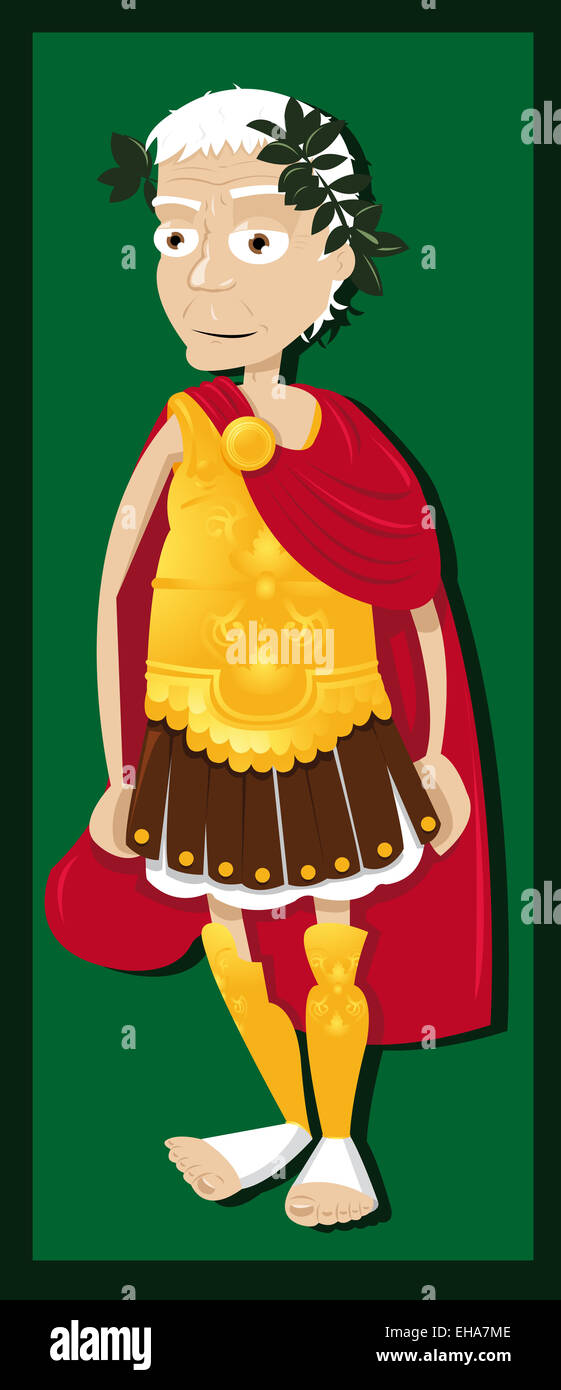 a vector cartoon representing a funny Julius Caesar Stock Photohttps://www.alamy.com/image-license-details/?v=1https://www.alamy.com/stock-photo-a-vector-cartoon-representing-a-funny-julius-caesar-79516206.html
a vector cartoon representing a funny Julius Caesar Stock Photohttps://www.alamy.com/image-license-details/?v=1https://www.alamy.com/stock-photo-a-vector-cartoon-representing-a-funny-julius-caesar-79516206.htmlRFEHA7ME–a vector cartoon representing a funny Julius Caesar
 LIDO DI OSTIA – ROME, Via dei Lucilii takes its name from the gens Lucilia, an ancient Roman patrician family of senatorial rank, Ostia Lido, Rome, It Stock Photohttps://www.alamy.com/image-license-details/?v=1https://www.alamy.com/lido-di-ostia-rome-via-dei-lucilii-takes-its-name-from-the-gens-lucilia-an-ancient-roman-patrician-family-of-senatorial-rank-ostia-lido-rome-it-image623189973.html
LIDO DI OSTIA – ROME, Via dei Lucilii takes its name from the gens Lucilia, an ancient Roman patrician family of senatorial rank, Ostia Lido, Rome, It Stock Photohttps://www.alamy.com/image-license-details/?v=1https://www.alamy.com/lido-di-ostia-rome-via-dei-lucilii-takes-its-name-from-the-gens-lucilia-an-ancient-roman-patrician-family-of-senatorial-rank-ostia-lido-rome-it-image623189973.htmlRM2Y5TN4N–LIDO DI OSTIA – ROME, Via dei Lucilii takes its name from the gens Lucilia, an ancient Roman patrician family of senatorial rank, Ostia Lido, Rome, It
 Italy, Herculaneum. House of the Deer (Casa dei Cervi). Patrician mansion built in the 1st century AD. La Campania. Stock Photohttps://www.alamy.com/image-license-details/?v=1https://www.alamy.com/italy-herculaneum-house-of-the-deer-casa-dei-cervi-patrician-mansion-built-in-the-1st-century-ad-la-campania-image447937295.html
Italy, Herculaneum. House of the Deer (Casa dei Cervi). Patrician mansion built in the 1st century AD. La Campania. Stock Photohttps://www.alamy.com/image-license-details/?v=1https://www.alamy.com/italy-herculaneum-house-of-the-deer-casa-dei-cervi-patrician-mansion-built-in-the-1st-century-ad-la-campania-image447937295.htmlRM2H0N8GF–Italy, Herculaneum. House of the Deer (Casa dei Cervi). Patrician mansion built in the 1st century AD. La Campania.
 Ancient civilization toga . Stock Vectorhttps://www.alamy.com/image-license-details/?v=1https://www.alamy.com/ancient-civilization-toga-image475393263.html
Ancient civilization toga . Stock Vectorhttps://www.alamy.com/image-license-details/?v=1https://www.alamy.com/ancient-civilization-toga-image475393263.htmlRF2JHC0XR–Ancient civilization toga .
 Ancient man in toga. Male wear traditional roman or greek clothes. Old philosophy character, senior thinking metaphysics and reflection, recent vector Stock Vectorhttps://www.alamy.com/image-license-details/?v=1https://www.alamy.com/ancient-man-in-toga-male-wear-traditional-roman-or-greek-clothes-old-philosophy-character-senior-thinking-metaphysics-and-reflection-recent-vector-image516681582.html
Ancient man in toga. Male wear traditional roman or greek clothes. Old philosophy character, senior thinking metaphysics and reflection, recent vector Stock Vectorhttps://www.alamy.com/image-license-details/?v=1https://www.alamy.com/ancient-man-in-toga-male-wear-traditional-roman-or-greek-clothes-old-philosophy-character-senior-thinking-metaphysics-and-reflection-recent-vector-image516681582.htmlRF2N0GTHJ–Ancient man in toga. Male wear traditional roman or greek clothes. Old philosophy character, senior thinking metaphysics and reflection, recent vector
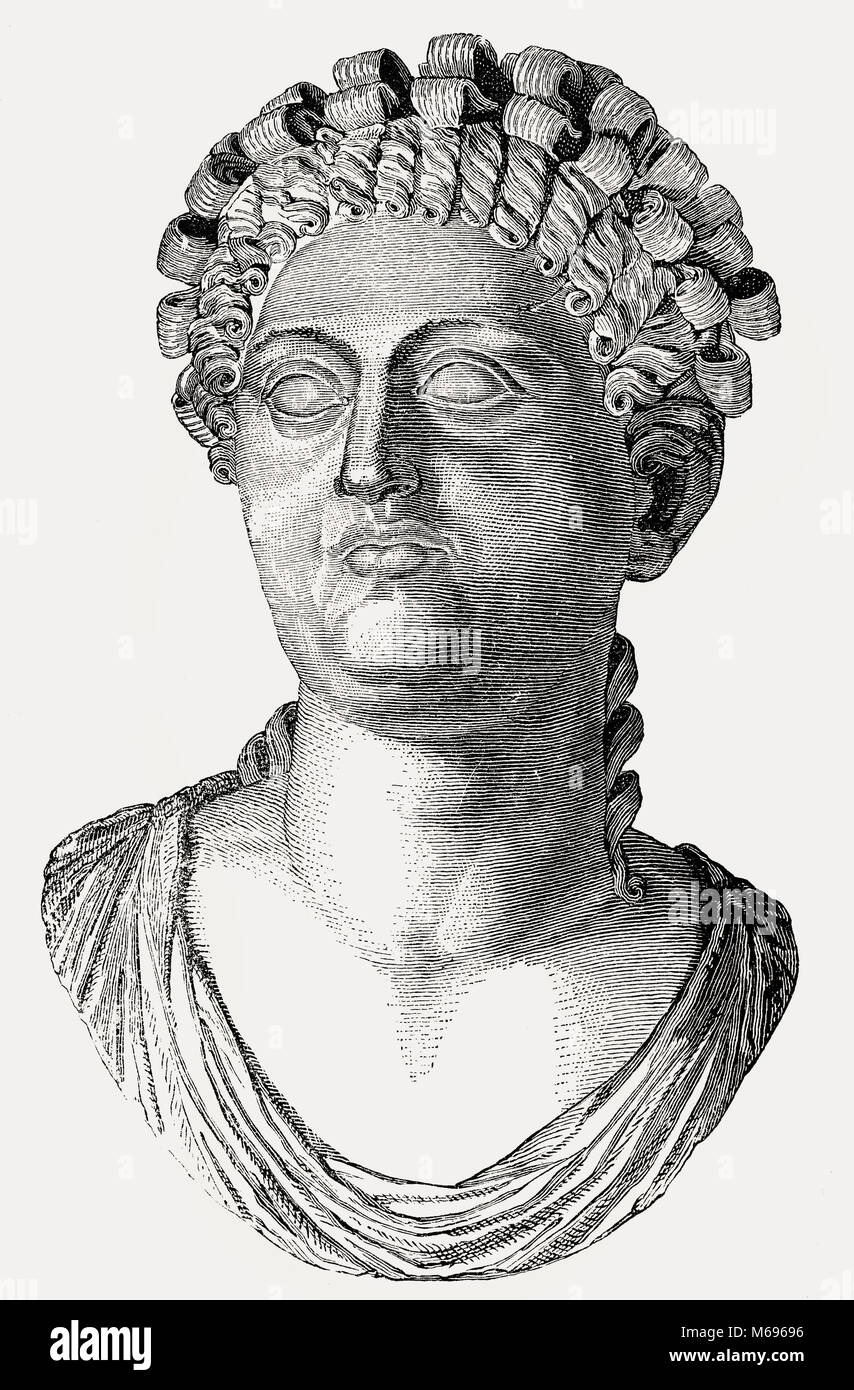 Statilia Messalina, c. AD 35 – after AD 68, third wife to Roman Emperor Nero Stock Photohttps://www.alamy.com/image-license-details/?v=1https://www.alamy.com/stock-photo-statilia-messalina-c-ad-35-after-ad-68-third-wife-to-roman-emperor-175994146.html
Statilia Messalina, c. AD 35 – after AD 68, third wife to Roman Emperor Nero Stock Photohttps://www.alamy.com/image-license-details/?v=1https://www.alamy.com/stock-photo-statilia-messalina-c-ad-35-after-ad-68-third-wife-to-roman-emperor-175994146.htmlRMM69696–Statilia Messalina, c. AD 35 – after AD 68, third wife to Roman Emperor Nero
 Original artwork of Camillus' Banishment, a Roman soldier and statesman of patrician descent. Published in A pictorial history of the world's great na Stock Photohttps://www.alamy.com/image-license-details/?v=1https://www.alamy.com/original-artwork-of-camillus-banishment-a-roman-soldier-and-statesman-of-patrician-descent-published-in-a-pictorial-history-of-the-worlds-great-na-image389485105.html
Original artwork of Camillus' Banishment, a Roman soldier and statesman of patrician descent. Published in A pictorial history of the world's great na Stock Photohttps://www.alamy.com/image-license-details/?v=1https://www.alamy.com/original-artwork-of-camillus-banishment-a-roman-soldier-and-statesman-of-patrician-descent-published-in-a-pictorial-history-of-the-worlds-great-na-image389485105.htmlRF2DHJG69–Original artwork of Camillus' Banishment, a Roman soldier and statesman of patrician descent. Published in A pictorial history of the world's great na
 Titus Quinctius Flamininus, c. 229–174 BC, a Roman politician and general Stock Photohttps://www.alamy.com/image-license-details/?v=1https://www.alamy.com/titus-quinctius-flamininus-c-229174-bc-a-roman-politician-and-general-image186373744.html
Titus Quinctius Flamininus, c. 229–174 BC, a Roman politician and general Stock Photohttps://www.alamy.com/image-license-details/?v=1https://www.alamy.com/titus-quinctius-flamininus-c-229174-bc-a-roman-politician-and-general-image186373744.htmlRMMR61H4–Titus Quinctius Flamininus, c. 229–174 BC, a Roman politician and general
 Vatican/Vatican City; September 8 2017: Casina Pio IV, patrician villa in vatican gardens, with blue sky Stock Photohttps://www.alamy.com/image-license-details/?v=1https://www.alamy.com/vaticanvatican-city-september-8-2017-casina-pio-iv-patrician-villa-in-vatican-gardens-with-blue-sky-image345341942.html
Vatican/Vatican City; September 8 2017: Casina Pio IV, patrician villa in vatican gardens, with blue sky Stock Photohttps://www.alamy.com/image-license-details/?v=1https://www.alamy.com/vaticanvatican-city-september-8-2017-casina-pio-iv-patrician-villa-in-vatican-gardens-with-blue-sky-image345341942.htmlRF2B1RK4P–Vatican/Vatican City; September 8 2017: Casina Pio IV, patrician villa in vatican gardens, with blue sky
 Ancient rome characters. Historic roman greek people greece civilization, gladiator auxiliary soldier caesar emperor hierarchy aristocrat in toga, recent vector illustration of ancient character greek Stock Vectorhttps://www.alamy.com/image-license-details/?v=1https://www.alamy.com/ancient-rome-characters-historic-roman-greek-people-greece-civilization-gladiator-auxiliary-soldier-caesar-emperor-hierarchy-aristocrat-in-toga-recent-vector-illustration-of-ancient-character-greek-image609372300.html
Ancient rome characters. Historic roman greek people greece civilization, gladiator auxiliary soldier caesar emperor hierarchy aristocrat in toga, recent vector illustration of ancient character greek Stock Vectorhttps://www.alamy.com/image-license-details/?v=1https://www.alamy.com/ancient-rome-characters-historic-roman-greek-people-greece-civilization-gladiator-auxiliary-soldier-caesar-emperor-hierarchy-aristocrat-in-toga-recent-vector-illustration-of-ancient-character-greek-image609372300.htmlRF2XBB8GC–Ancient rome characters. Historic roman greek people greece civilization, gladiator auxiliary soldier caesar emperor hierarchy aristocrat in toga, recent vector illustration of ancient character greek
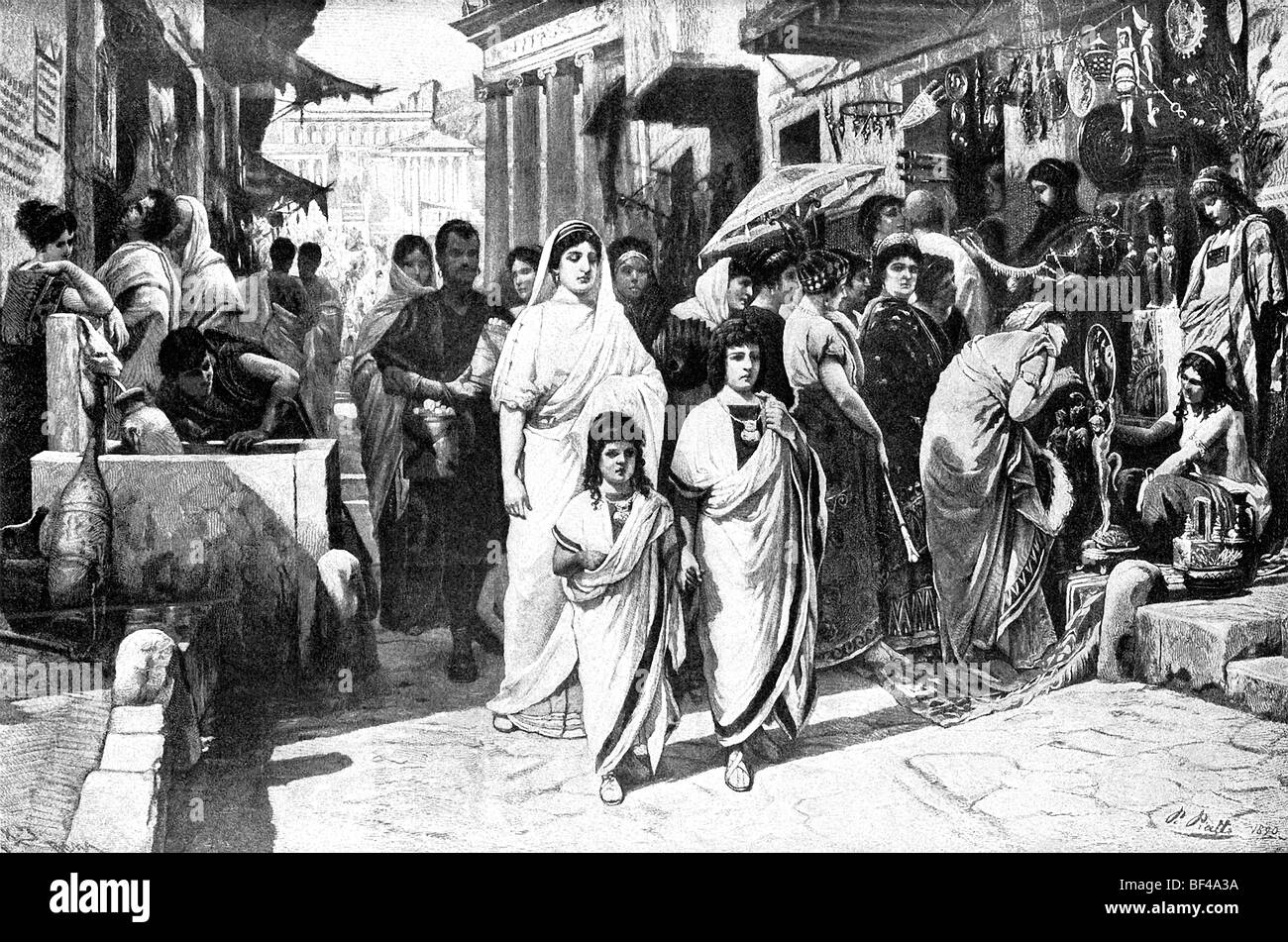 The Roman patrician Cornelia walks with her sons, Tiberius and Caius Gracchus. Each boy wears a bulla. Stock Photohttps://www.alamy.com/image-license-details/?v=1https://www.alamy.com/stock-photo-the-roman-patrician-cornelia-walks-with-her-sons-tiberius-and-caius-26525950.html
The Roman patrician Cornelia walks with her sons, Tiberius and Caius Gracchus. Each boy wears a bulla. Stock Photohttps://www.alamy.com/image-license-details/?v=1https://www.alamy.com/stock-photo-the-roman-patrician-cornelia-walks-with-her-sons-tiberius-and-caius-26525950.htmlRFBF4A3A–The Roman patrician Cornelia walks with her sons, Tiberius and Caius Gracchus. Each boy wears a bulla.
 Ancient coin with the head of Pompeius Roman consul Stock Photohttps://www.alamy.com/image-license-details/?v=1https://www.alamy.com/ancient-coin-with-the-head-of-pompeius-roman-consul-image456797439.html
Ancient coin with the head of Pompeius Roman consul Stock Photohttps://www.alamy.com/image-license-details/?v=1https://www.alamy.com/ancient-coin-with-the-head-of-pompeius-roman-consul-image456797439.htmlRM2HF4WP7–Ancient coin with the head of Pompeius Roman consul
 A shrine of Plebeian Chastity is set up by Virginia, who had been refused access to the shrine of Patrician Chastity because she had married Volumnius, a plebeian. She set up the shrine in her own house. Colourised version of : 10006600 Date: 297 BC Stock Photohttps://www.alamy.com/image-license-details/?v=1https://www.alamy.com/a-shrine-of-plebeian-chastity-is-set-up-by-virginia-who-had-been-refused-access-to-the-shrine-of-patrician-chastity-because-she-had-married-volumnius-a-plebeian-she-set-up-the-shrine-in-her-own-house-colourised-version-of-10006600-date-297-bc-image472807226.html
A shrine of Plebeian Chastity is set up by Virginia, who had been refused access to the shrine of Patrician Chastity because she had married Volumnius, a plebeian. She set up the shrine in her own house. Colourised version of : 10006600 Date: 297 BC Stock Photohttps://www.alamy.com/image-license-details/?v=1https://www.alamy.com/a-shrine-of-plebeian-chastity-is-set-up-by-virginia-who-had-been-refused-access-to-the-shrine-of-patrician-chastity-because-she-had-married-volumnius-a-plebeian-she-set-up-the-shrine-in-her-own-house-colourised-version-of-10006600-date-297-bc-image472807226.htmlRM2JD66CA–A shrine of Plebeian Chastity is set up by Virginia, who had been refused access to the shrine of Patrician Chastity because she had married Volumnius, a plebeian. She set up the shrine in her own house. Colourised version of : 10006600 Date: 297 BC
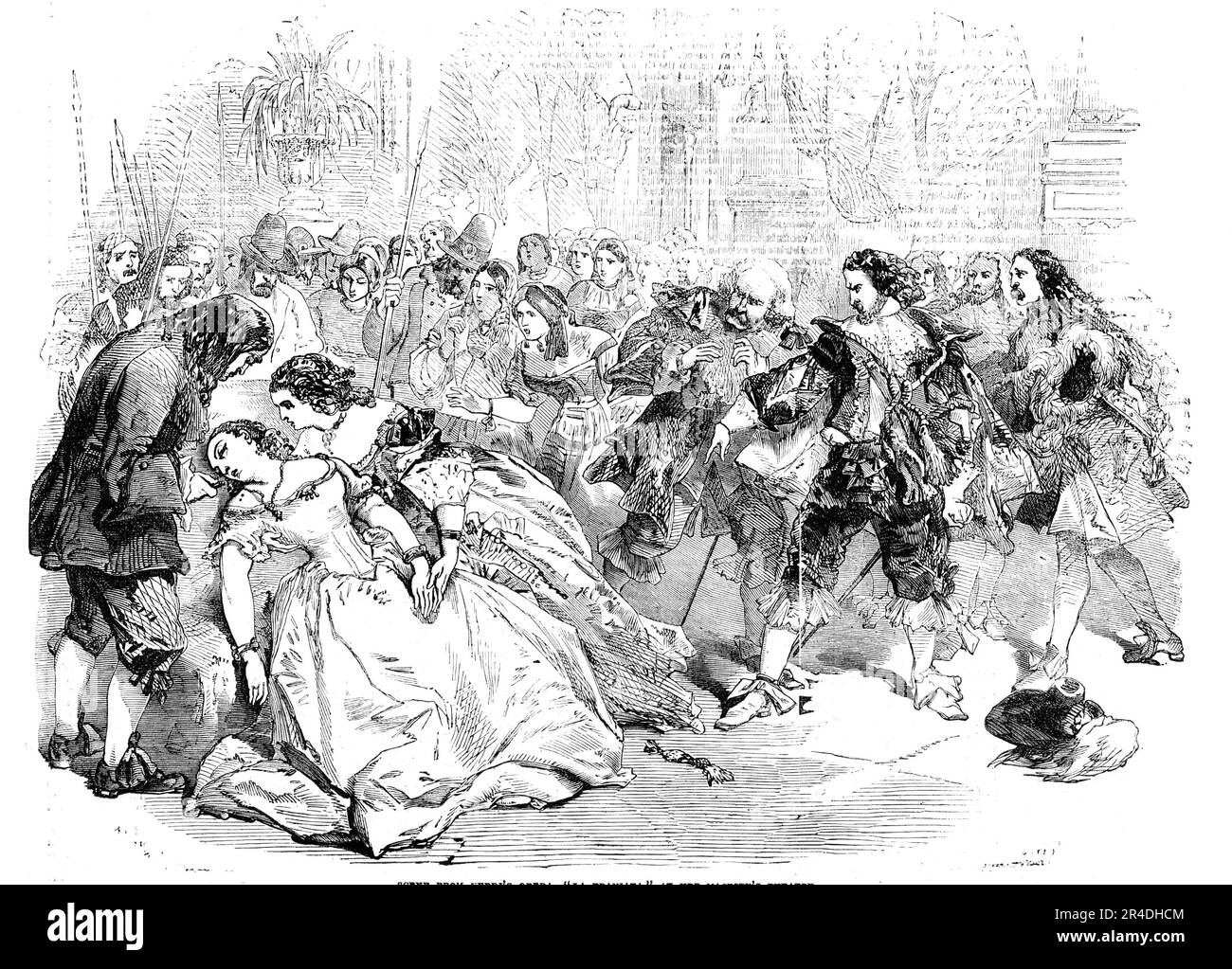 Scene from Verdi's Opera, "La Traviata", at Her Majesty's Theatre, 1856. Opera singer Marietta Piccolomini was '...Descended from one of the most ancient and most illustrious patrician families of Rome...this gifted girl, urged on by an invincible impulse - with that confidence of success which is so often the companion of real genius - cast aside all the prerogatives of her high station, and, despite the tears and the entreaties of her noble relations of the houses of the Piccolomini and the Amalfi, she made her debut...Her success has been most brilliant. Her voice is exquisitely s Stock Photohttps://www.alamy.com/image-license-details/?v=1https://www.alamy.com/scene-from-verdis-opera-quotla-traviataquot-at-her-majestys-theatre-1856-opera-singer-marietta-piccolomini-was-descended-from-one-of-the-most-ancient-and-most-illustrious-patrician-families-of-romethis-gifted-girl-urged-on-by-an-invincible-impulse-with-that-confidence-of-success-which-is-so-often-the-companion-of-real-genius-cast-aside-all-the-prerogatives-of-her-high-station-and-despite-the-tears-and-the-entreaties-of-her-noble-relations-of-the-houses-of-the-piccolomini-and-the-amalfi-she-made-her-debuther-success-has-been-most-brilliant-her-voice-is-exquisitely-s-image553489460.html
Scene from Verdi's Opera, "La Traviata", at Her Majesty's Theatre, 1856. Opera singer Marietta Piccolomini was '...Descended from one of the most ancient and most illustrious patrician families of Rome...this gifted girl, urged on by an invincible impulse - with that confidence of success which is so often the companion of real genius - cast aside all the prerogatives of her high station, and, despite the tears and the entreaties of her noble relations of the houses of the Piccolomini and the Amalfi, she made her debut...Her success has been most brilliant. Her voice is exquisitely s Stock Photohttps://www.alamy.com/image-license-details/?v=1https://www.alamy.com/scene-from-verdis-opera-quotla-traviataquot-at-her-majestys-theatre-1856-opera-singer-marietta-piccolomini-was-descended-from-one-of-the-most-ancient-and-most-illustrious-patrician-families-of-romethis-gifted-girl-urged-on-by-an-invincible-impulse-with-that-confidence-of-success-which-is-so-often-the-companion-of-real-genius-cast-aside-all-the-prerogatives-of-her-high-station-and-despite-the-tears-and-the-entreaties-of-her-noble-relations-of-the-houses-of-the-piccolomini-and-the-amalfi-she-made-her-debuther-success-has-been-most-brilliant-her-voice-is-exquisitely-s-image553489460.htmlRM2R4DHCM–Scene from Verdi's Opera, "La Traviata", at Her Majesty's Theatre, 1856. Opera singer Marietta Piccolomini was '...Descended from one of the most ancient and most illustrious patrician families of Rome...this gifted girl, urged on by an invincible impulse - with that confidence of success which is so often the companion of real genius - cast aside all the prerogatives of her high station, and, despite the tears and the entreaties of her noble relations of the houses of the Piccolomini and the Amalfi, she made her debut...Her success has been most brilliant. Her voice is exquisitely s
